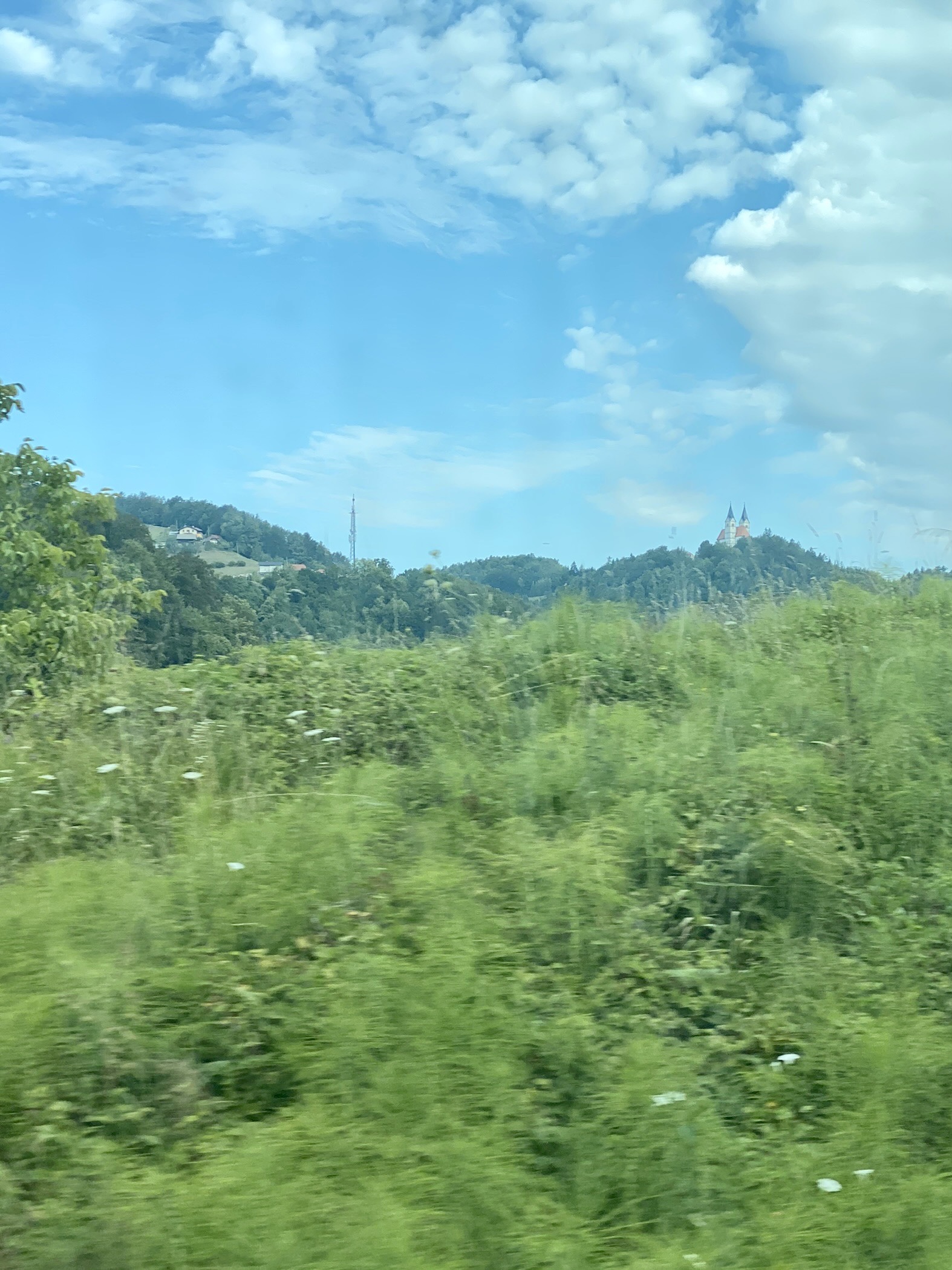
Slovenia is a small country located east of Italy and south of Austria, with a very short Adriatic coastline on the Istrian Peninsula, just north of Croatia. Slovenia has been high on Tammy’s places to visit because of the beauty of the country and the wine culture. She was inspired by Arden PDX/Kelsey’s two wine talks, which we rewatched prior to entering the country.
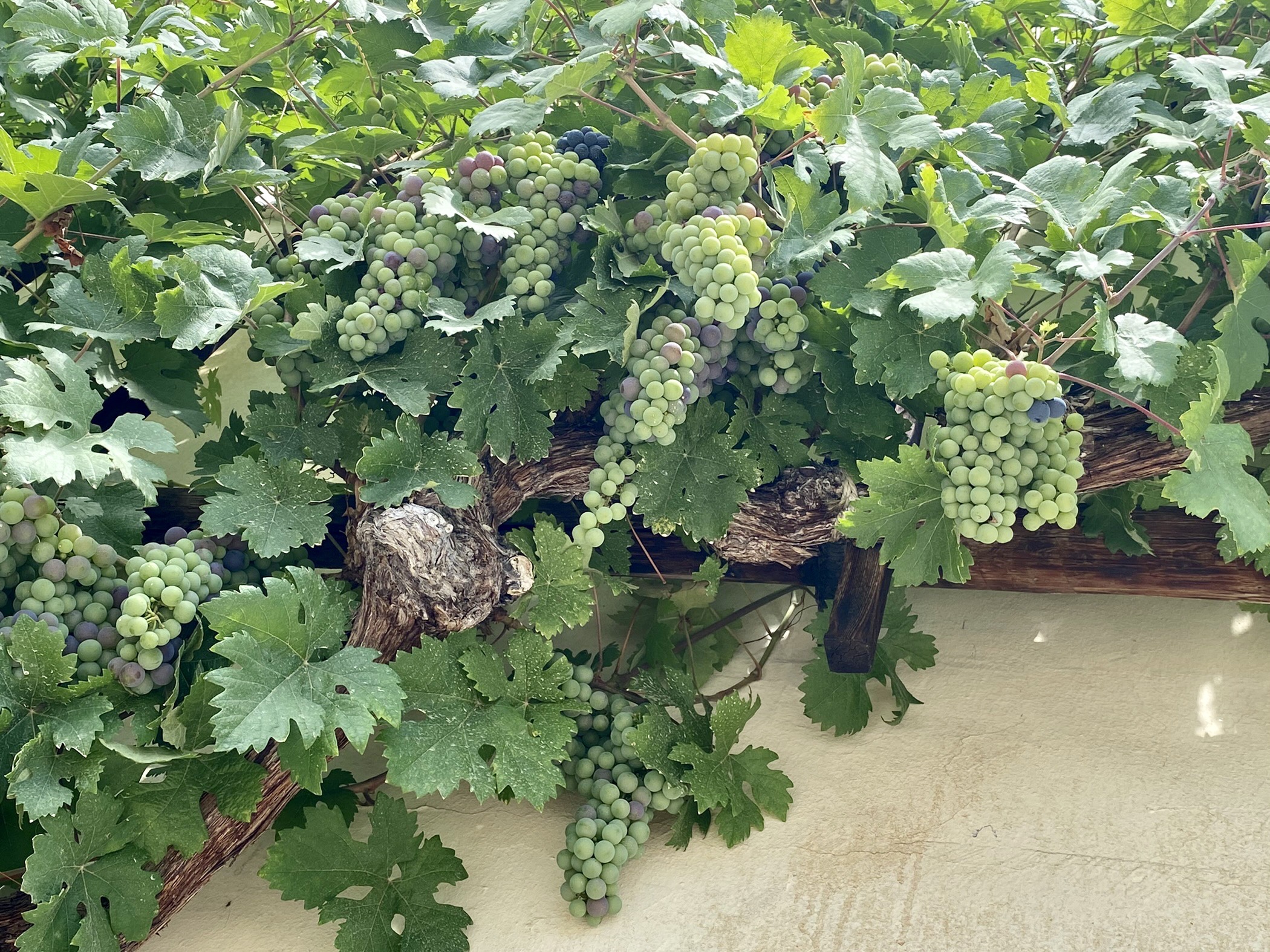
Slovenia also made the list as it was part of our charted path from London to Bulgaria. The flights directly from London were ridiculously expensive because of summer holiday. We researched bus routes in the Balkans and discovered a route from Croatia that went through Slovenia. So, we flew to Pula at a fraction of the cost knowing we would bus to Slovenia and then bus to Bulgaria from there.
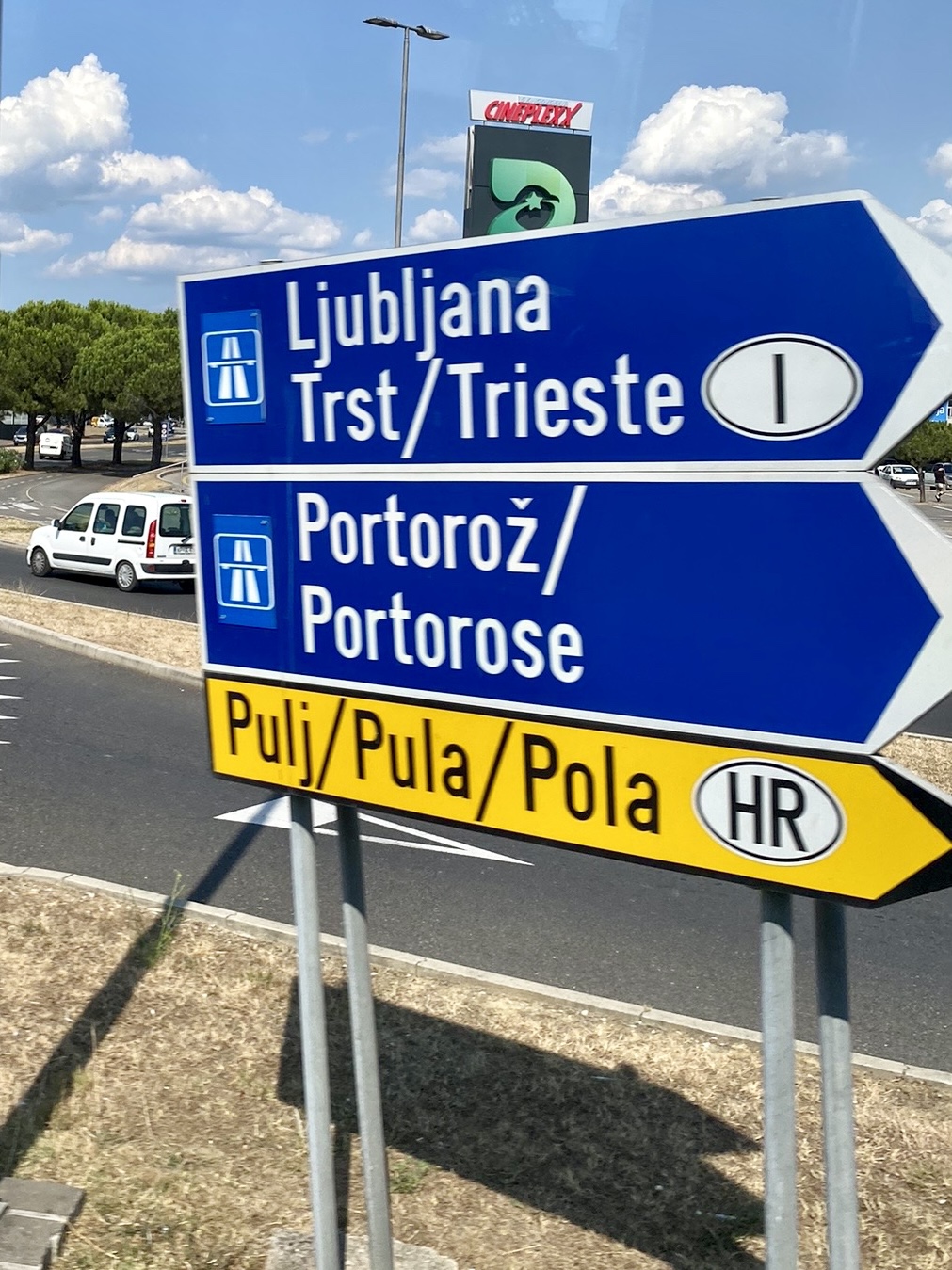
While both Pula and Ljubljana have airports, they do not have connections that made sense from a time or financial perspective. Nor does the rail system connect the two cities well. So we rode a Flixbus!
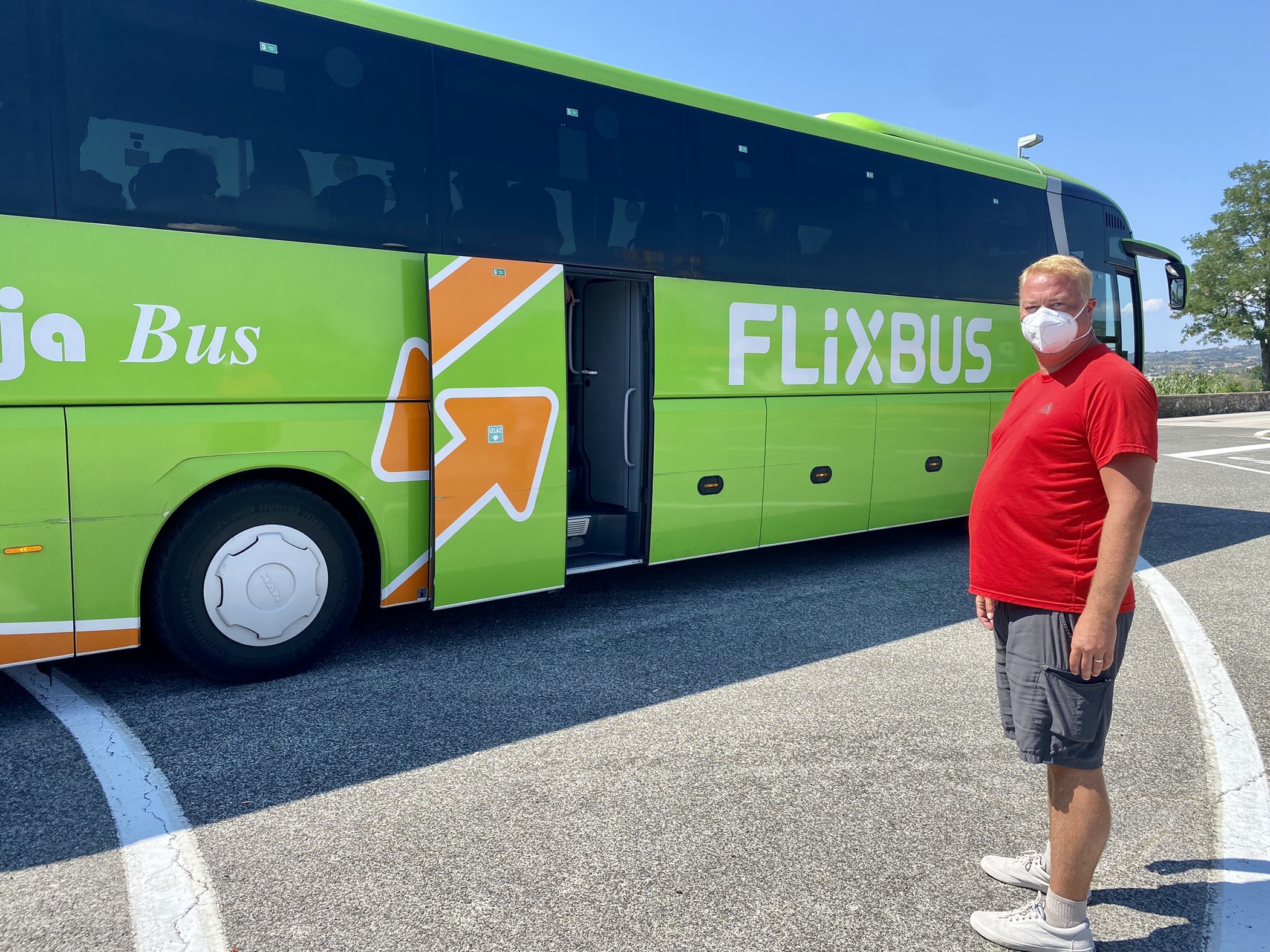
On the way there, the driver took two wrong turns, which amused me as I watched the route on Google Maps. Tammy was less amused. On the plus side, the route ran through some of the Istrian coastal towns, both Croatian and Slovenian. We bookmarked Koper, Slovenia as a potential place to visit in the future.
The Slovenians were extremely friendly and hospitable! English is very common, at least enough for transactions, but also enough that we had a number of pleasant conversations with local folks. When we had a small issue with our train, the ticket clerk said genuinely that she hoped it would not sour our experience of Slovenia.
The insect population, however, is not friendly. Almost every time we sat outdoors, we were molested by multiple wasps. They buzzed our sausages and swam in our beer. We were never stung but they were pesky and all-too-common. We were also hit by what we think were no-see-ums: we did not see many mosquitos but at certain times were definitely getting bit by something. Just a peril of eating outdoors in good weather, I suppose. And if that’s out top complaint then you know that everything went well.
Ljubljana, Slovenia
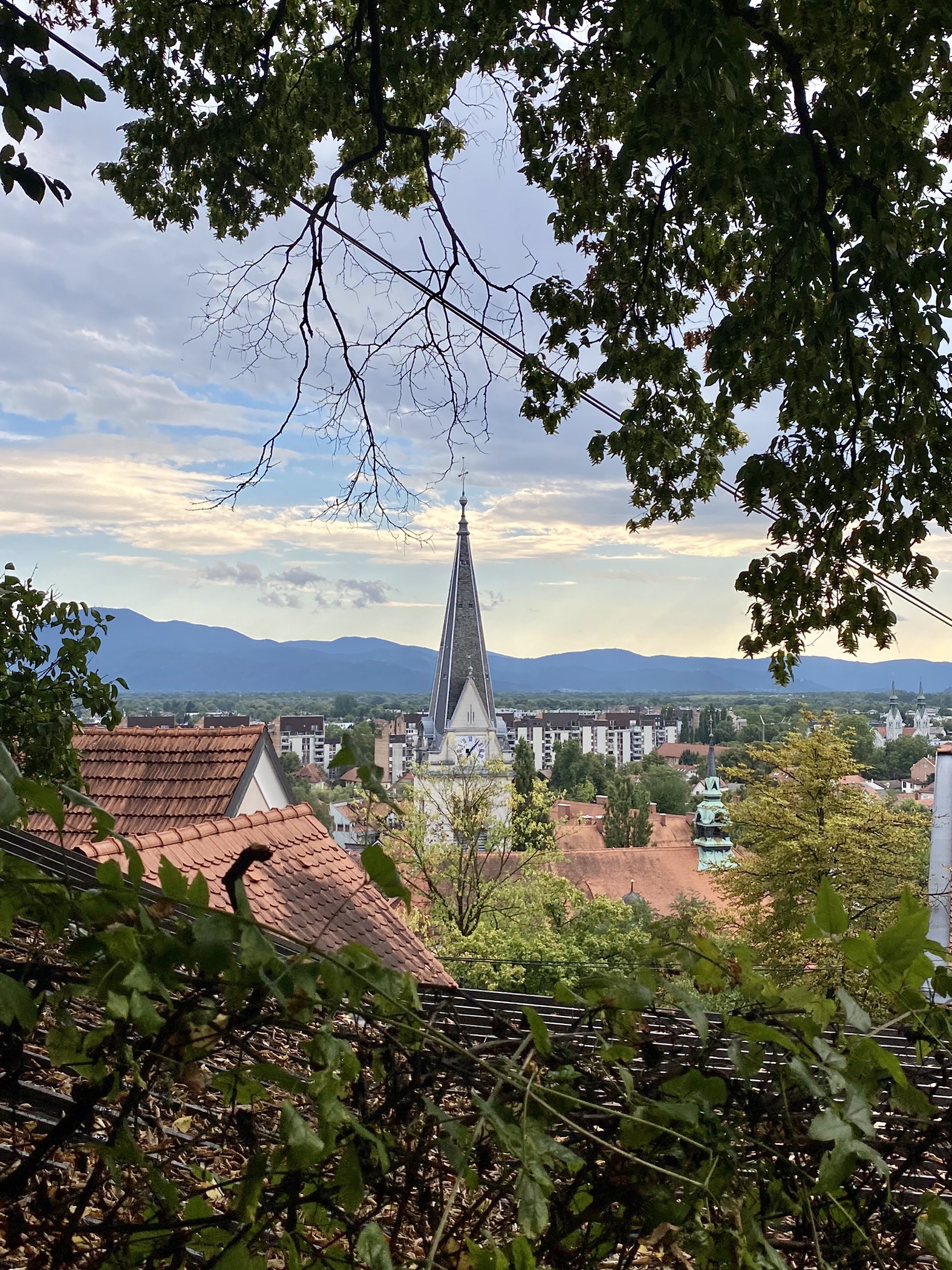
Ljubljana is the “big city” in Slovenia. But it was only the fifth largest city in Yugoslavia, to put it in perspective. It has the development and density of a large city but is small enough to be easily walkable.
The city is centered around the Ljubljanica River, a tributary of the Danube. The city has been well-designed to activate both sides of the river, with huge and busy restaurant terraces as well as the central market located on the pedestrian-friendly banks. Frequent bridges mean that one can easily zig-zag across, passing by musicians playing on the bridges as boats go by below. The most famous bridge is the Dragon Bridge, and the dragon is legendary as the protector of the city.
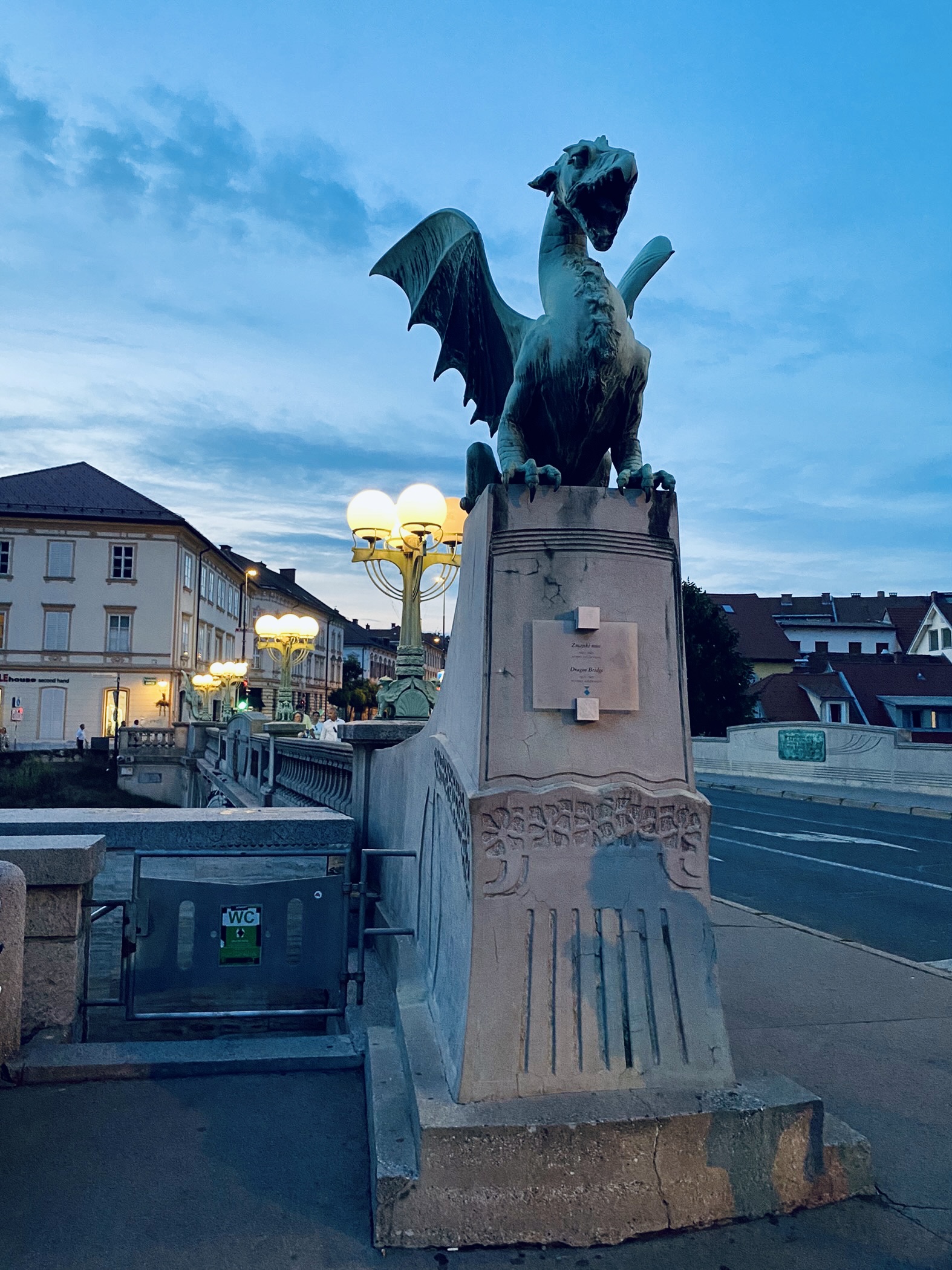
While not a canal city, the way the city flows around the small, calm river reminded us of Amsterdam.
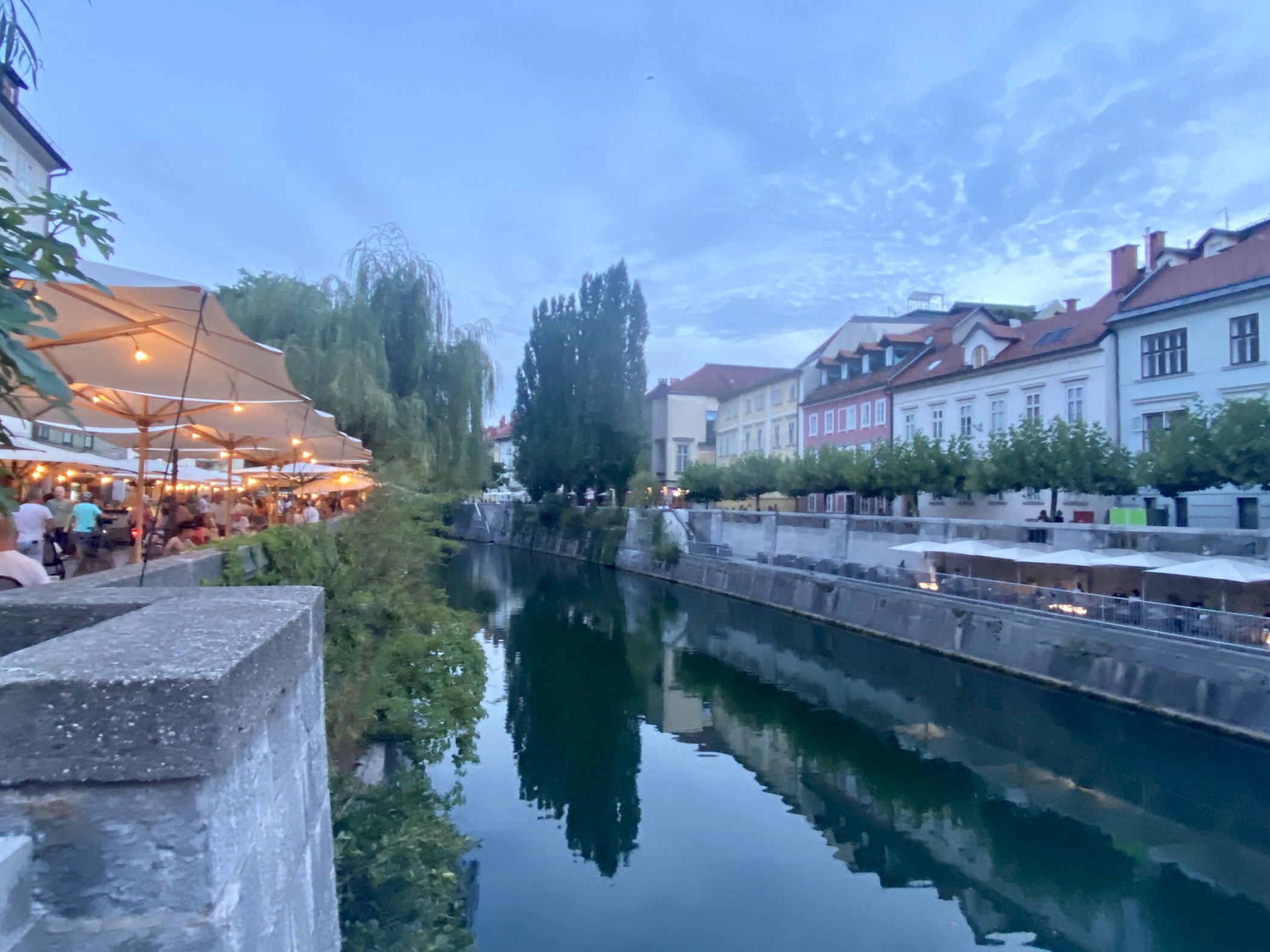
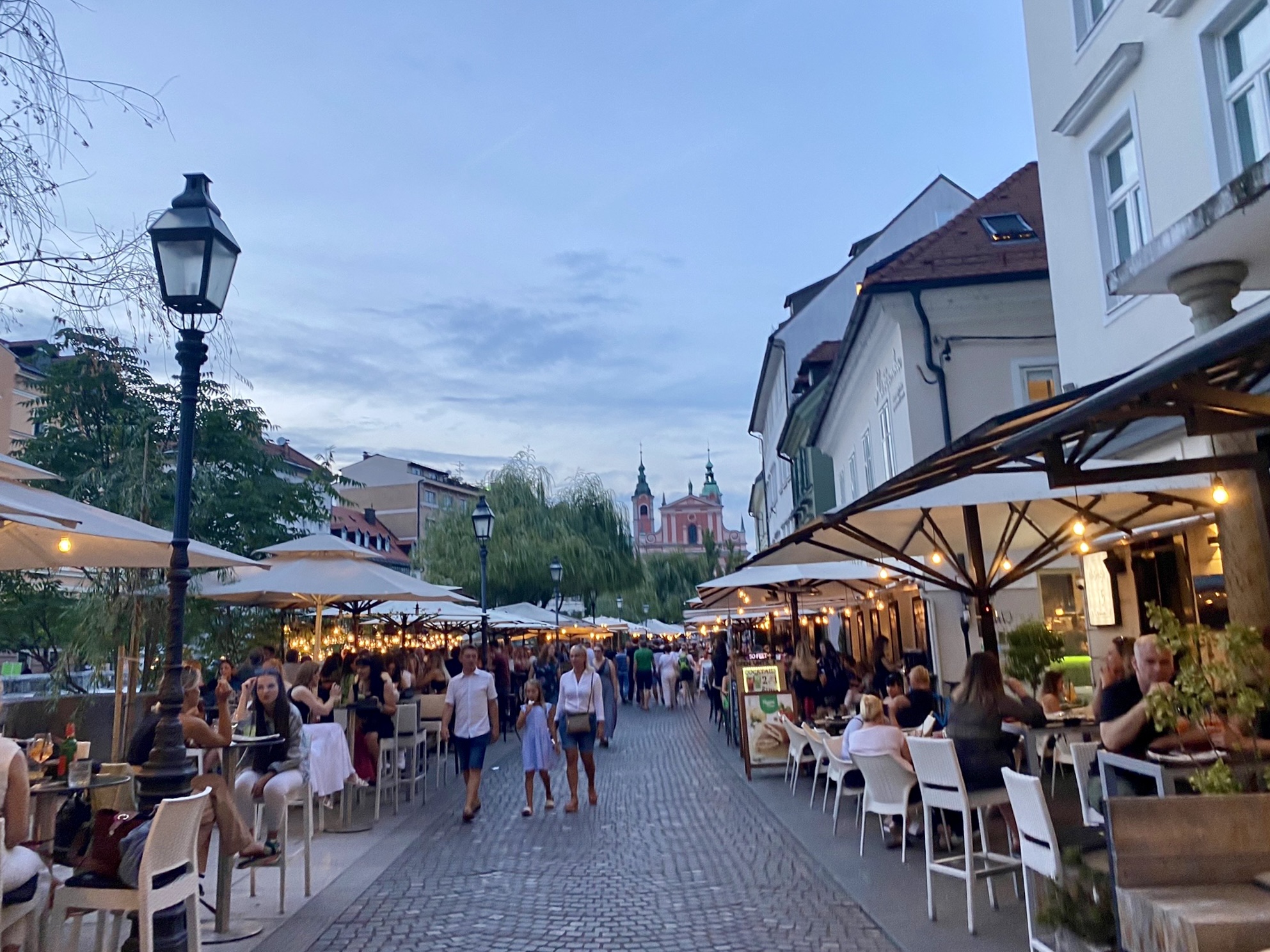
Off of the river, there are narrow streets to explore on both sides, with a mix of ancient buildings and mid-century Yugoslavian architecture. Ljubljana is charming, but it also has an urban edge to it. For example, there are quaint streets around every corner and some of them are filled with graffiti. It feels like such a juxtaposition.
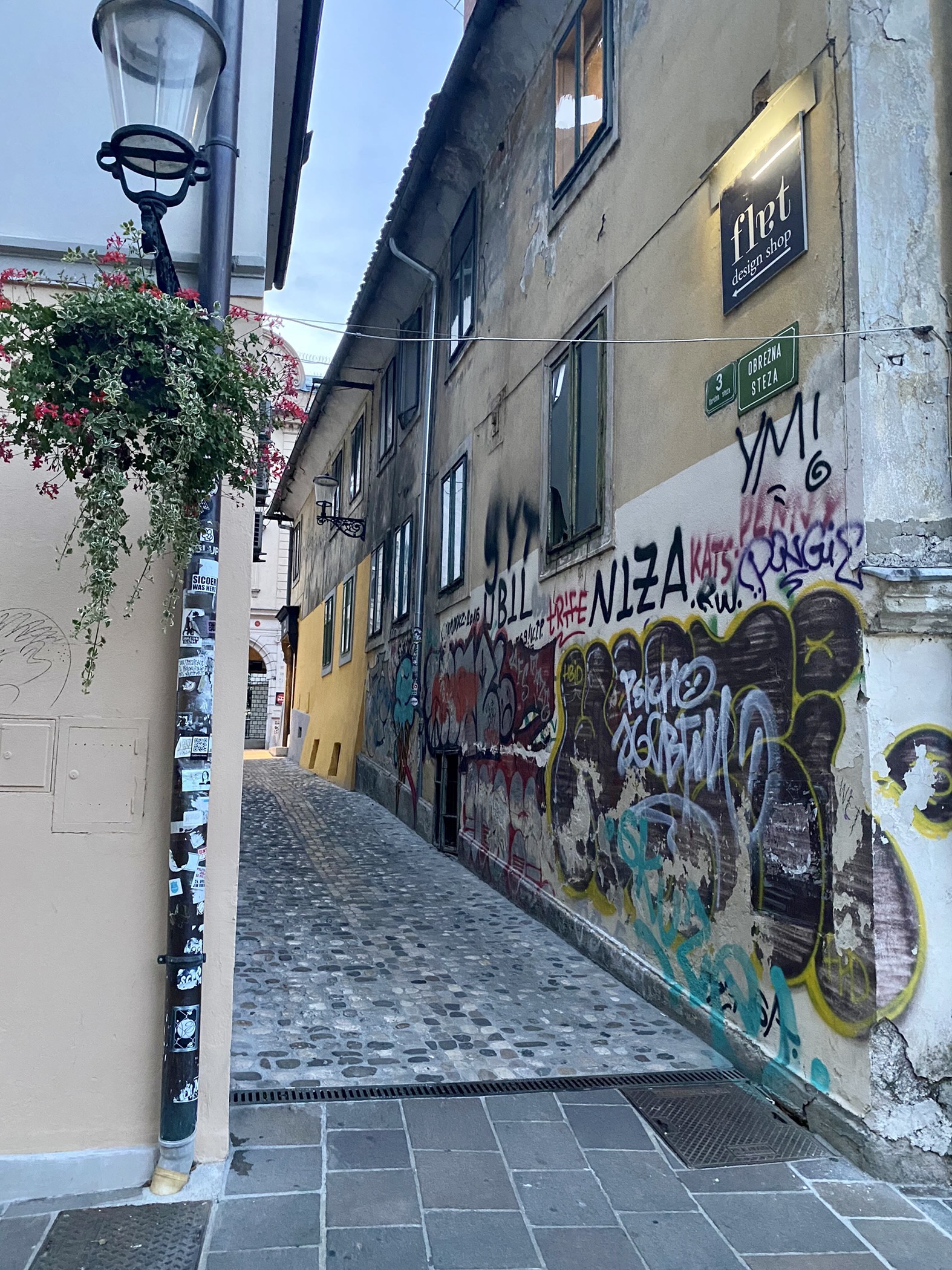
Our Hotel
The central business district is about a block from the river, with buildings from throughout the 20th Century. We stayed at the Central Hotel, which was remodeled a few years ago with modern stylings. We enjoyed the fresh air on the rooftop terrace, and slept in and relaxed when we were there. It was in a great location half way between the train station and the tourist corridor and main square. We highly recommend this place.
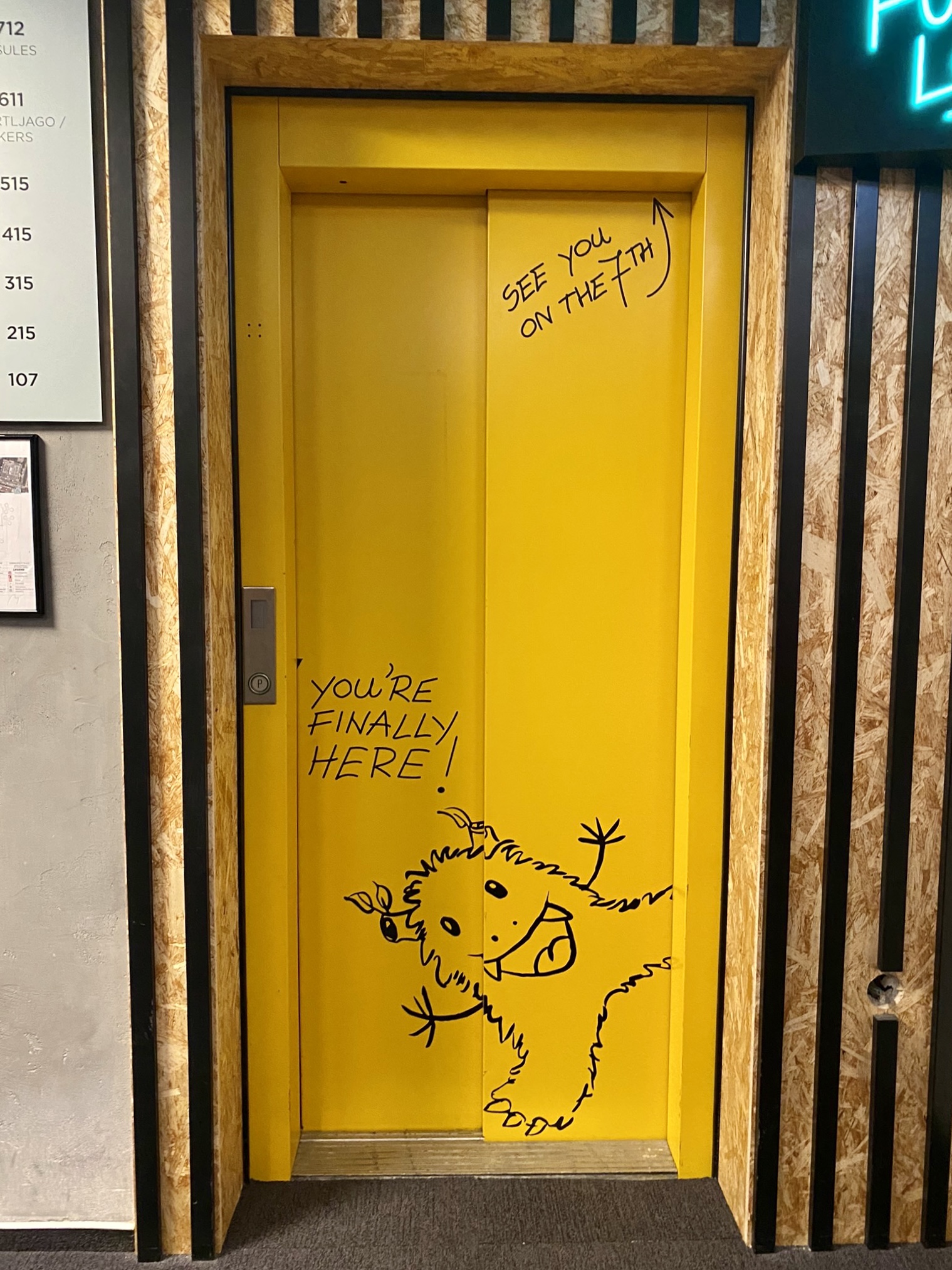
The Central Hotel has a room for just about any budget. They have multiple floors of standard hotel rooms and a few dozen “capsules” in an old telephone switchboard room. The main lobby also included a full kitchen, game room, and scattered work cubbyholes and meeting rooms. It reminded Tammy of the co-working spaces found in many tech companies building spaces. The fridge was even full of old Tupperware just like a work fridge! Here’s a link to check out all of their “modern and minimalist” spaces.
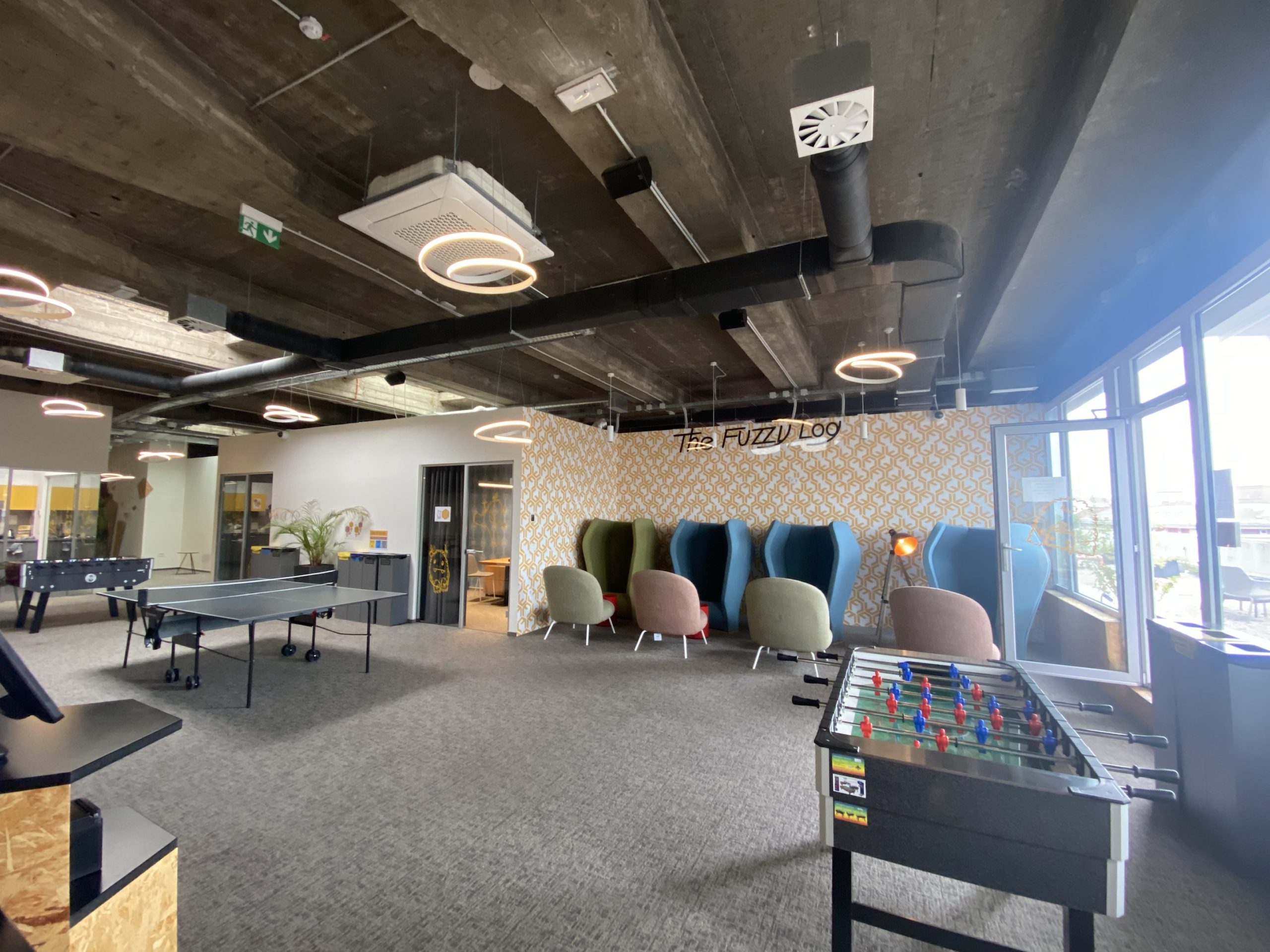
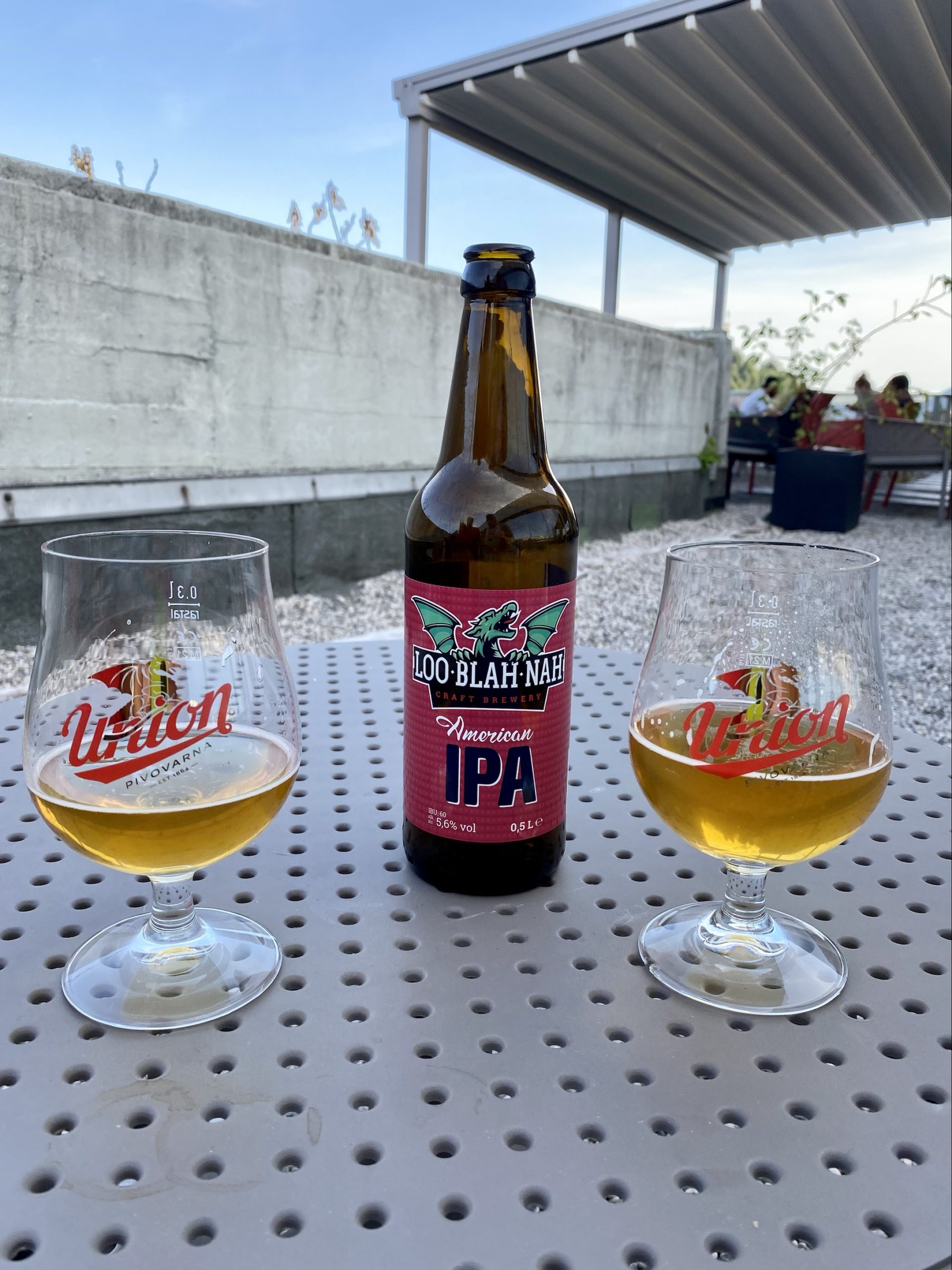
Here is a view from the rooftop terrace of the hotel.
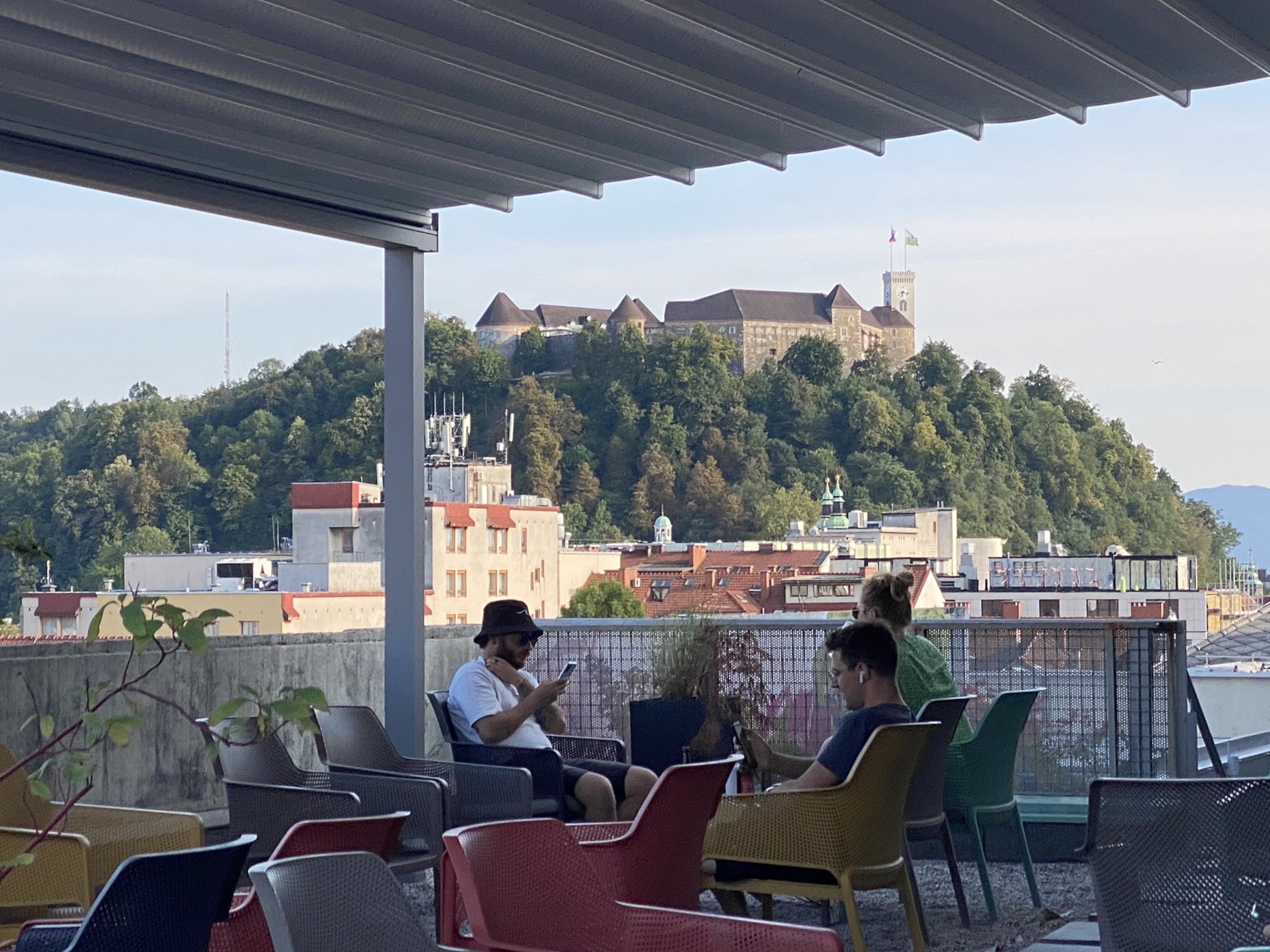
Walking Around
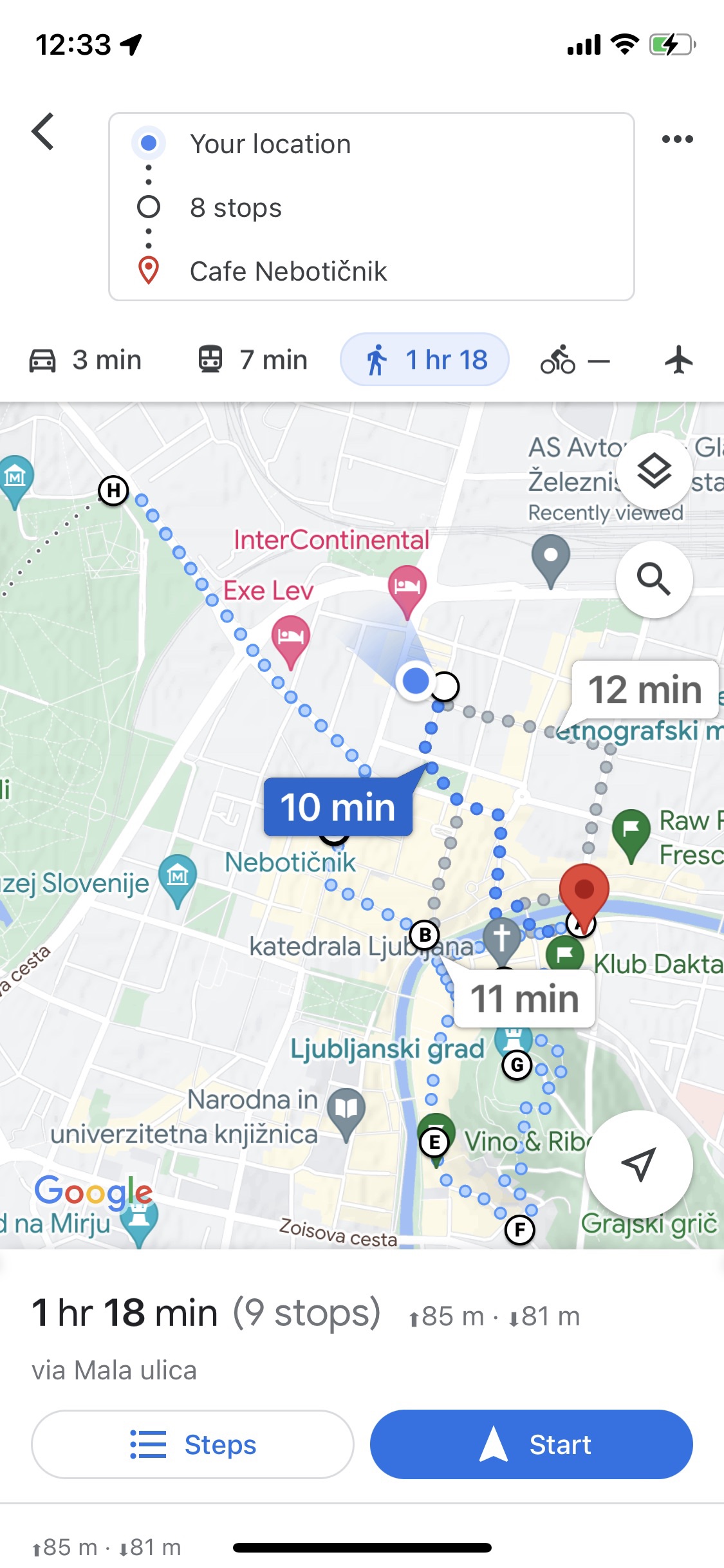
Tammy put together a walking tour of the city, including drinks and snacks at the Skyscraper (Nebotičnik), a 1933 12-story building that has a bar/restaurant on the upper floors, complete with views across the city.
It doesn’t look like much but when it was built it was the tallest building in the Balkans and the ninth tallest in Europe!
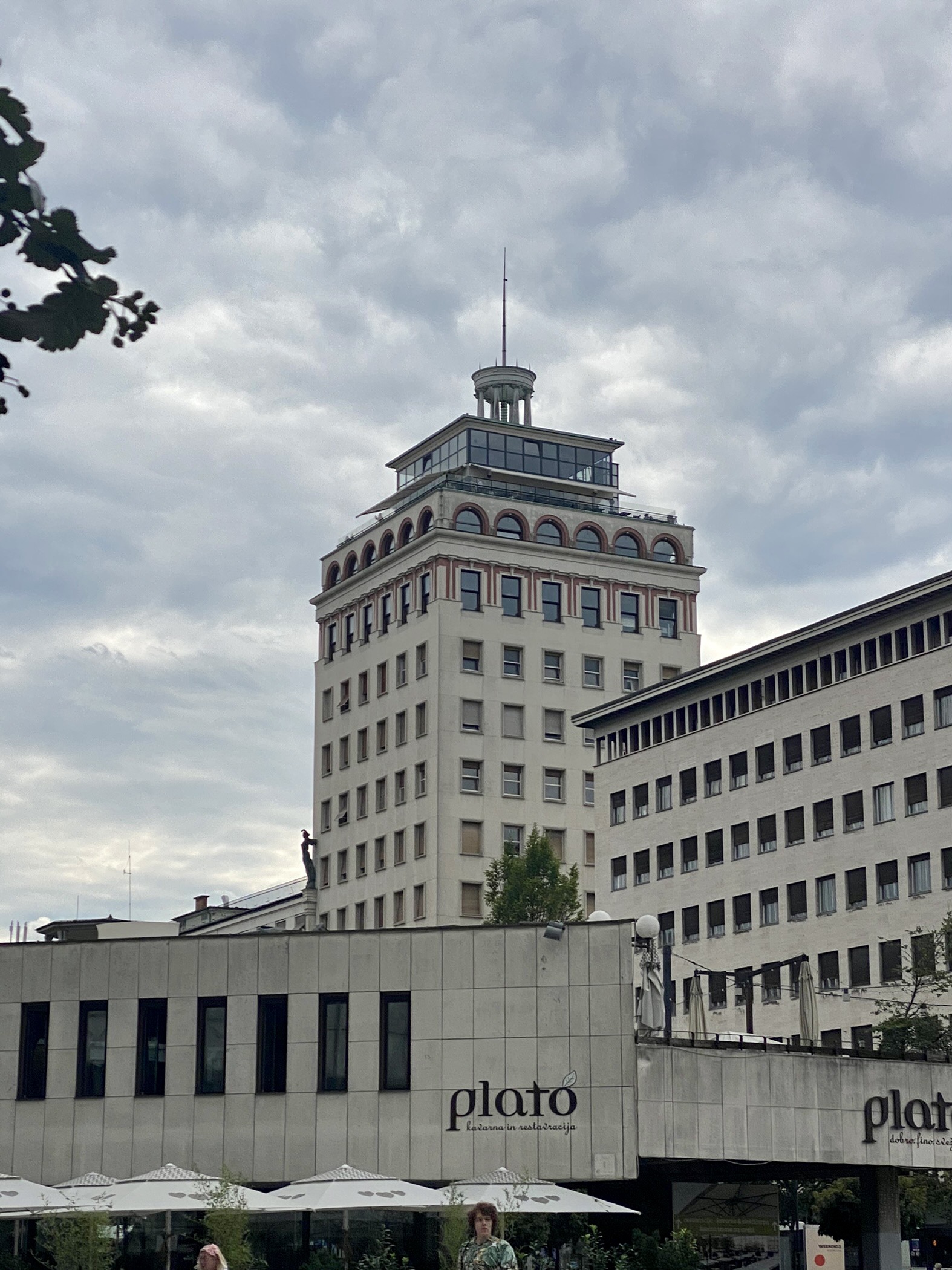
To get to the views, you have to wedge yourself into a tiny old elevator that fits a maximum of three people. Once on the 12th floor there are seating options indoors or outdoors with 360 degree views. The menu is light and includes drinks, cocktails, and freshly made local desserts.
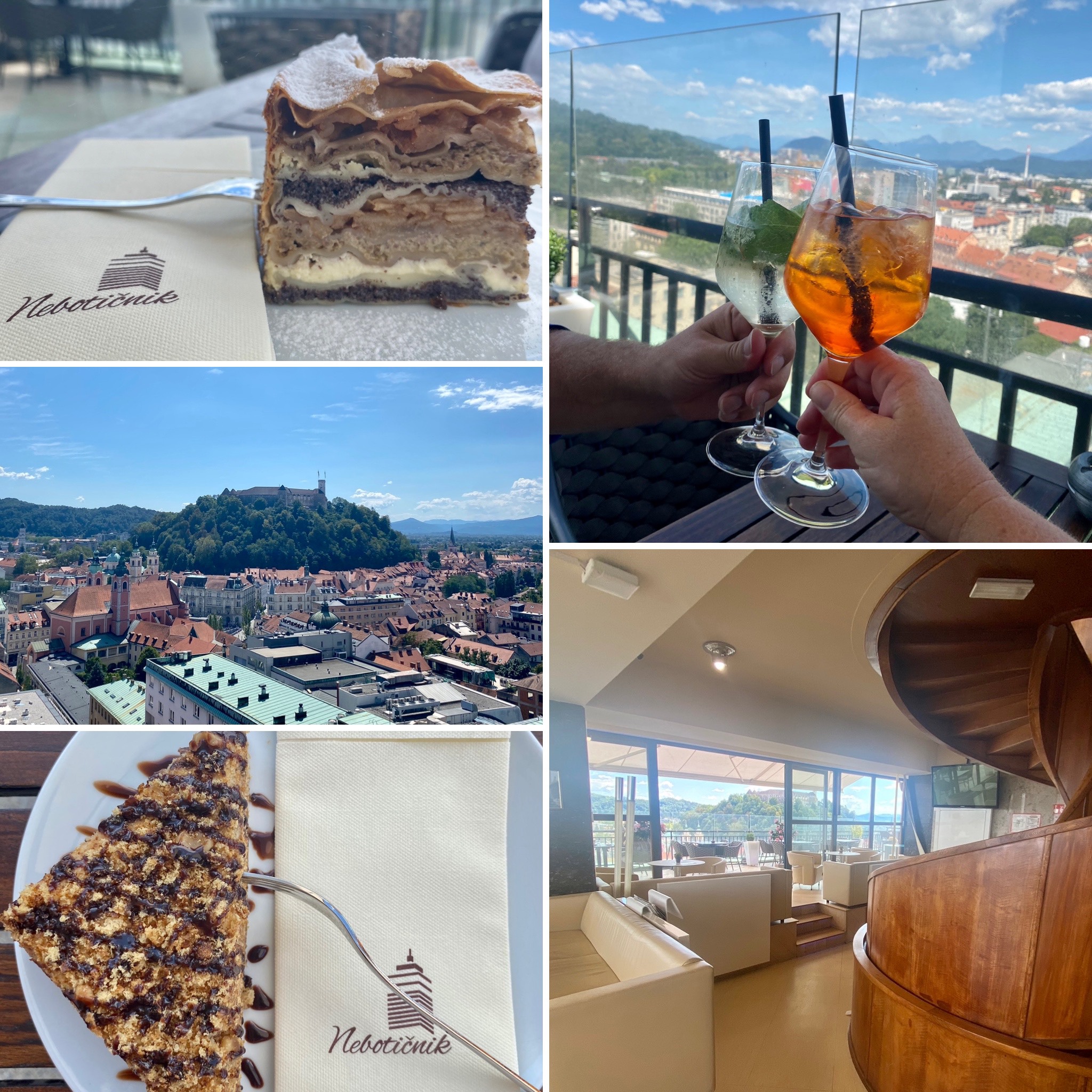
From the Skyscraper, you can see how the central business district transitions into the old town, which sits in the shadow of Ljubljana Castle (Ljubljanski Grad), high atop a large hill. The castle grounds are preserved as a park and the walk up offers expansive views of the city. There is also a funicular that travels directly to the castle (or you can take a cab).
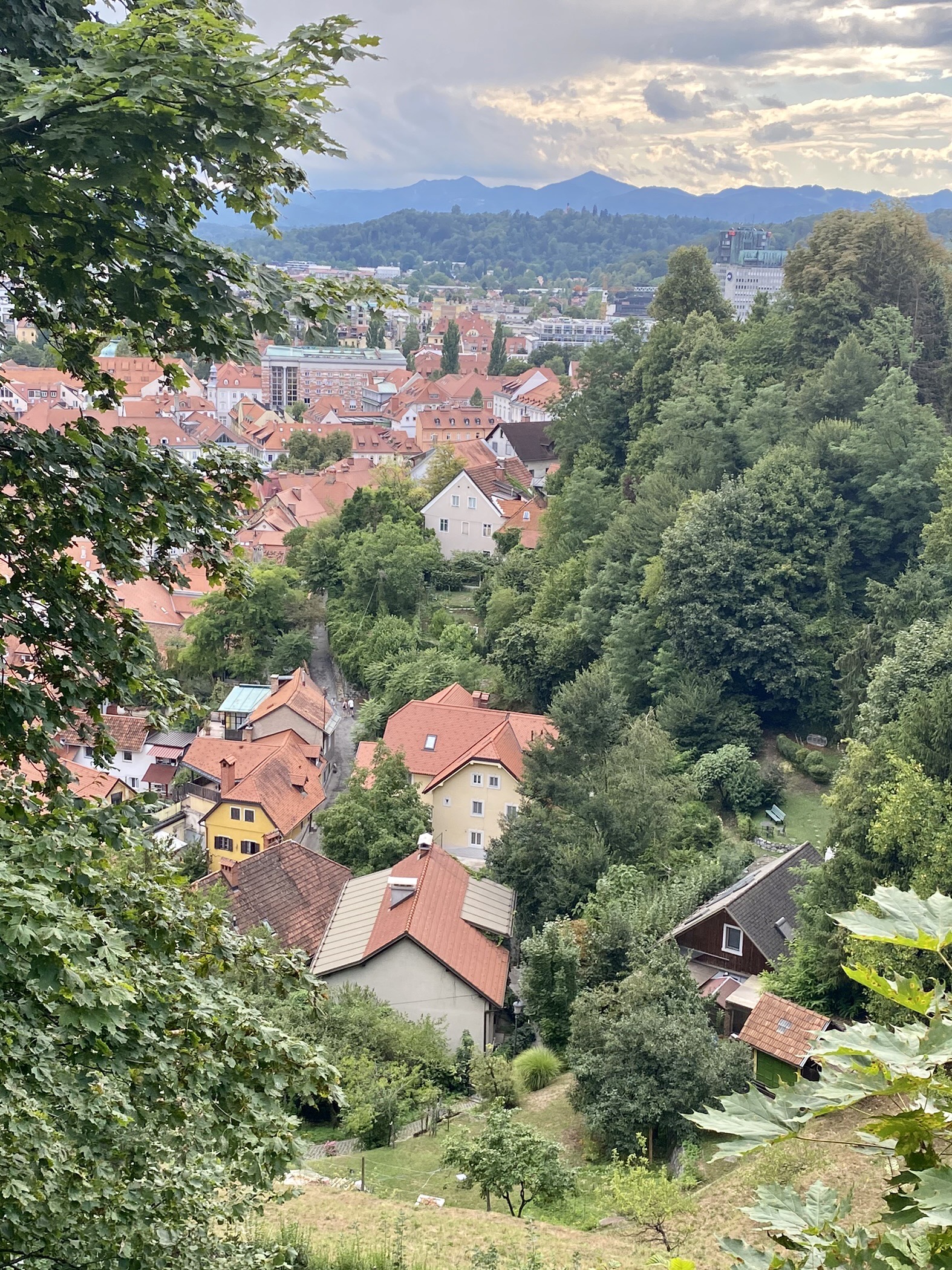
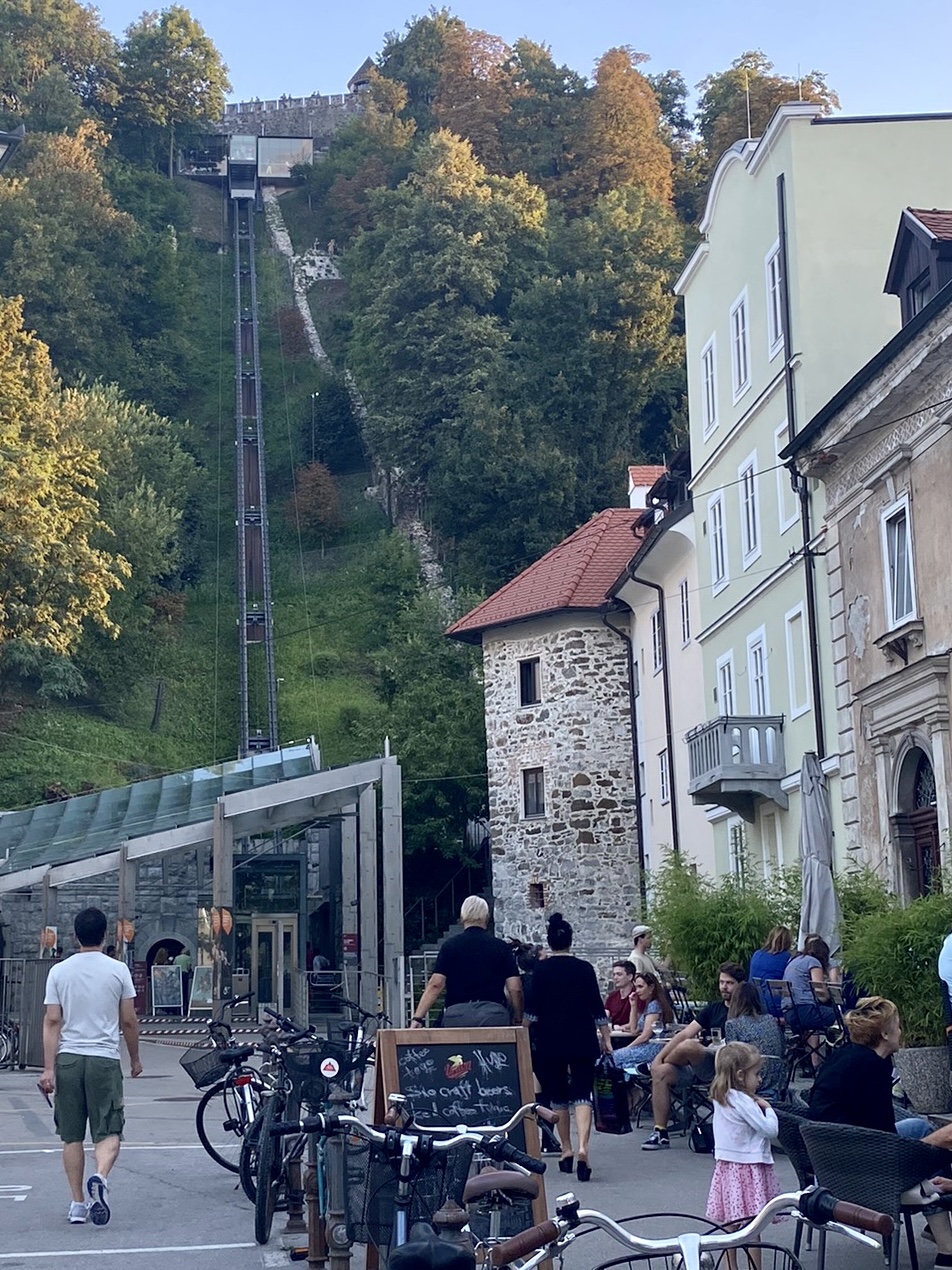
The grounds are free to the public but the castle itself carried an entrance fee.

There were a couple of castle towers to climb that offered full panoramas of the city.
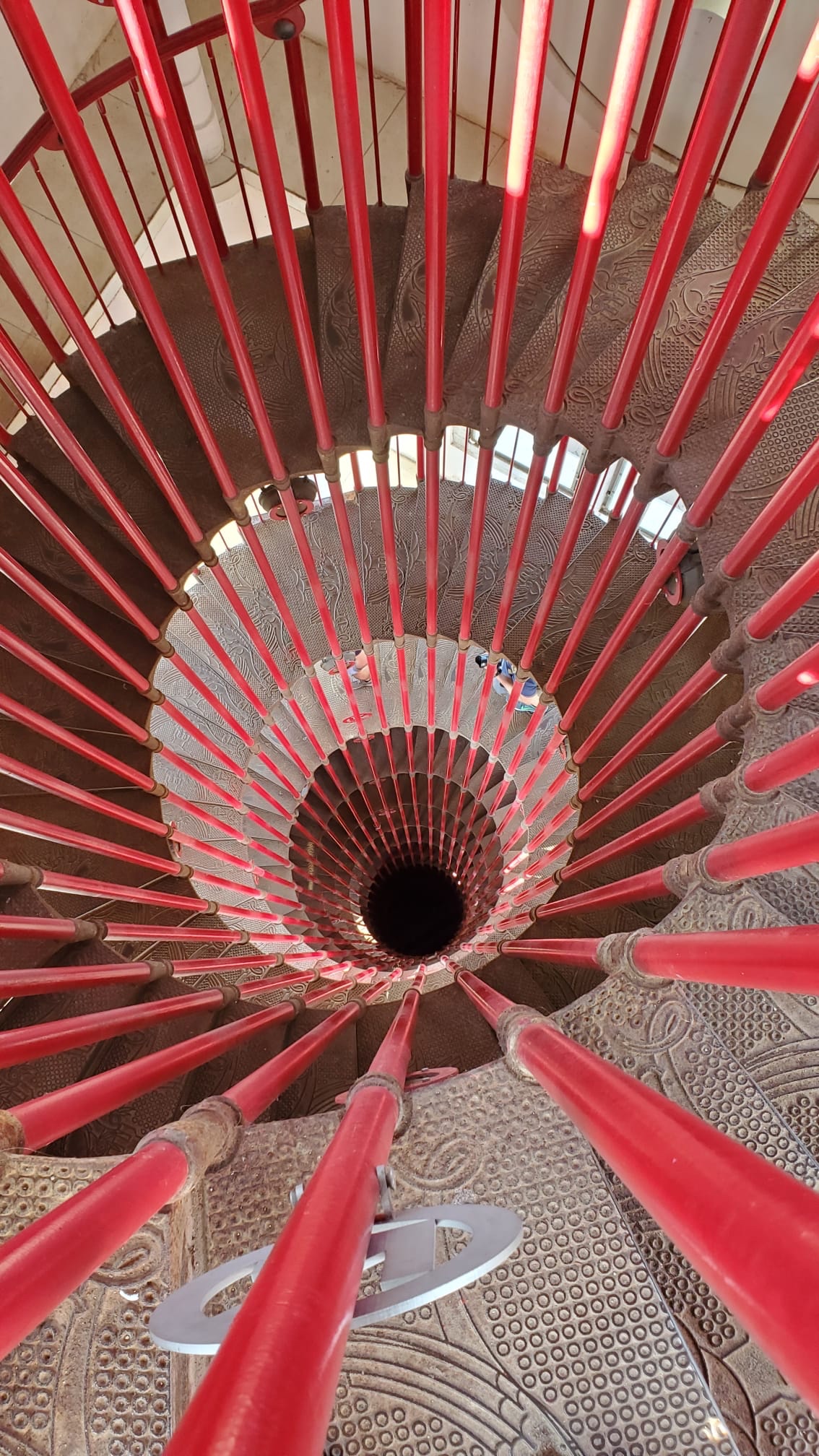
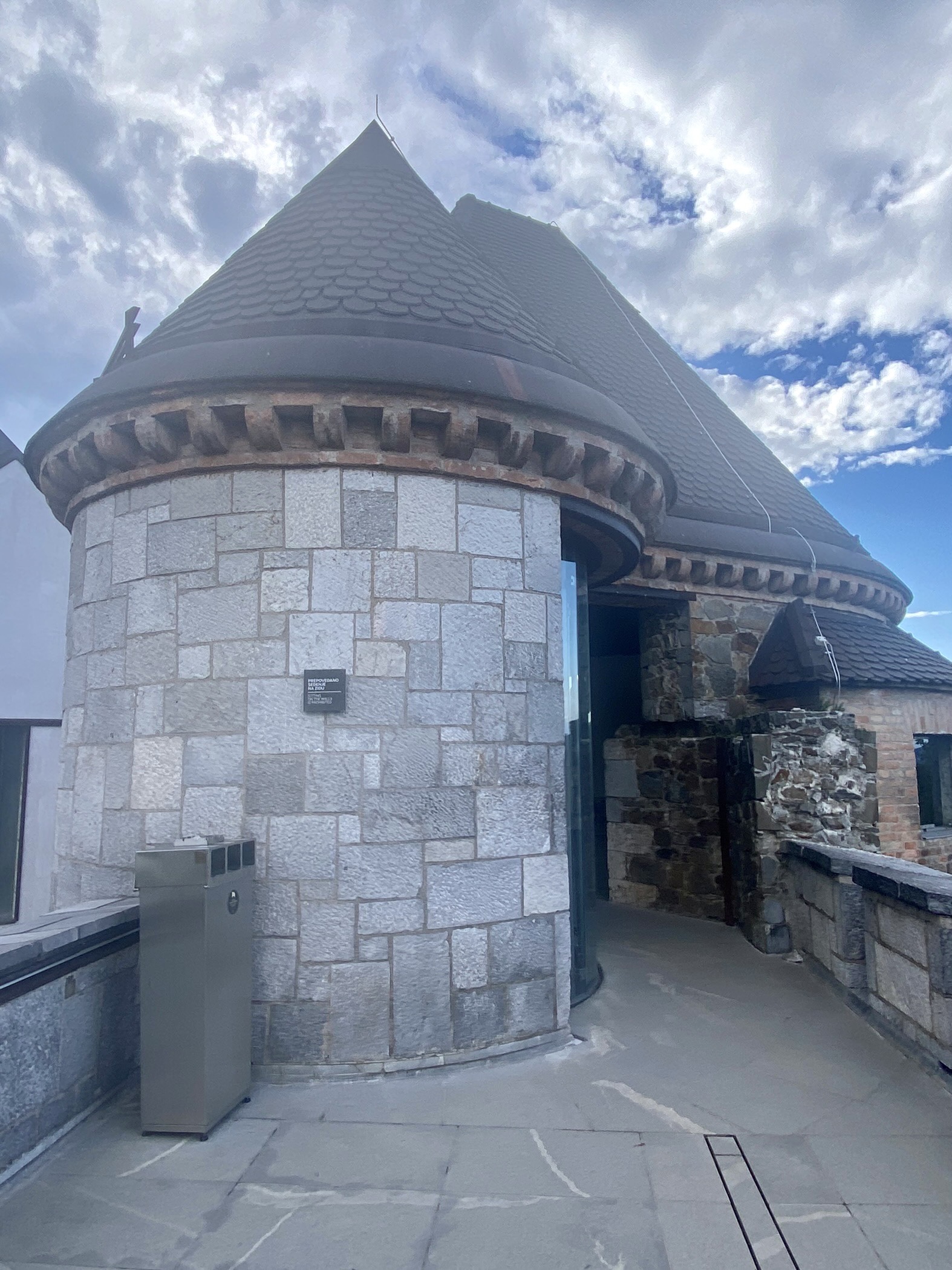
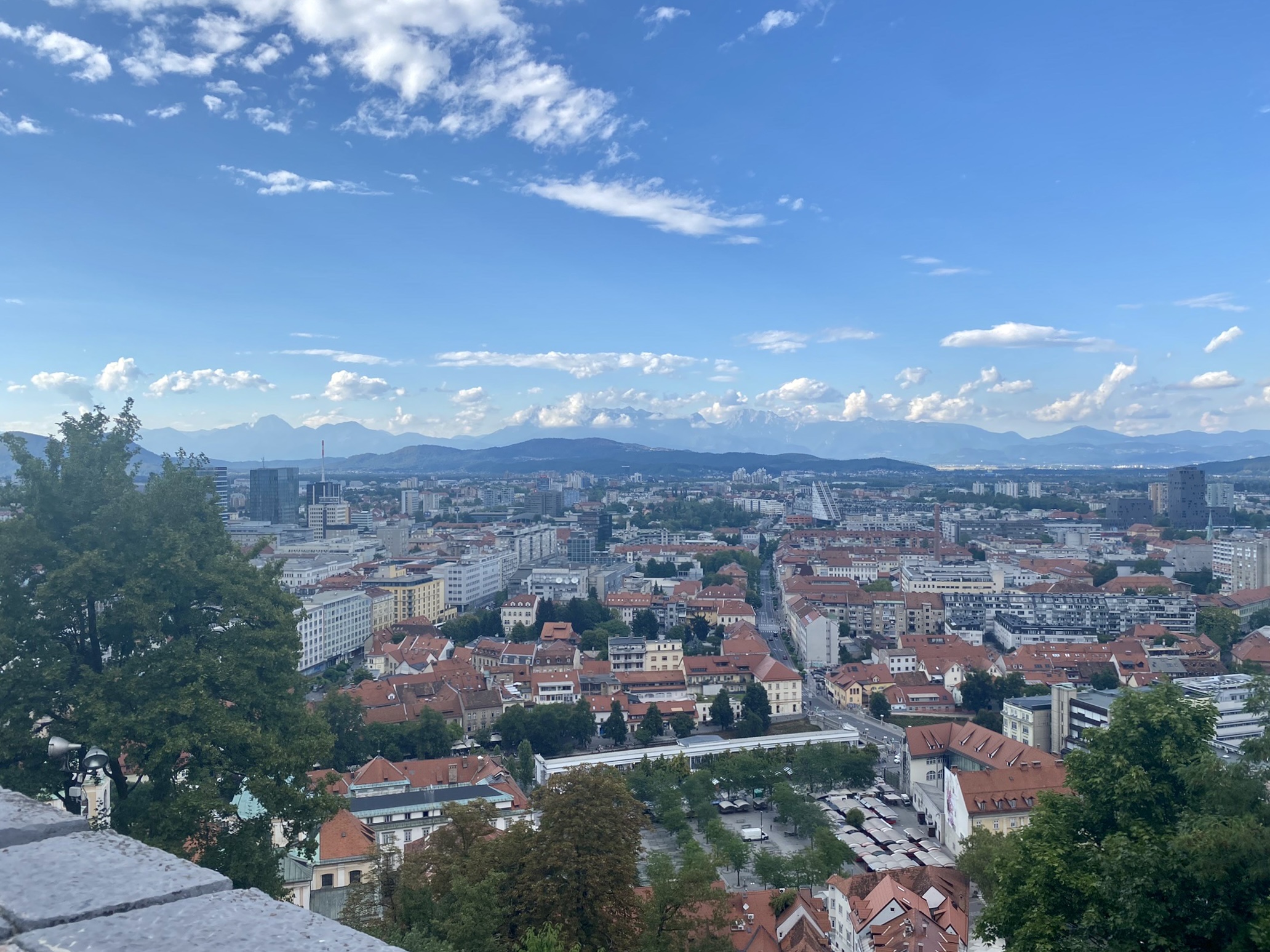
The interior of the castle is used for a Slovenian history exhibit, a puppetry museum, as well as a few rotating art exhibits.
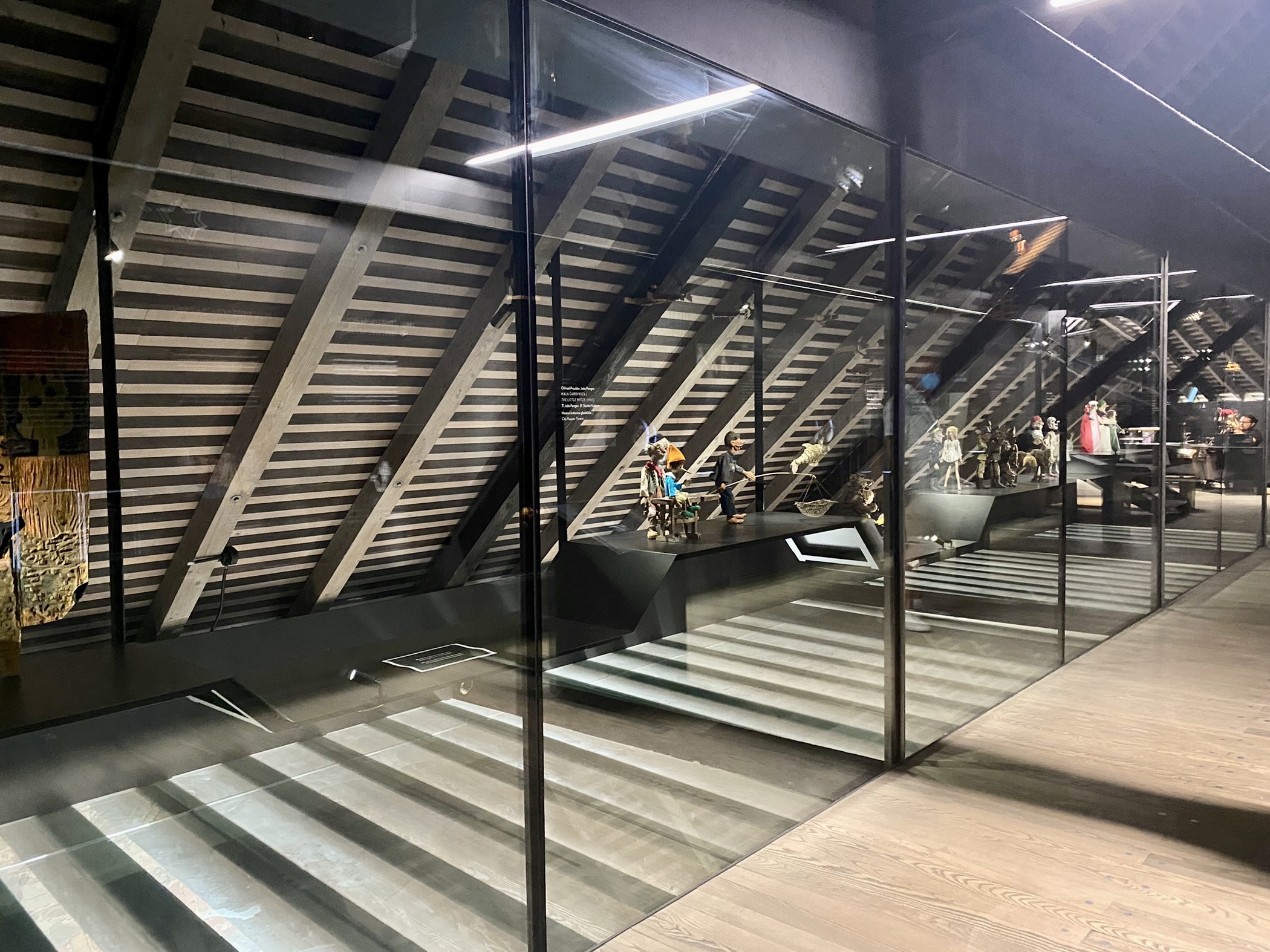
There is also a fine dining restaurant. The grounds are used frequently for concerts, films, dinners, and festivals. We passed on the audio tour, but then found that we were missing information on the castle’s history: construction, use, renovations, etc.
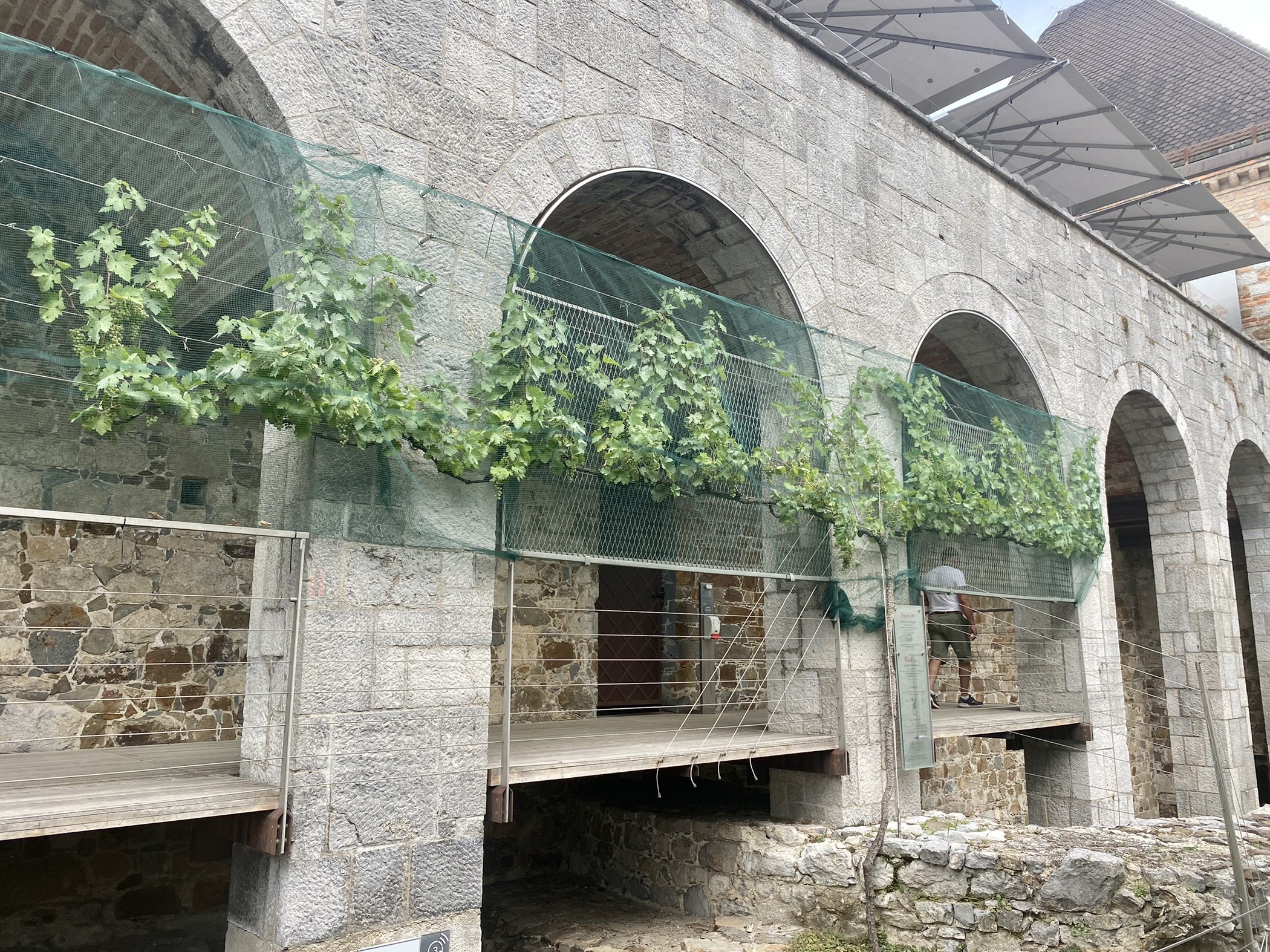
Any tourist visit to Ljubljana will likely involve a castle visit, and it is worthwhile to check for interesting events, and make sure to allow enough time to explore the expansive hillside. We took some time exploring the hillside before even approaching the castle, and it would be easy to spend a half day wandering on the various trails and enjoying the city views.
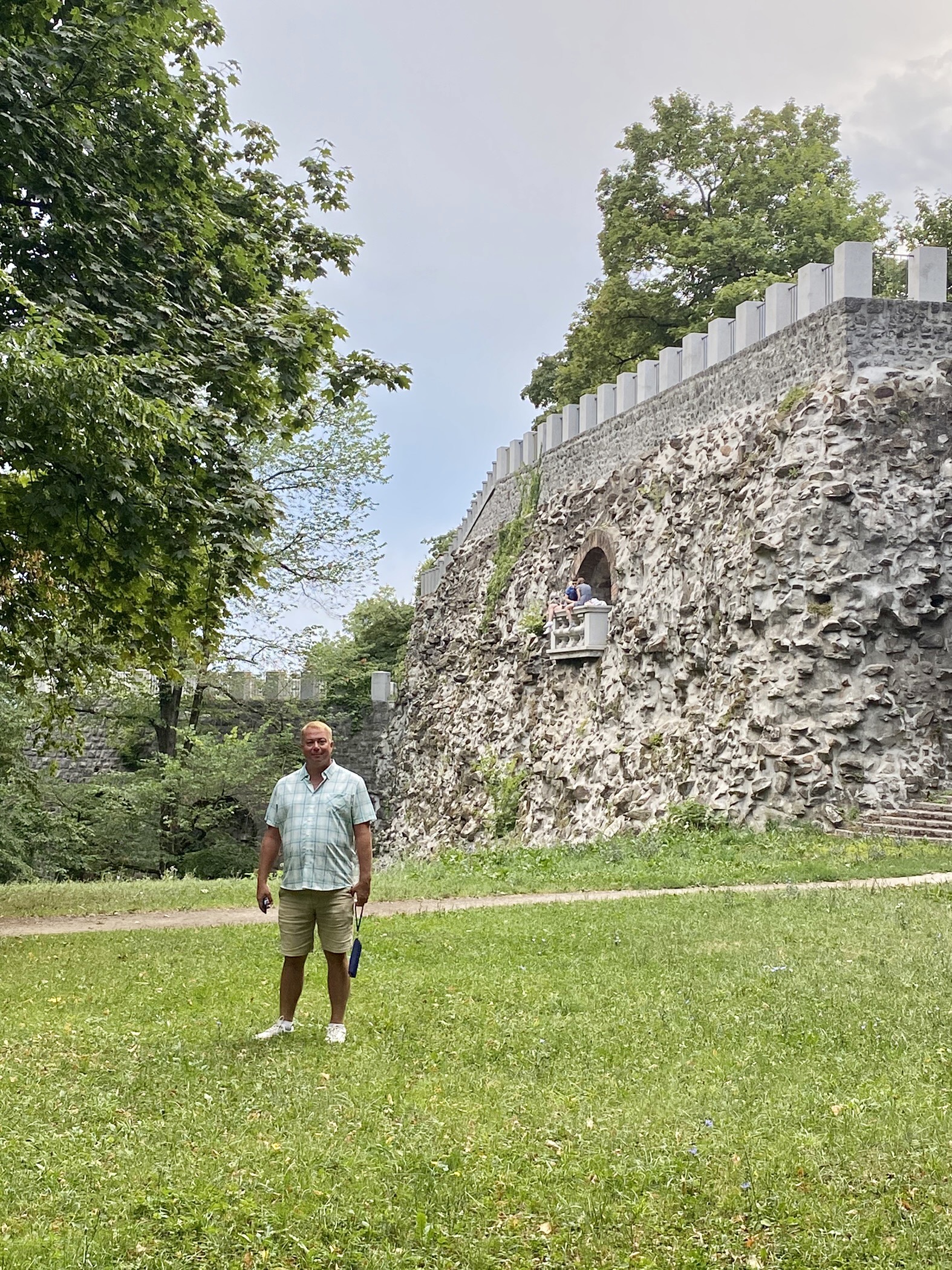
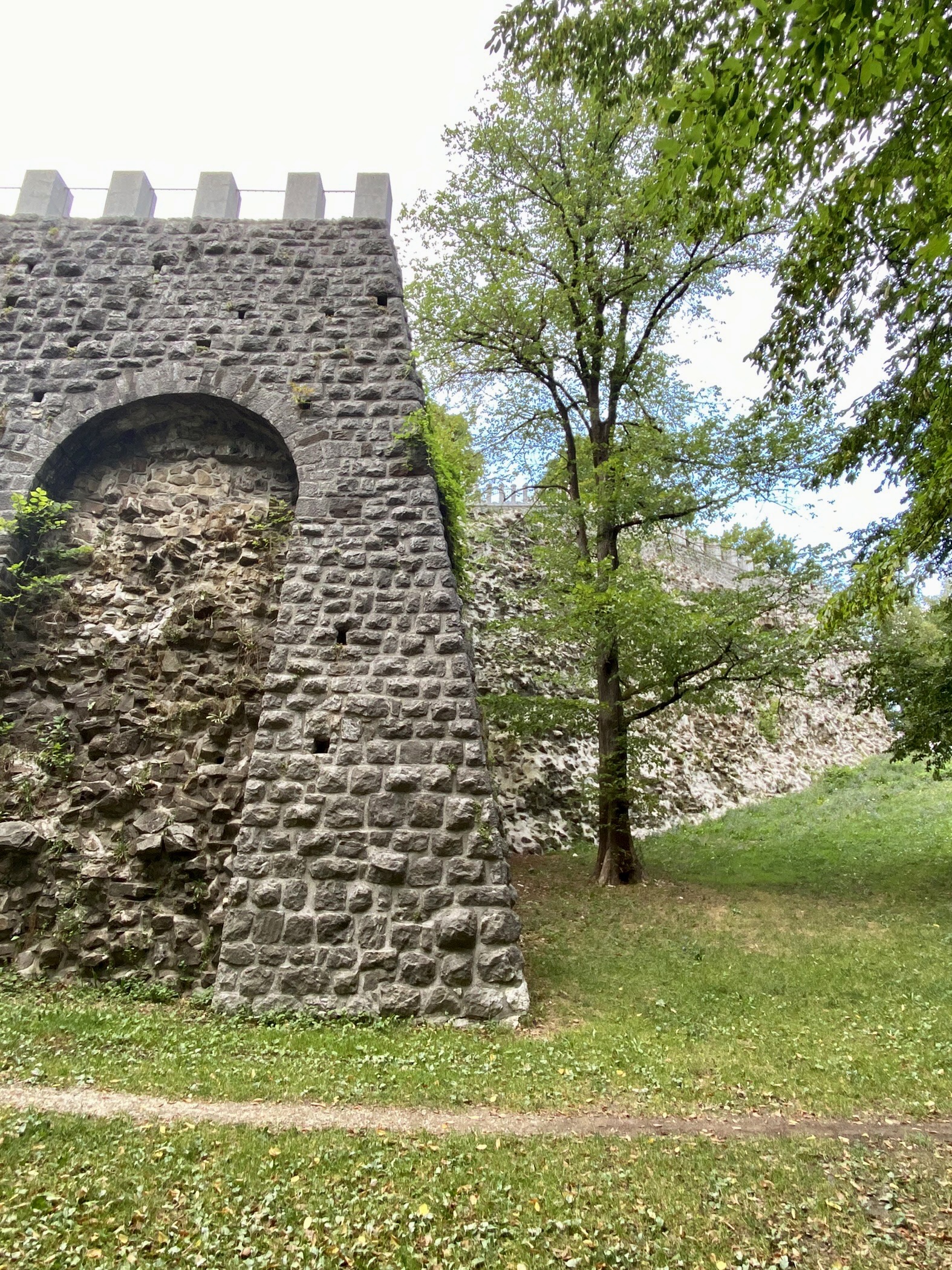

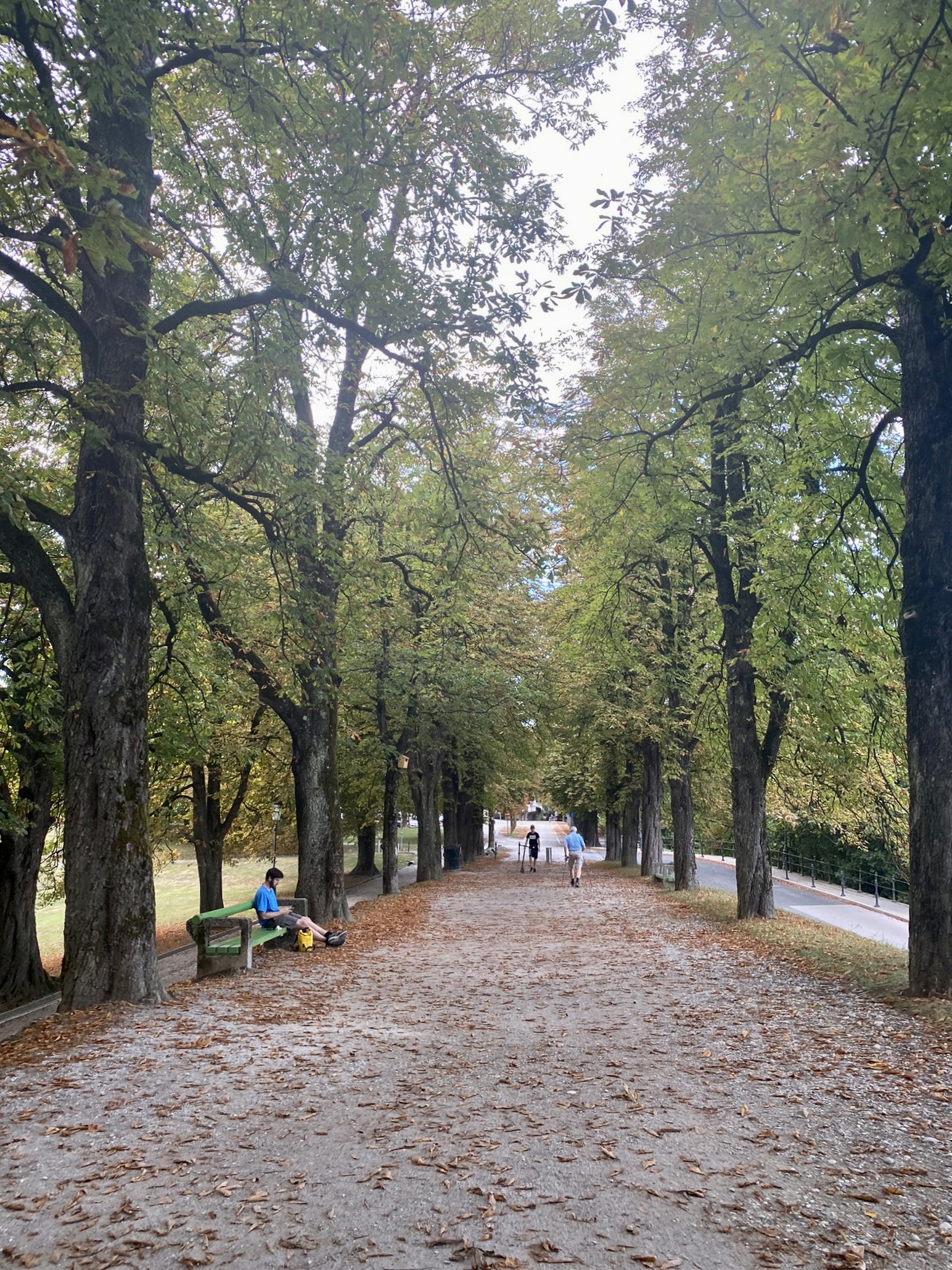
Activities
It may be a summertime happening, but as we were walking the city, we were quickly struck by the number of posters for festivals and happenings in the town and across the country, as well as how much was free and outdoors. There were things happening almost every day throughout the summer. The official tourism website was also helpful to sort out the specifics of which event was at which venue. One of our favorites was watching an outdoor jazz concert at a coffeeshop’s terrace, just around the corner from our hotel. In fact, we could hear the musicians warming up from our room, as the notes drifted up with the wind and through our open windows.
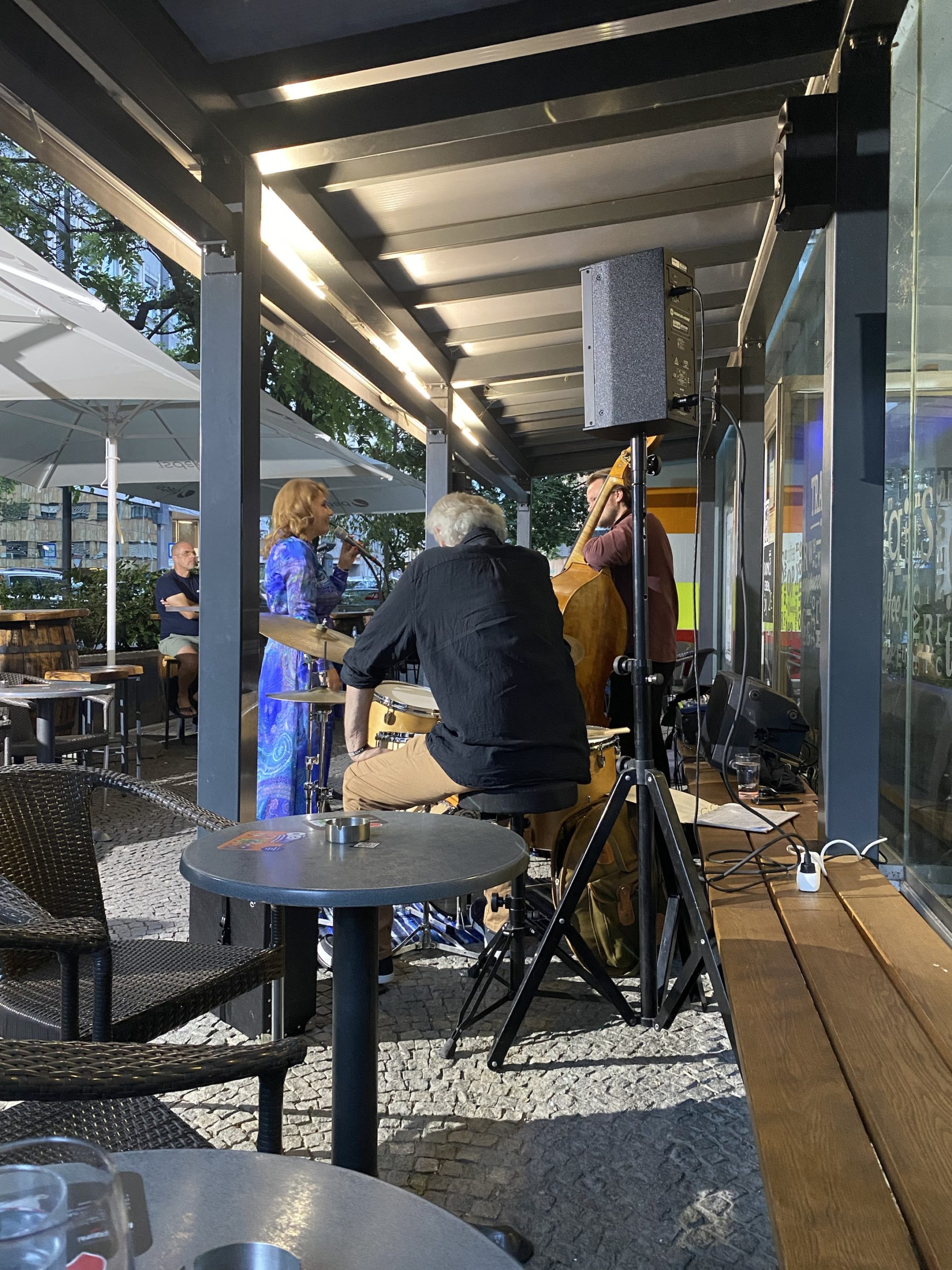
Food
Much of the food in the area reflects the “crossroads” nature of the region.
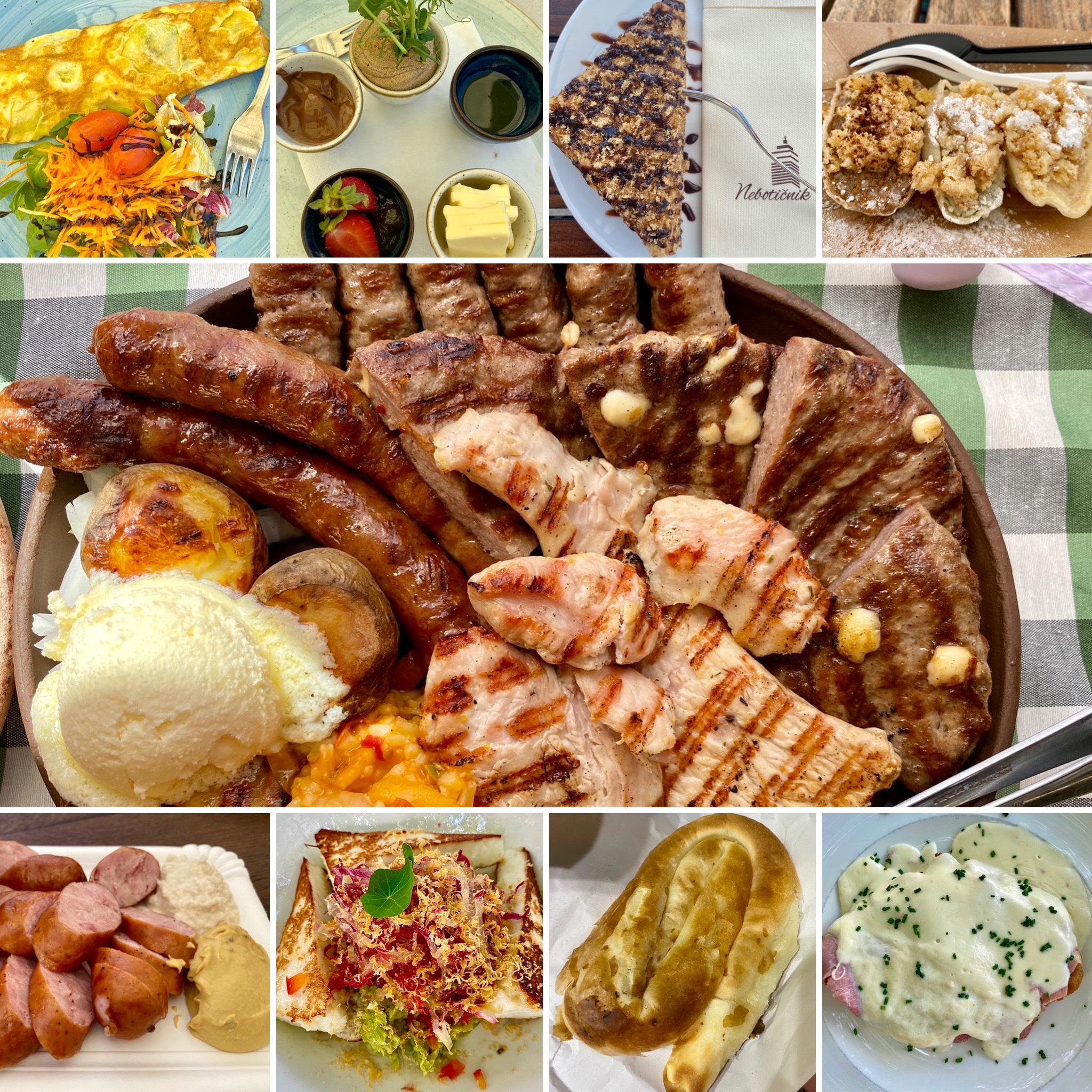
We enjoyed all the fresh flavors but a highlight for Tammy was a Bosnian restaurant in Maribor, where we ordered a large grilled meat plate for two (shown above).
The other standout for us was our daily breakfast ritual, the burek. We were lucky to have two 24-hour burek stands within a block of the Central Hotel. This pastry, which is common throughout the Balkans and Middle East (with various spellings) is filled with salty cheese, minced meat, or other fillings like pepperoni, spinach, or apple. The spinach and plain cheese were Tammy’s favorites. I liked the meat or the “pizza” burek. These stands were great for grabbing fresh food before getting on a very early train.
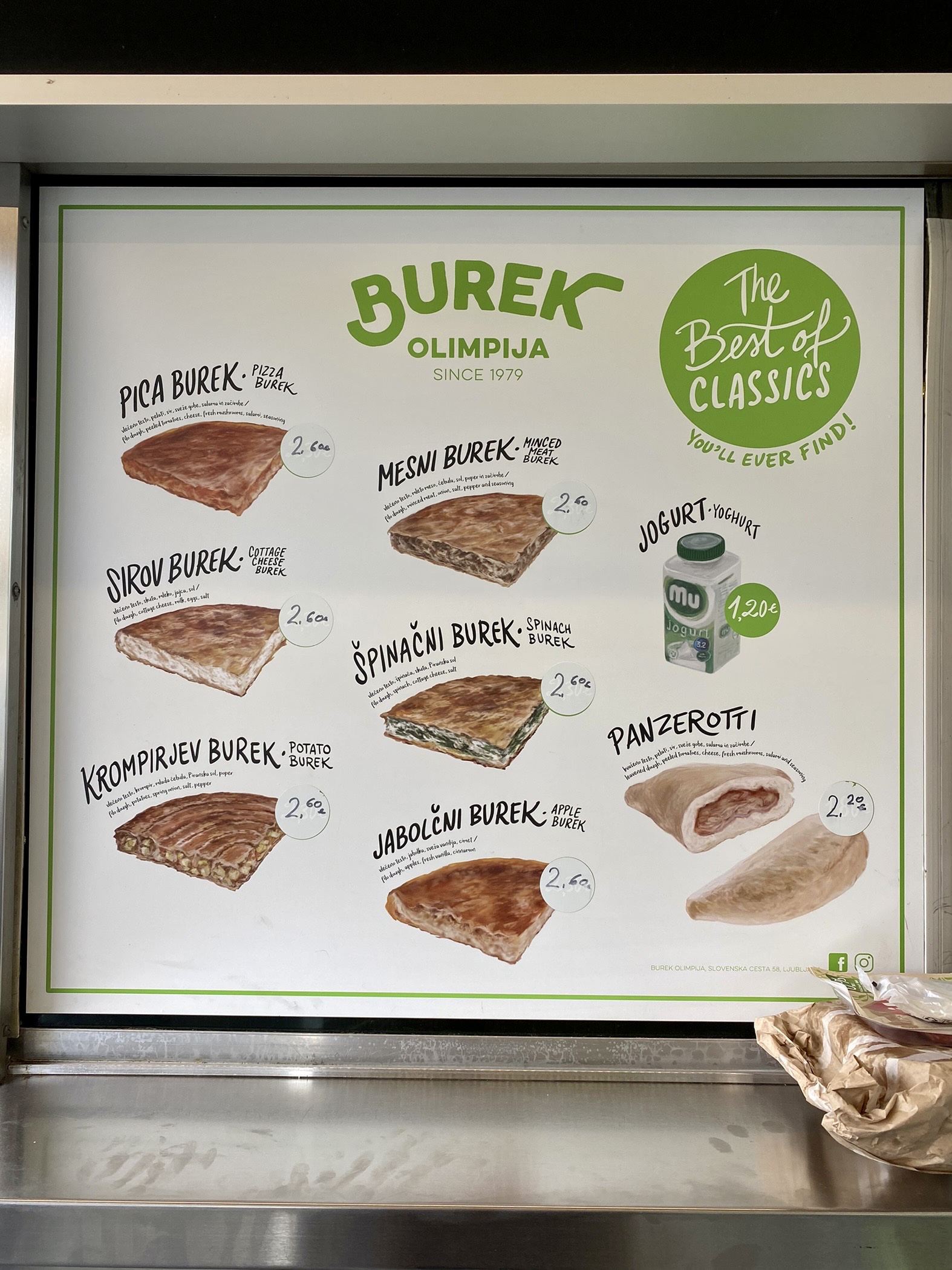
Food in Slovenia was relatively inexpensive. The average dinner for us cost about $25. Here’s an example below, from Slovenian House Figovec. We again saw the Istrian hand-rolled pasta Pljukanci, here served with a wild garlic sauce. We also had bograc (goulash) with bread dumplings, and our first taste of Carnolian sausage (Kranjska klobasa). This sausage is so intertwined with Slovenian culture that a Slovenian-American astronaut took it to space with them.
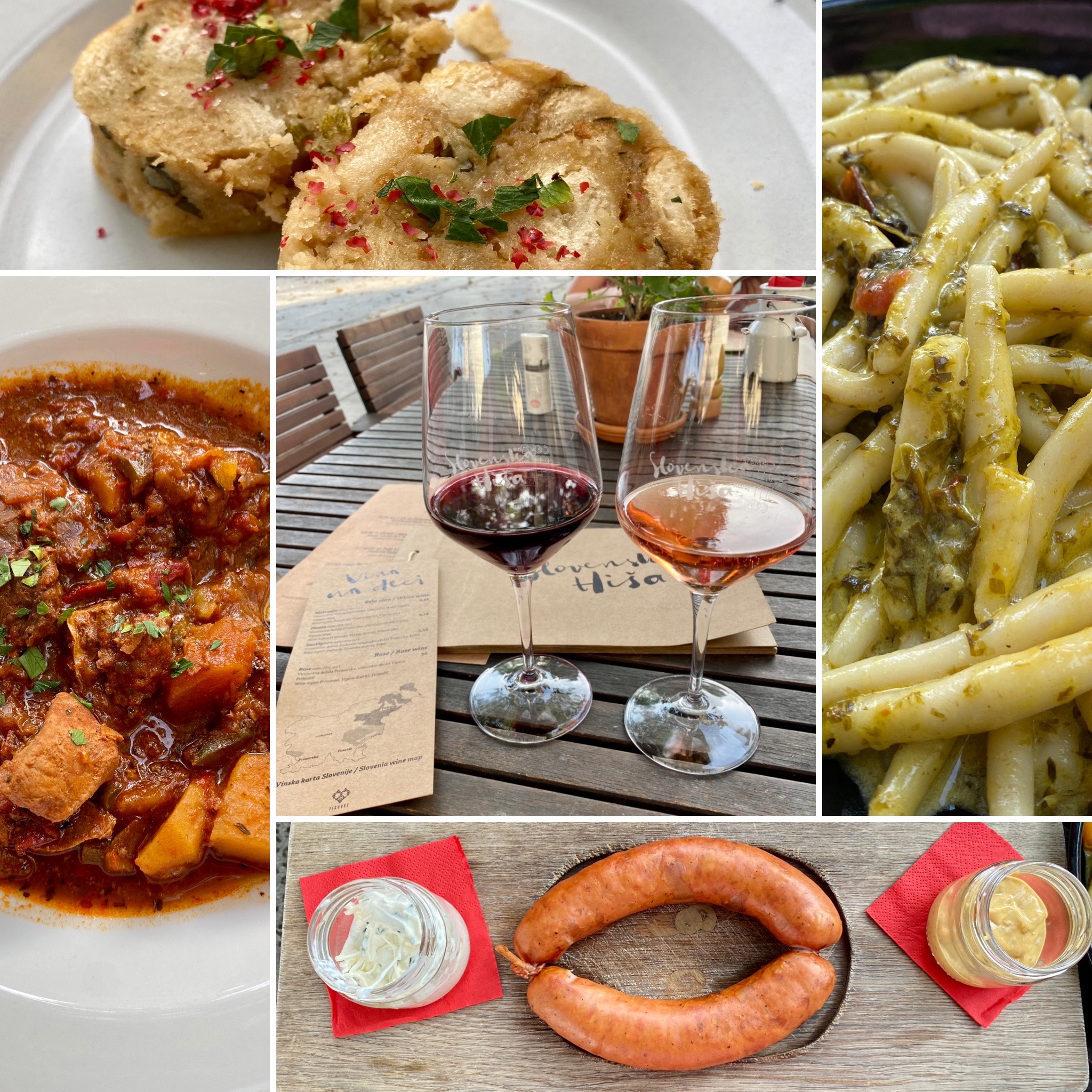
At later meals, we had more sausage, as well as a traditional Slovenian bean stew. Charcuterie (ham and other sausages) were also regularly on menus, especially at drinking establishments.
Wine
Slovenia’s winemaking traditions predate the Romans, and have been carried on throughout the years no matter who was governing the area. Numerous times we heard about family farms that would produce wine for their own use: one barrel of white and one barrel of red. The yeast was natural, and they would leave the white grapes on the skins, to obtain tannins that would help preserve the wine over the year. Perhaps because of this, it was very easy to find orange/copper wines, natural wines, or pet-nats.
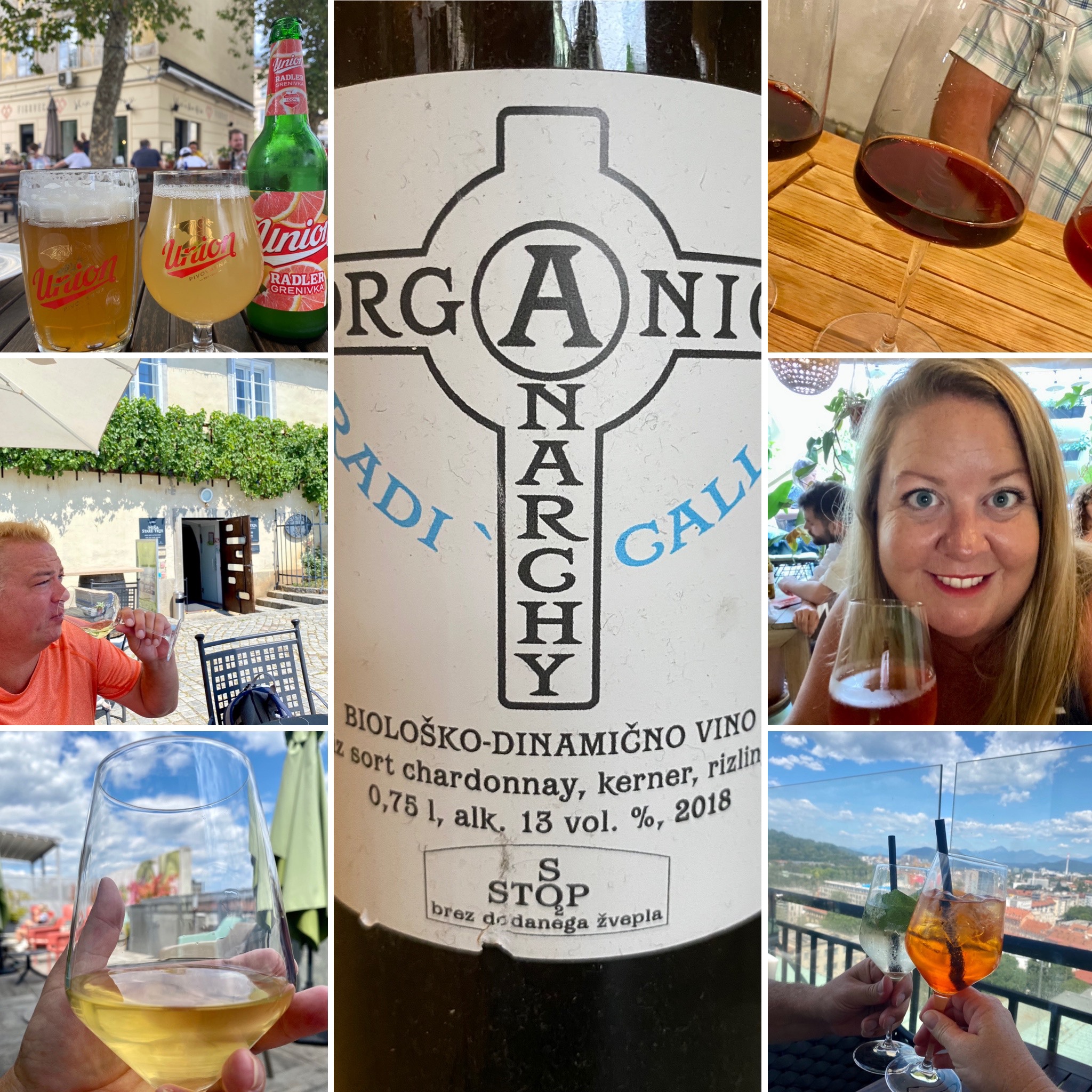
We especially enjoyed a restaurant/wine bar called Supernatural, which exclusively serves natural wines, with a good selection from Slovenia and nearby. They offer an outstanding number of wines by the glass and bottle, and take-away bottles are offered at the menu price less 15€!
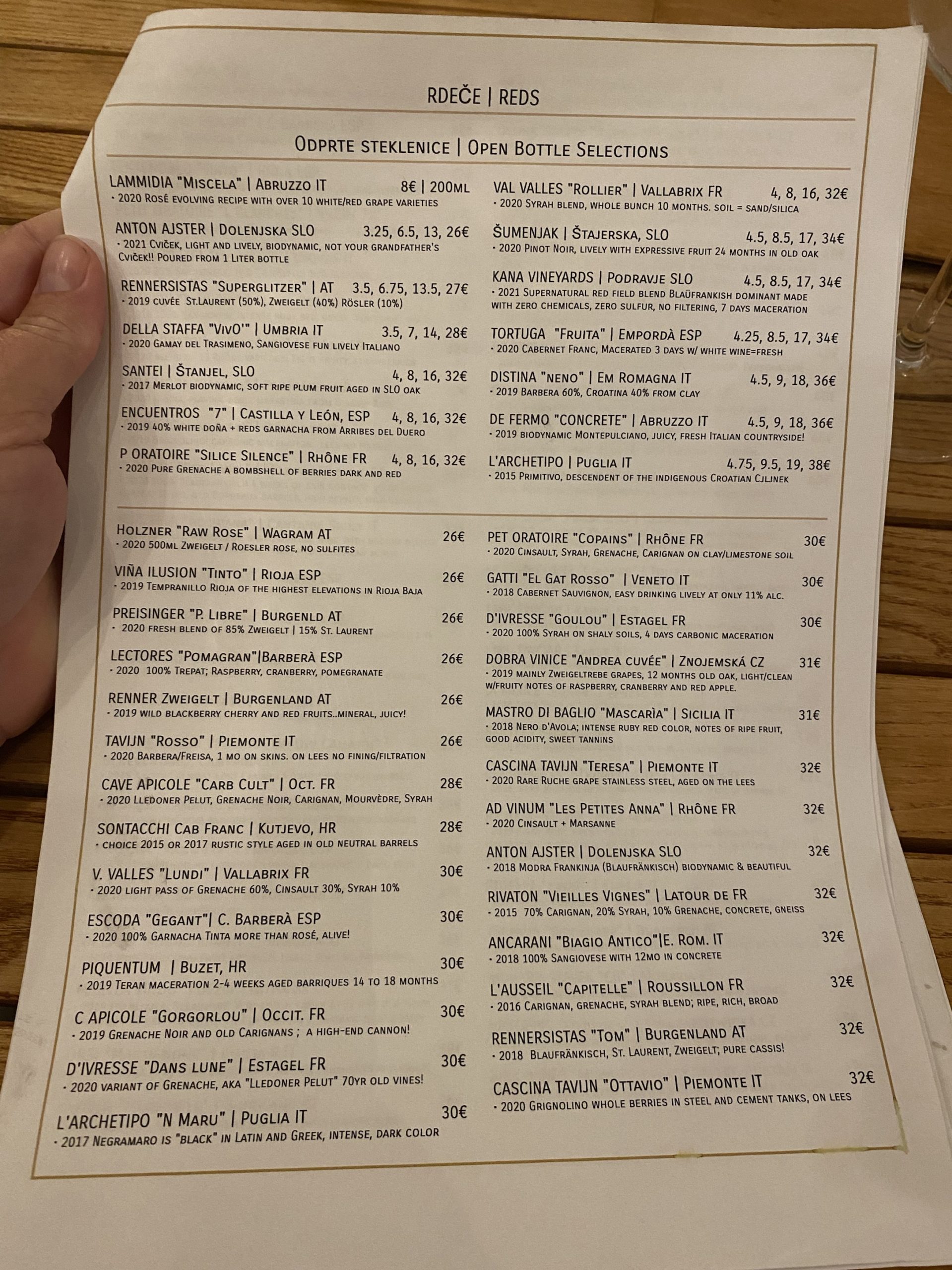
But they were not the only wine bar in town that was exclusively natural. We had glasses on the patio at Gostilna Vida, and most establishments had interesting regional wines, with some offering a true house wine that was produced by the establishment.
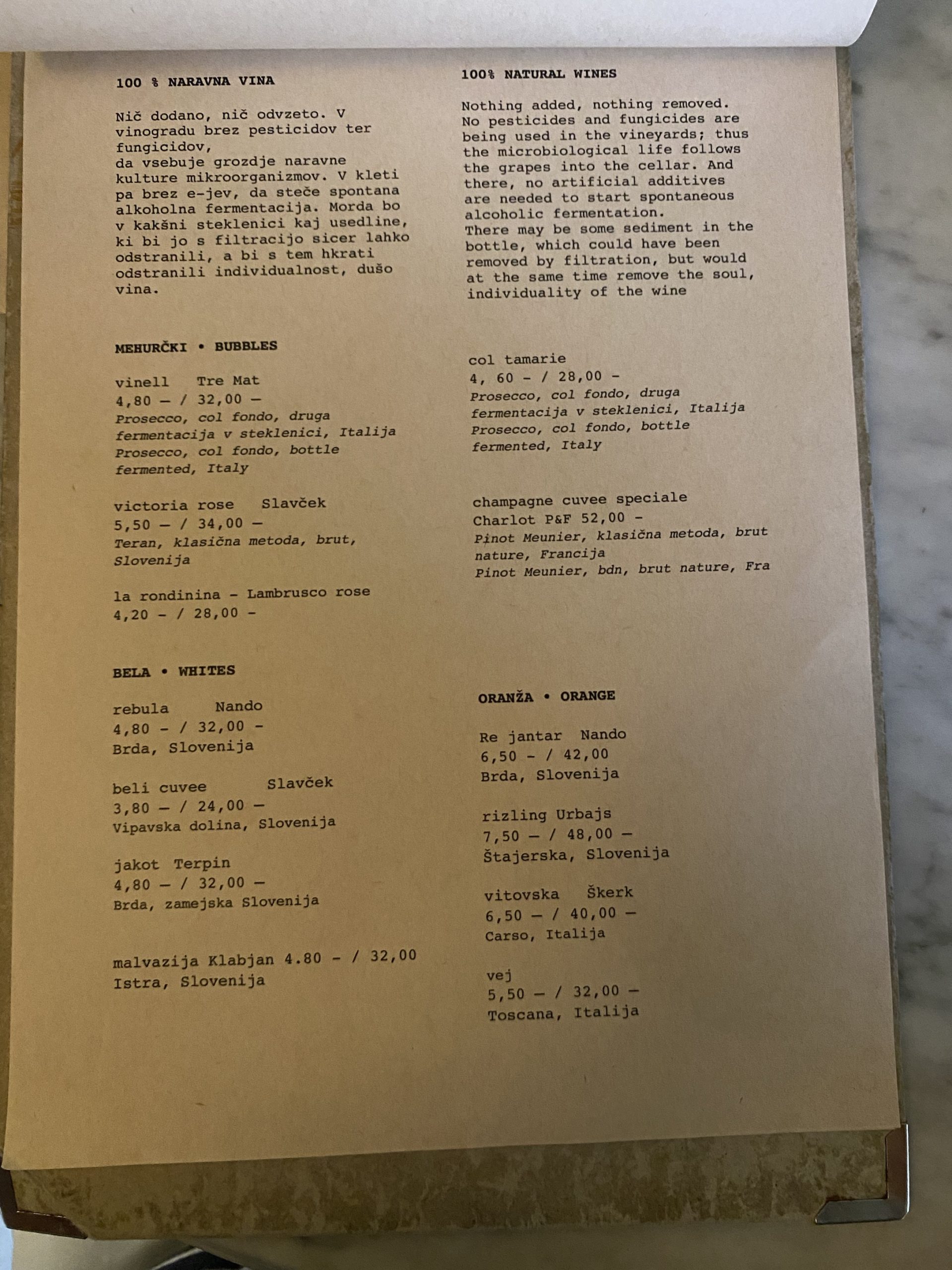
Wine is generally on menus priced by the deciliter, and served (like beer) in a glass with a measurement line. Since the pour has to cross the “1 dL” line, that means that a glass pour ends up around 3.5 ounces. We found this practice perfect for tasting: it allows for room to swirl the wine when served, and it also allowed us to try a number of different wines (either pairing with food courses, or just tasting through the wine list).
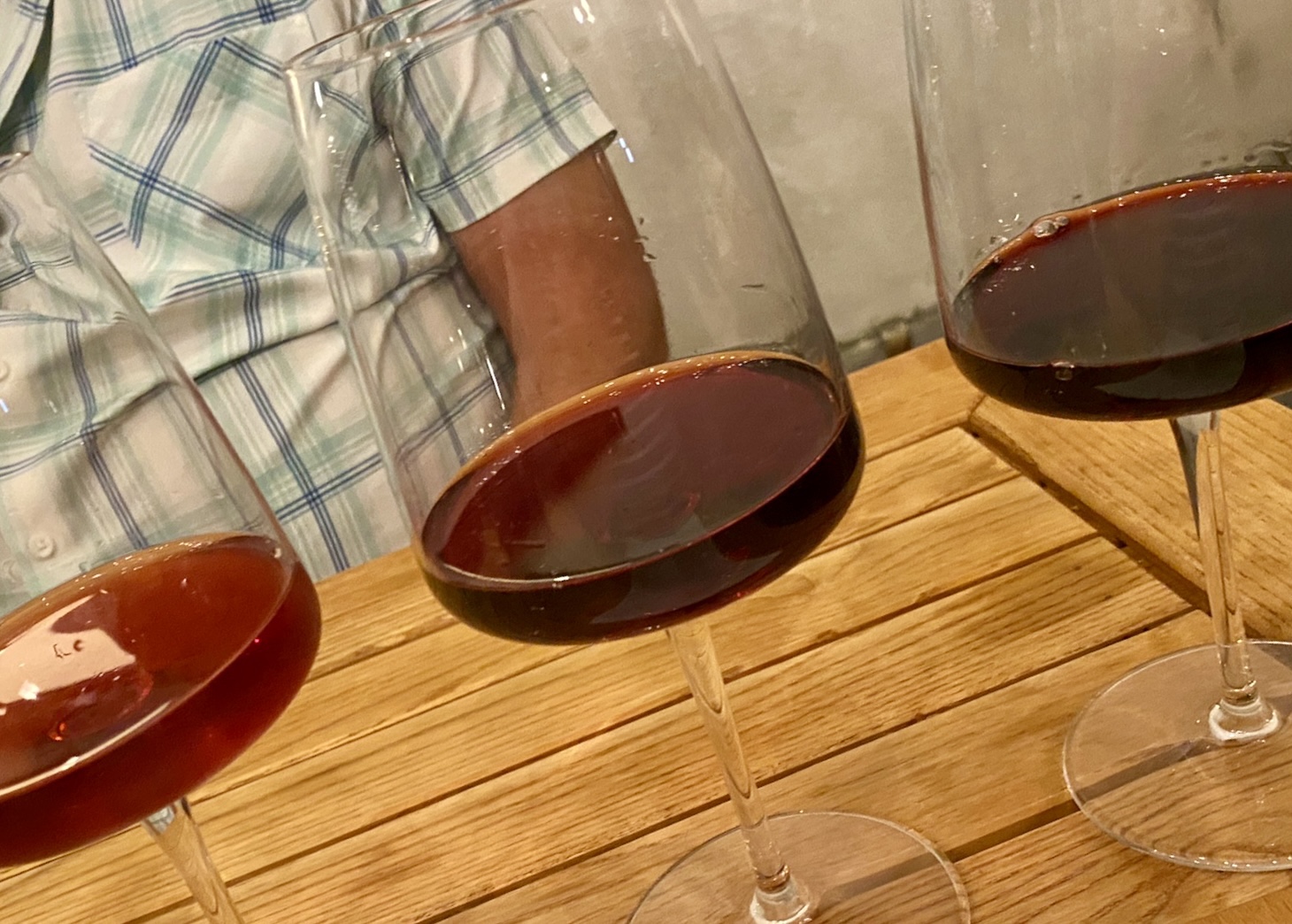
The wines in Slovenia did not disappoint. They were fresh, fruit forward, and balanced. They were also affordable! A dL of wine roughly cost anywhere from $1.50-$5 depending on the wine and the establishment.
Lake Bled, Slovenia
Look at this view, sigh. What a magical view.
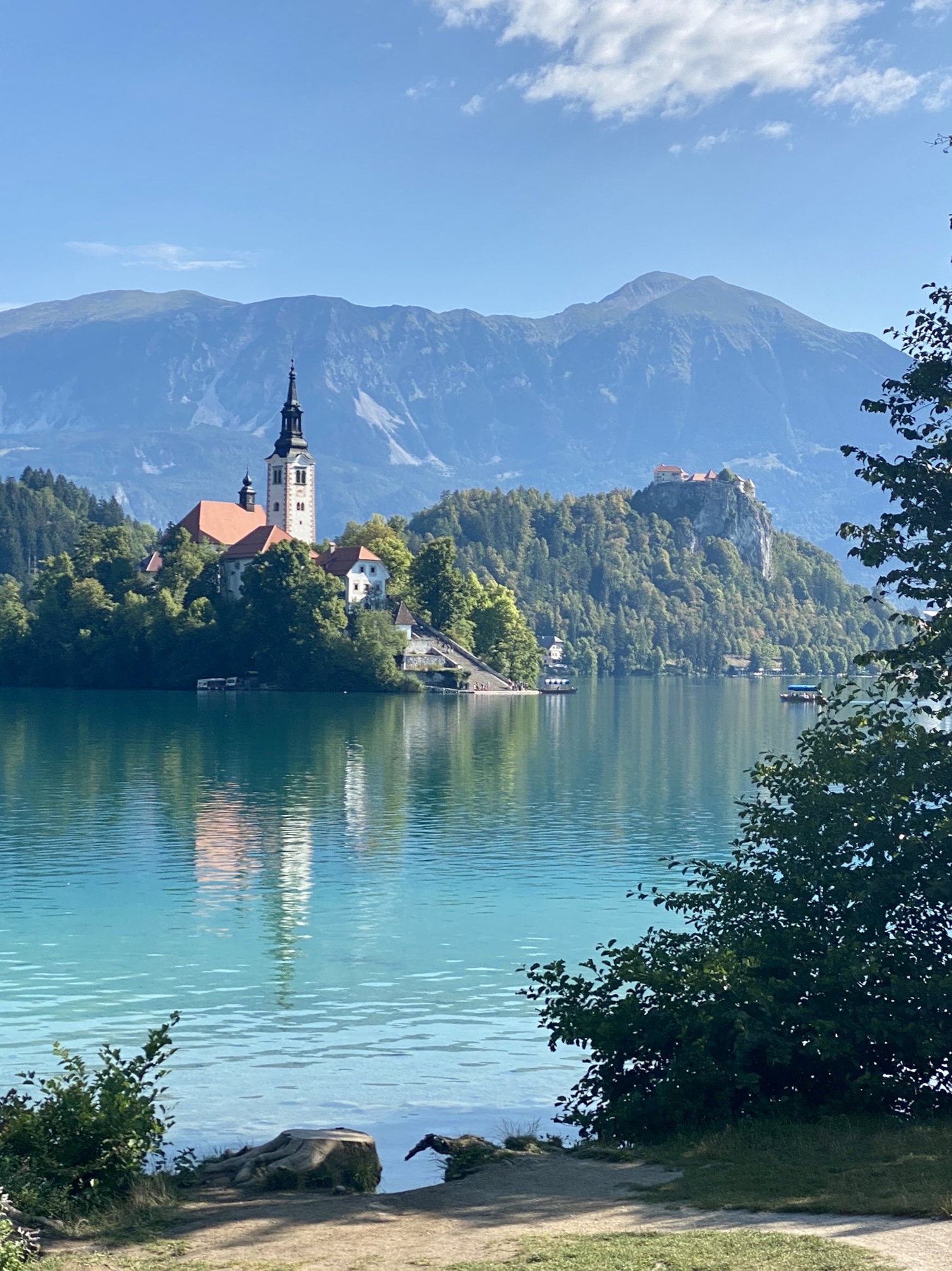
Around 35 miles north of Ljubljana (near the Austrian border) is a large incredibly scenic lake, and arguably Slovenia’s most famous attraction, Lake Bled. It is generally accessible by train or bus (although our train back was delayed due to a small forest fire!), and there is even a free shuttle that travels around the area.
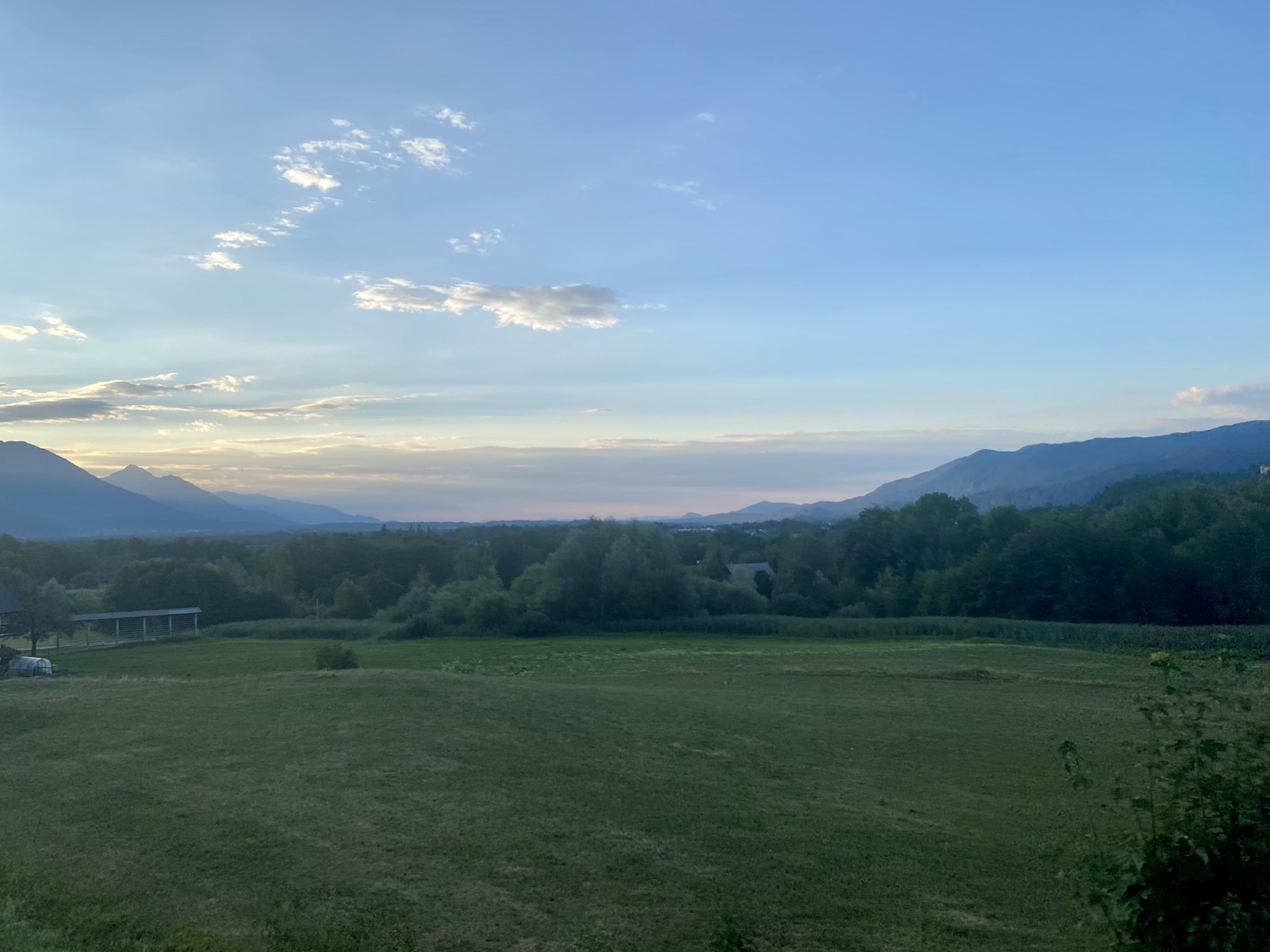
We took an early train from Ljubljana to beat the crowds and to see the sun peek over the side of the mountains, and we were struck by how scenic the Slovenian countryside is. As the train moves north into the Alps, the hills get taller, and there are steeples and castles that reveal themselves as the train sways around the bends.
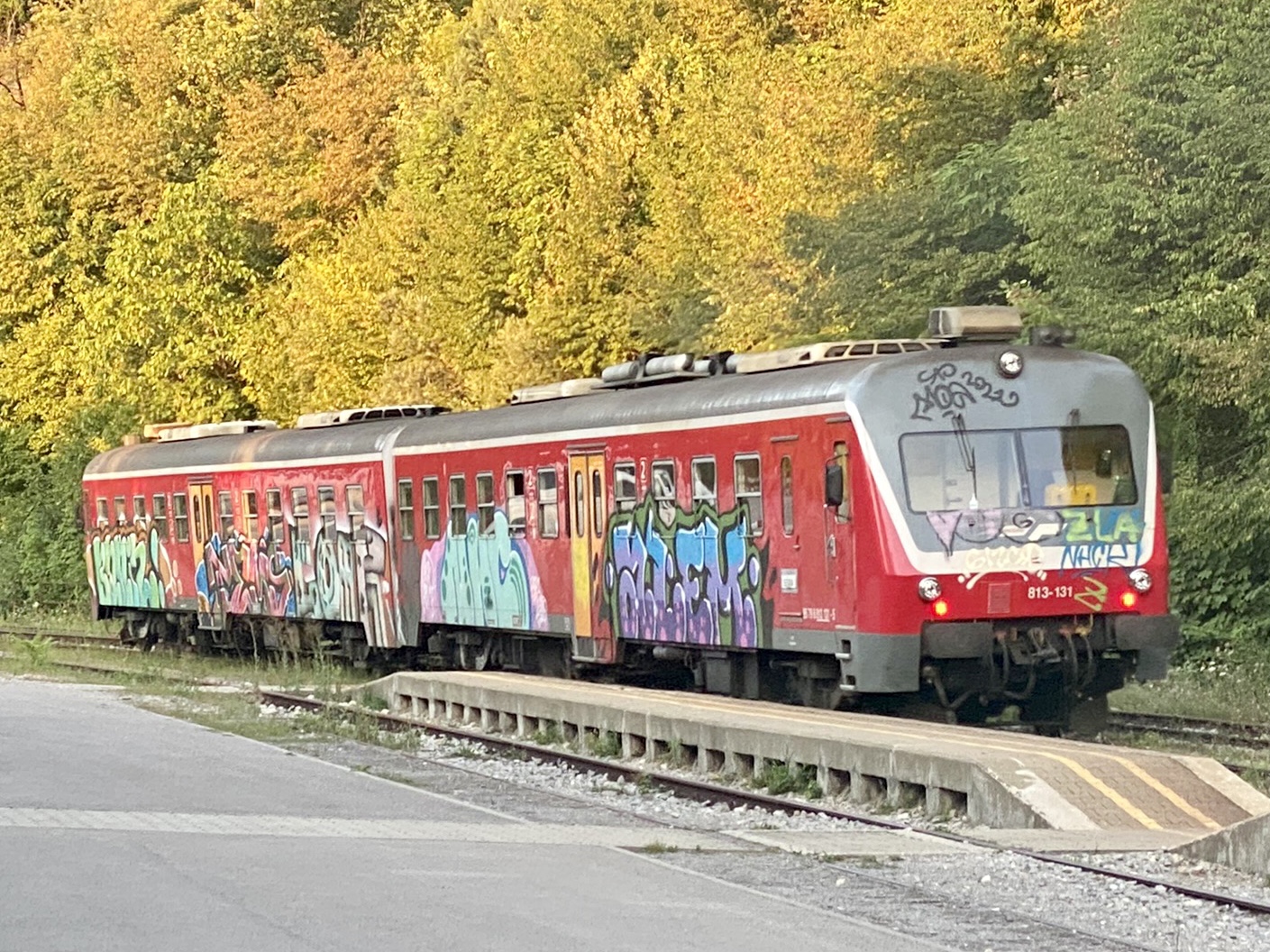
There is a wide path around the lake that was being used even in the early morning by walkers and bicyclists. When we arrived there was one lone hot air balloon floating above the hillside around the lake. It was so quiet we could hear the flame hissing as they ascended and descended around the castle.
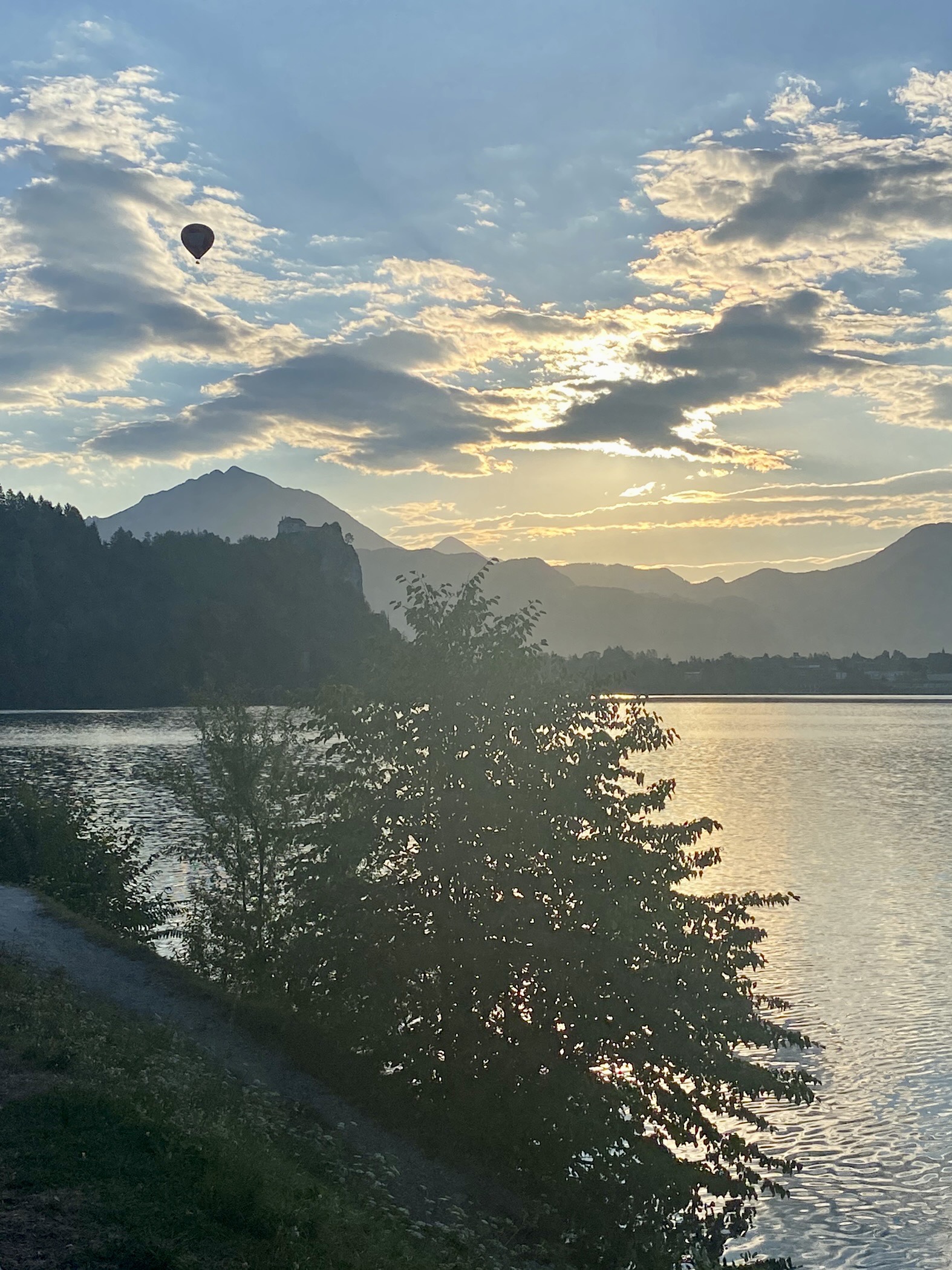
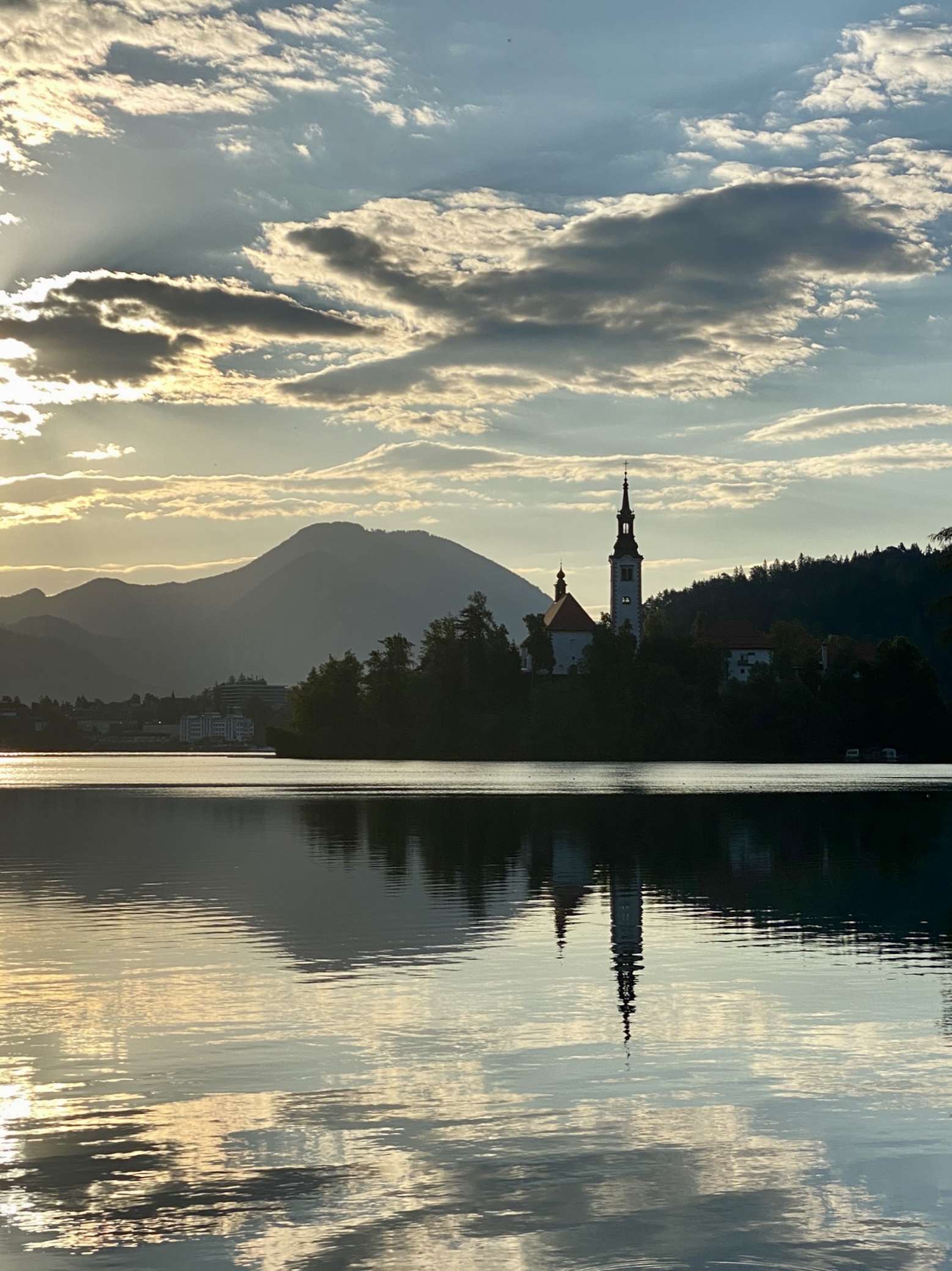
Two landmarks can be seen from almost every angle of the shore: First, Bled Island is in the middle of the lake, with a monumental 171 foot tall church. The island is only accessible by boat (or swimming, for the brave). Second, Bled Castle is on a hillside to the northeast of the lake and adds to the backdrop of the mountains.
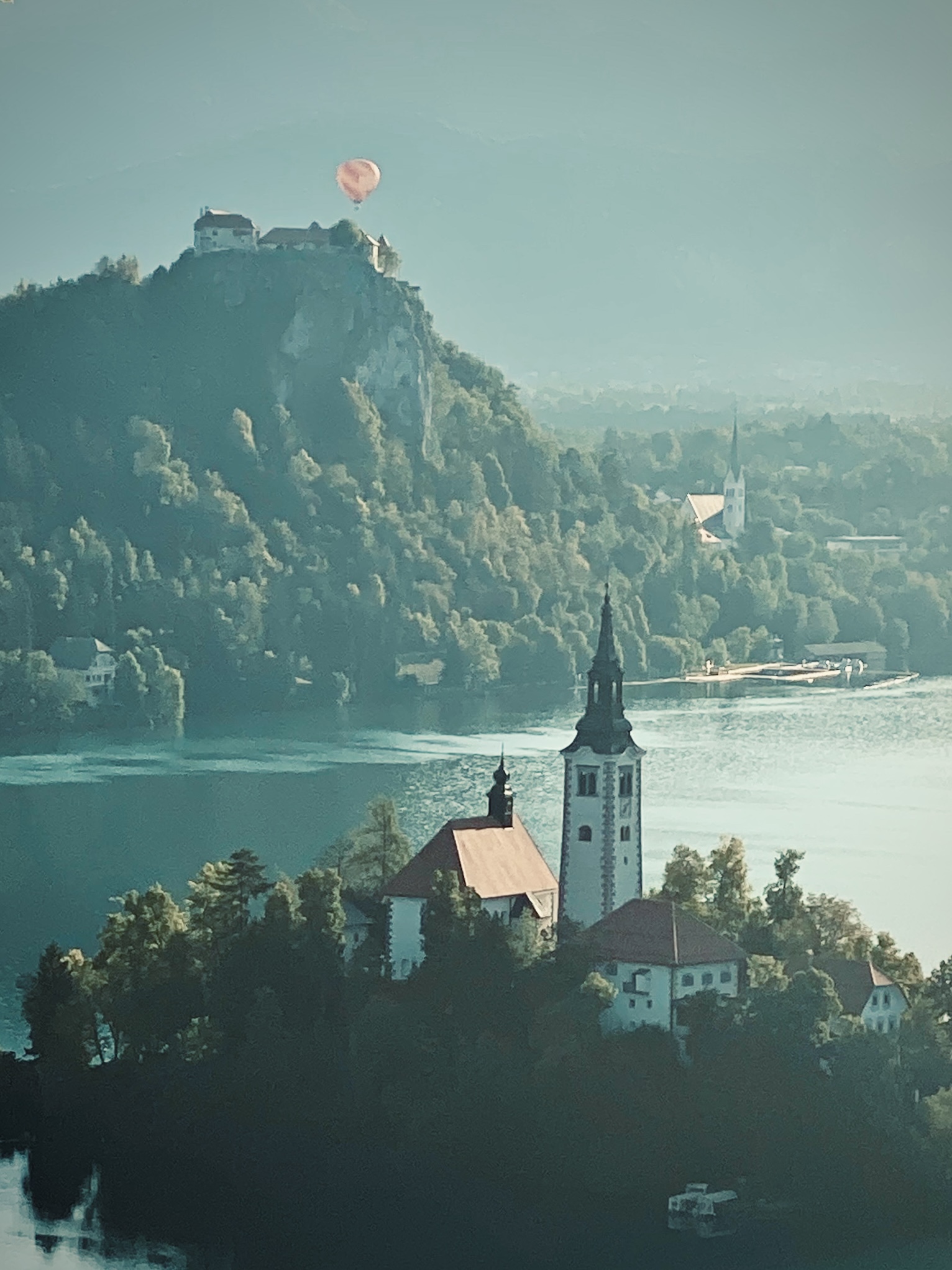
The lake itself is lightly-developed throughout. There is one small town, Bled, on the east side. There are a few hotels and pensions just off the lake, but none that block the lake access. At the lake level are swimming areas, boat rentals, and the traditional wooden boats that have transported people to the church for centuries.
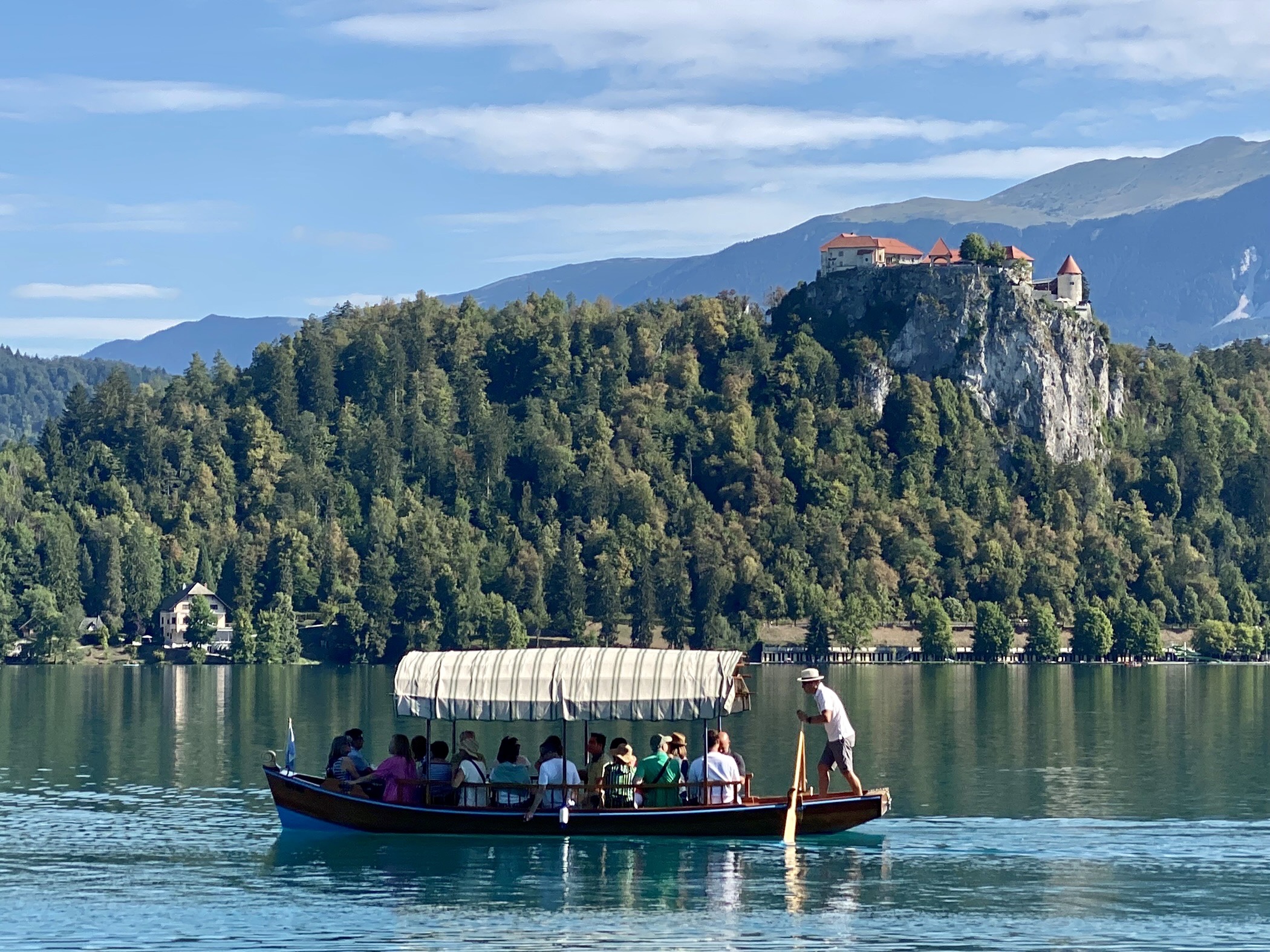
In addition to enjoying a morning stroll around the lake, we chose two hikes for the day and we half circumnavigated the lake. All in all we hiked about 13 miles.

The steep hills on the west side of the lake offer a network of hiking trails. We went to the viewpoints at Ojstrica and Mala Osojnica before heat from the sun warmed the area up.
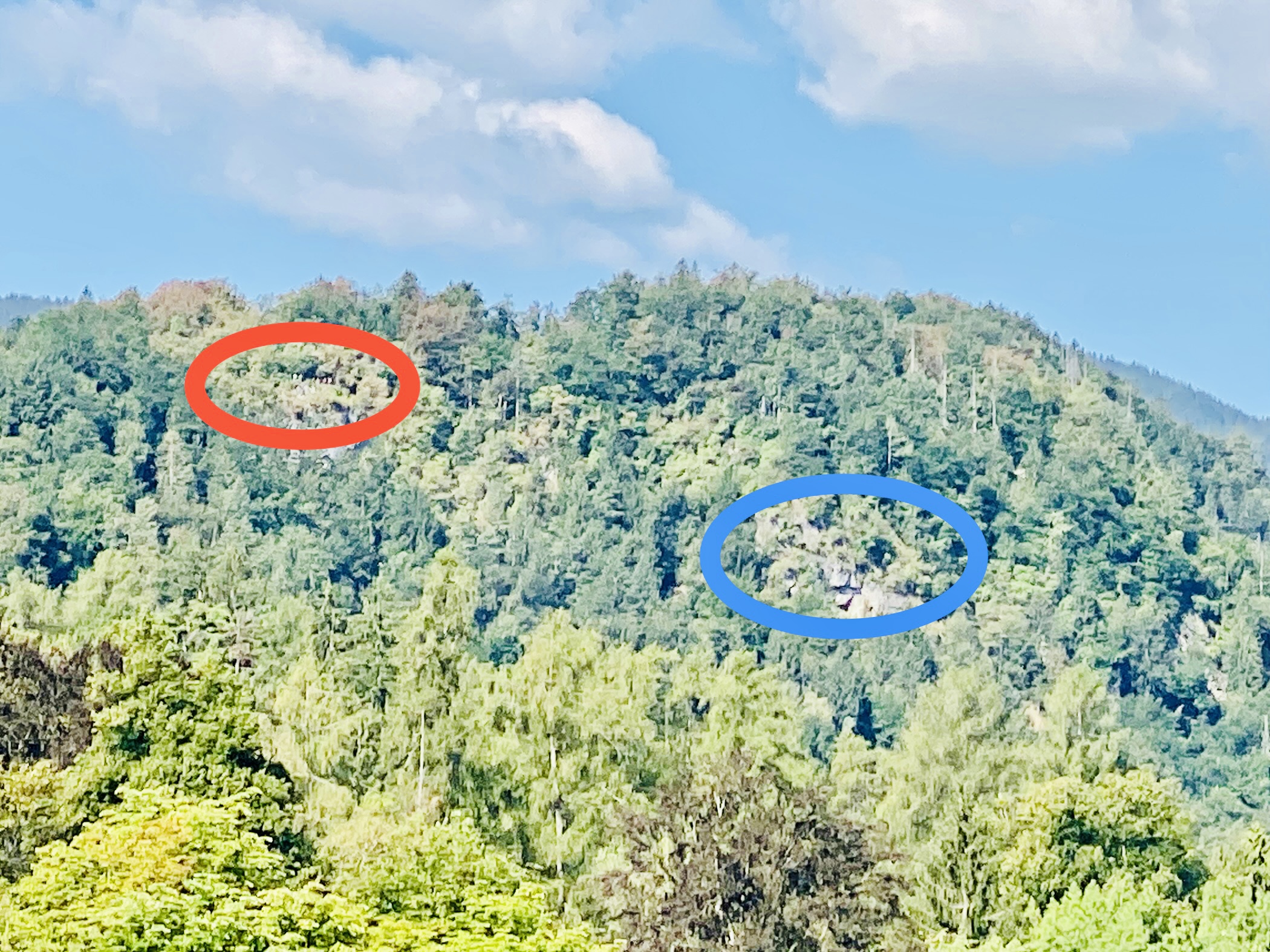
The trails are well-established and well-signed, and it is difficult to get lost since the lake is typically in view. But the trails are quite steep in places, including a metal handrail and ladder/staircase built into the rocks.
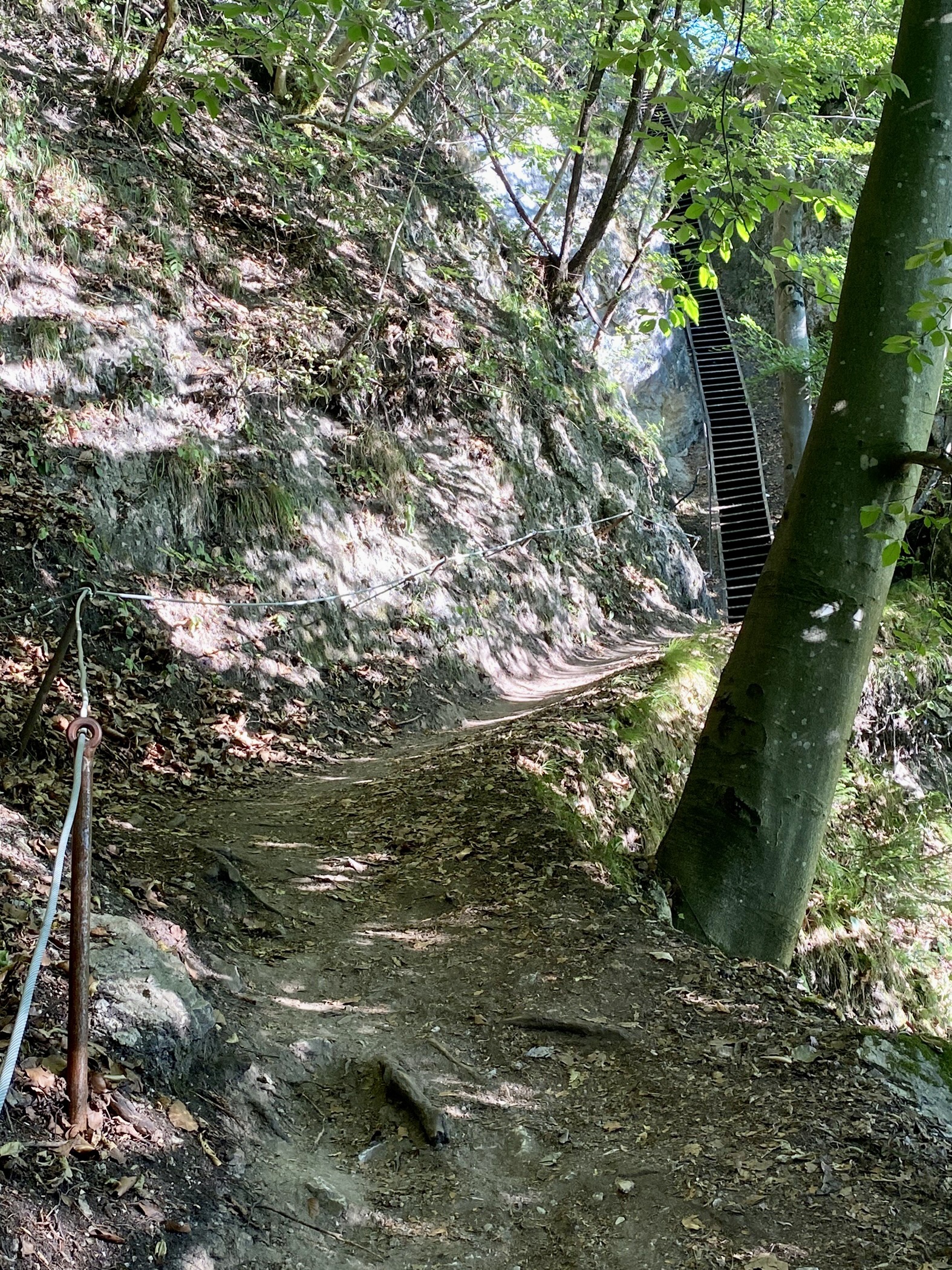
The views are incredible and worth the effort.
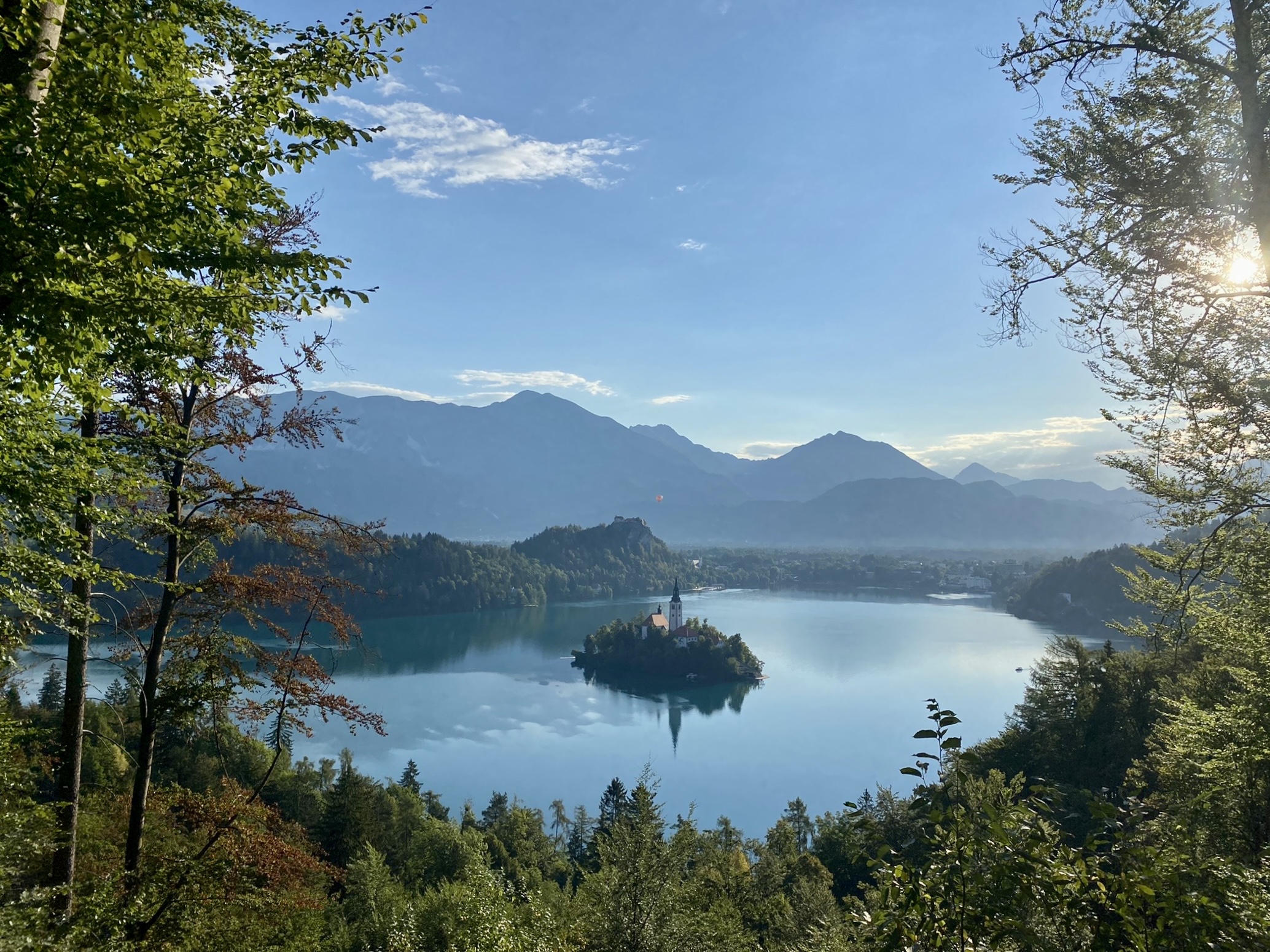
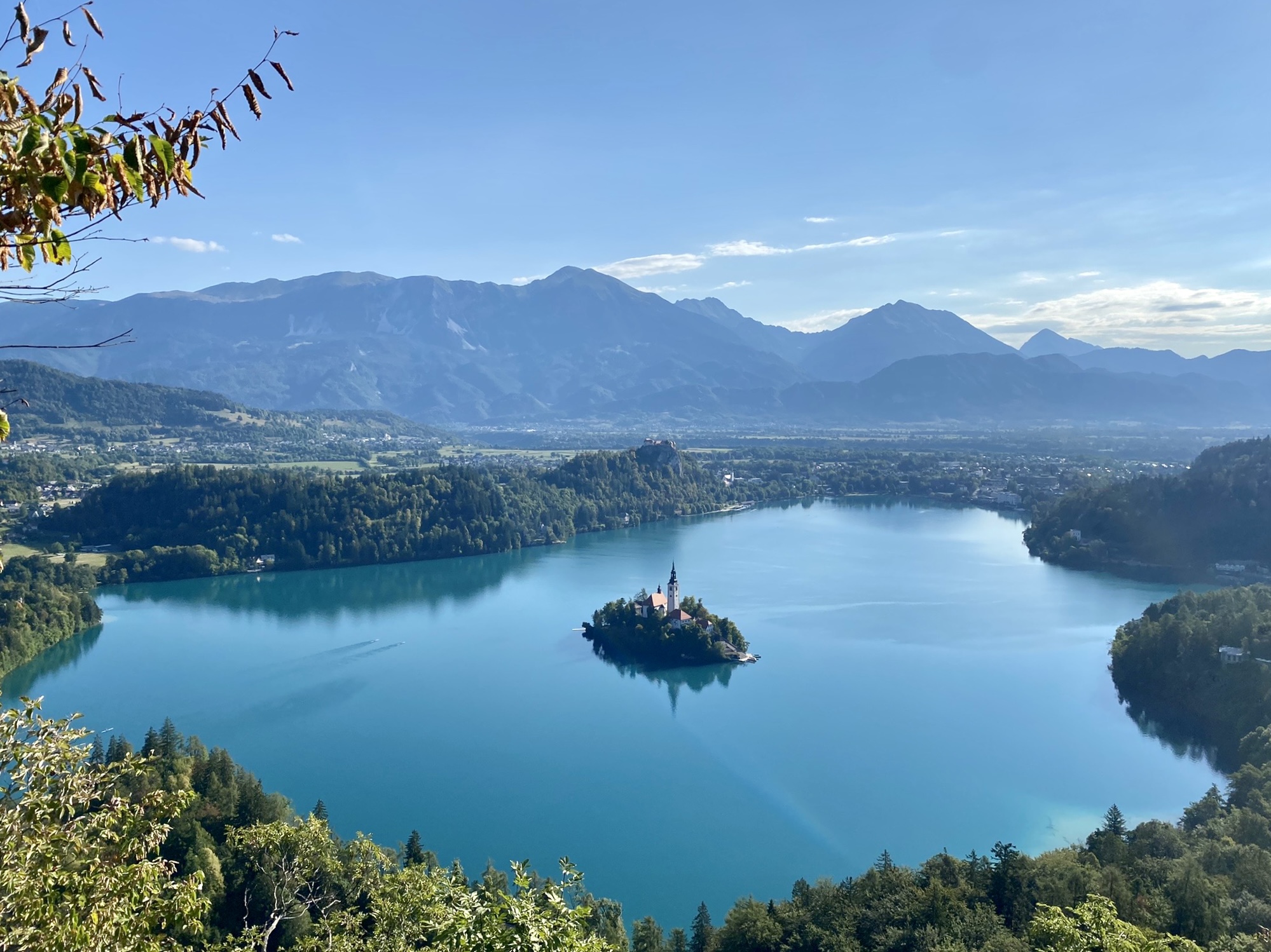
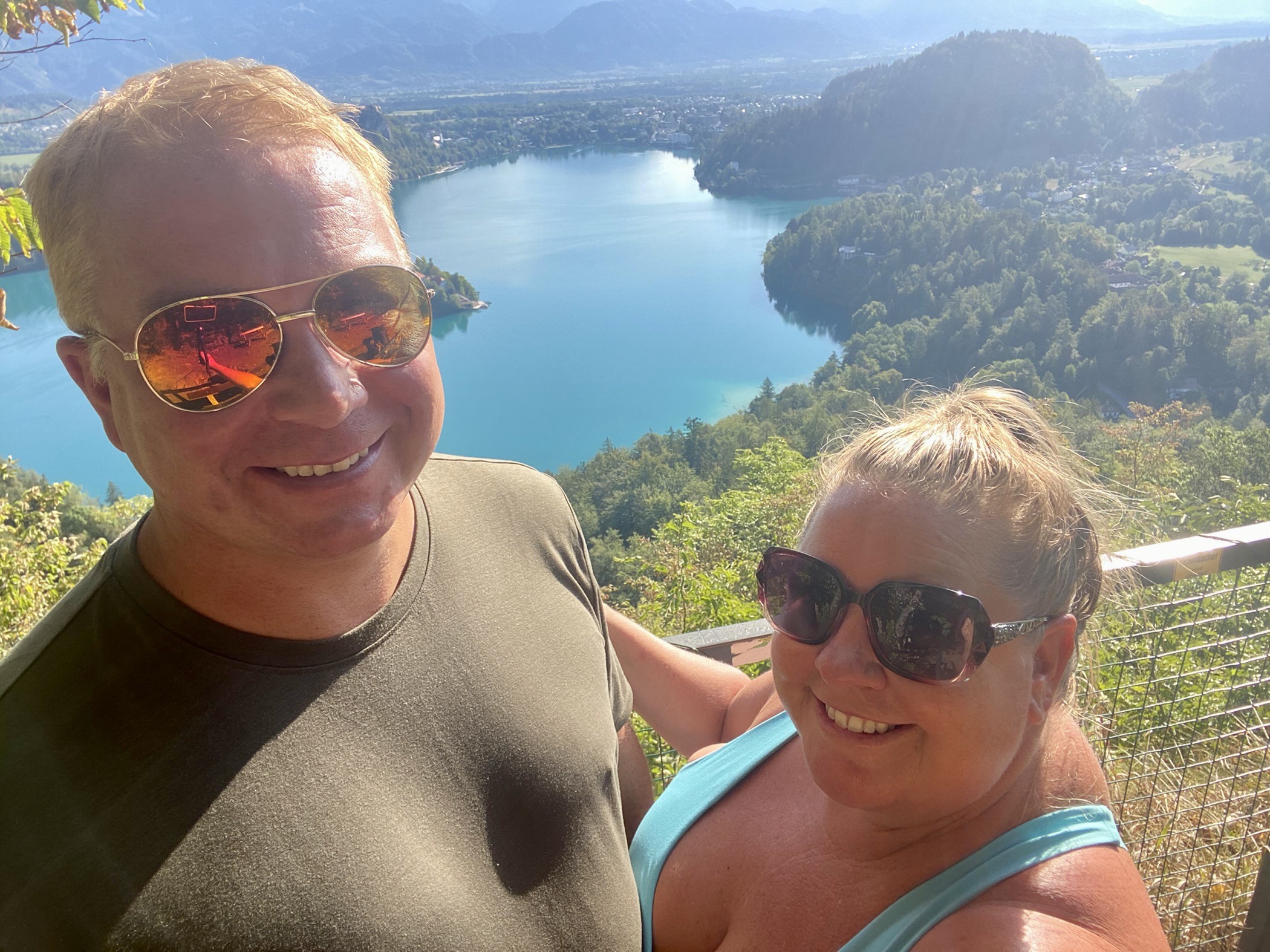
After our hike up and down, we followed the paved path around the lake to the other side. We stopped for brunch and for views along the water. The lake is a stunning blue color, with extremely clear water.
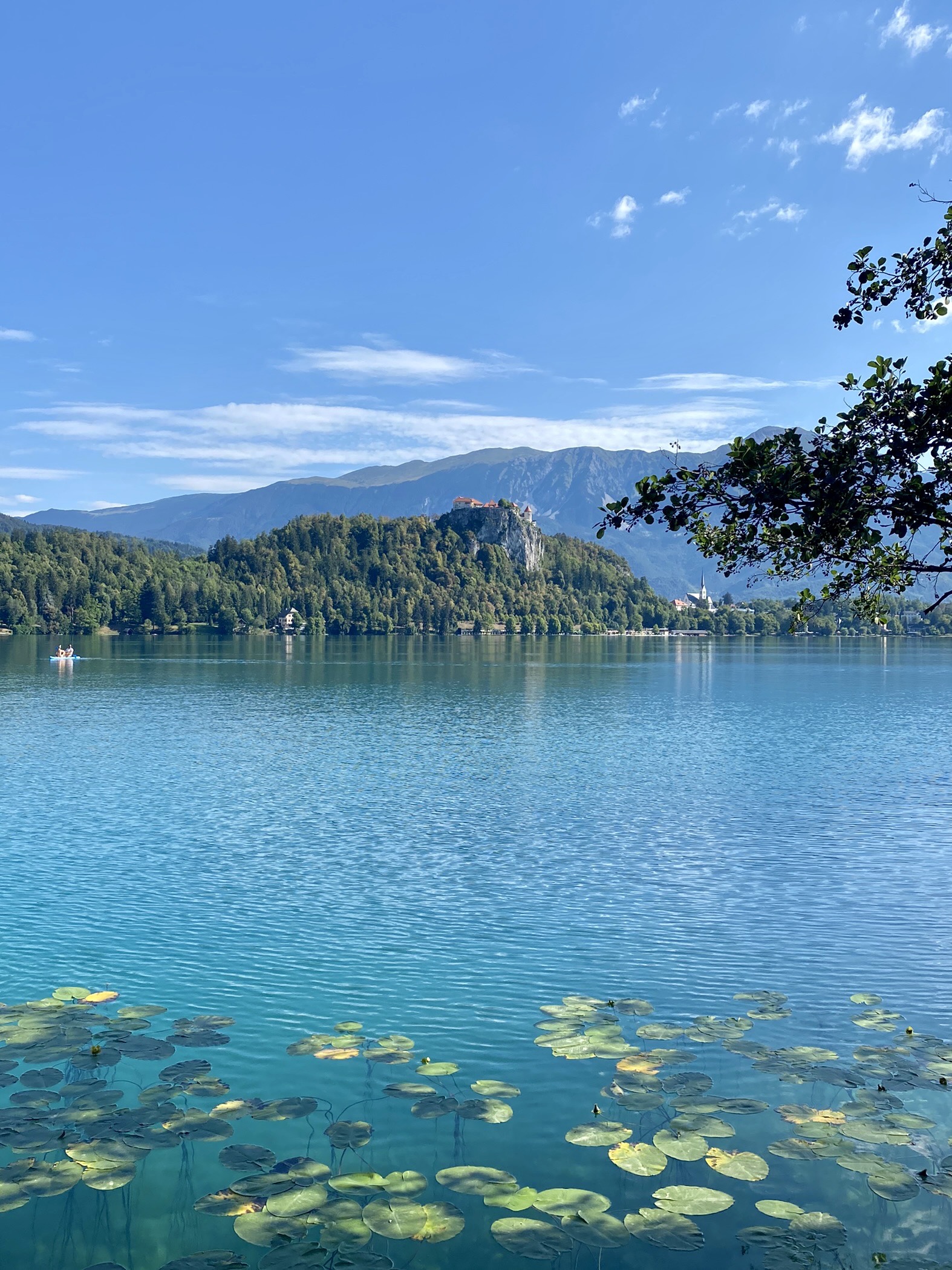
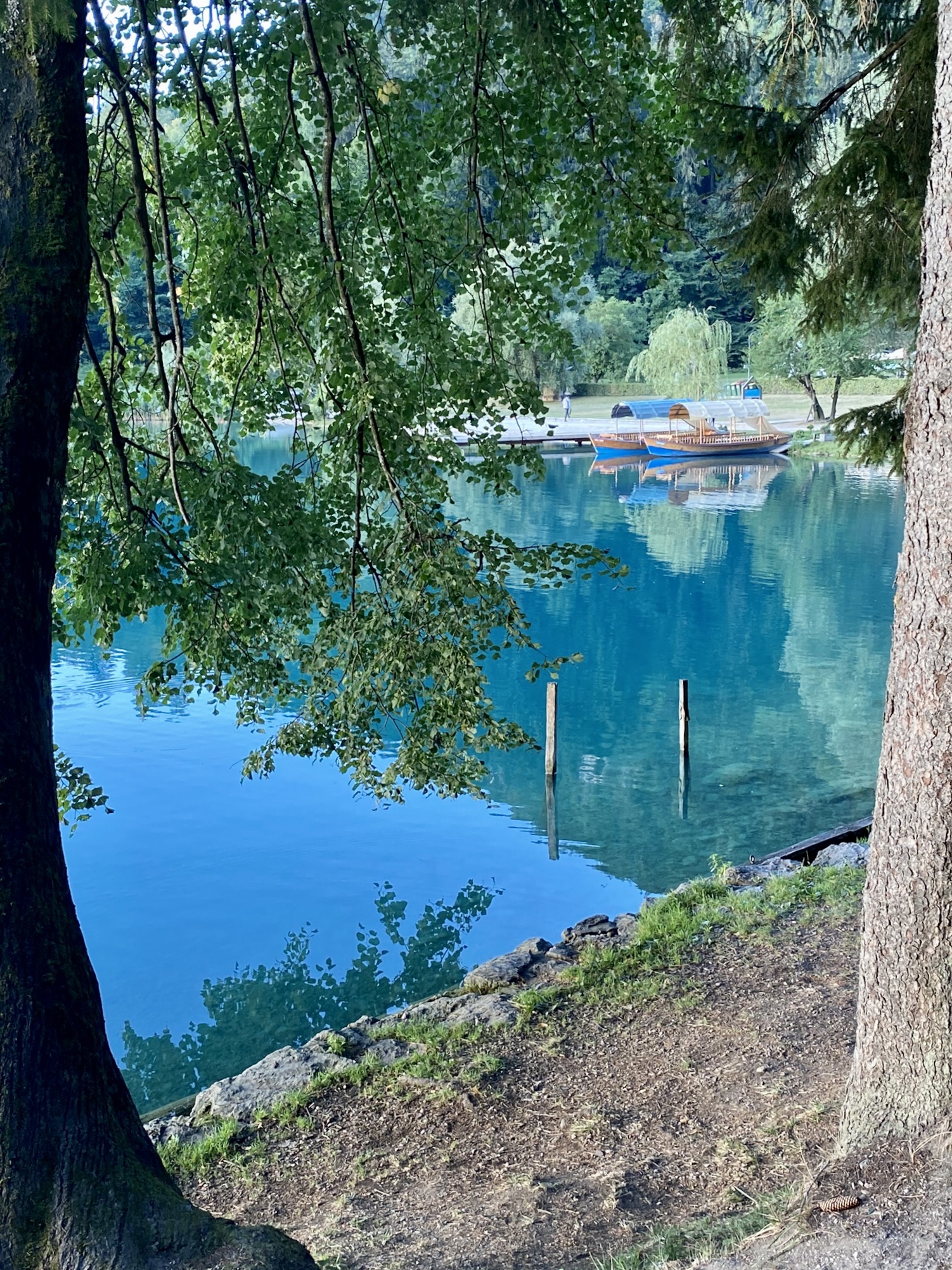
We closed out our day with an afternoon walk through Vintgar Gorge. This is an easy 1-mile, one-way path that zig-zags across a scenic river. Access is controlled by tickets, which must be purchased online. This gave it more of the feel of a theme park attraction than a hike, but it is also necessary to keep the crowds manageable. The gates turn away people (like us) that arrive earlier than their specified time zone.

The walkways offered countless angles of the gorge and the vibrant river that is constantly changing the terrain.
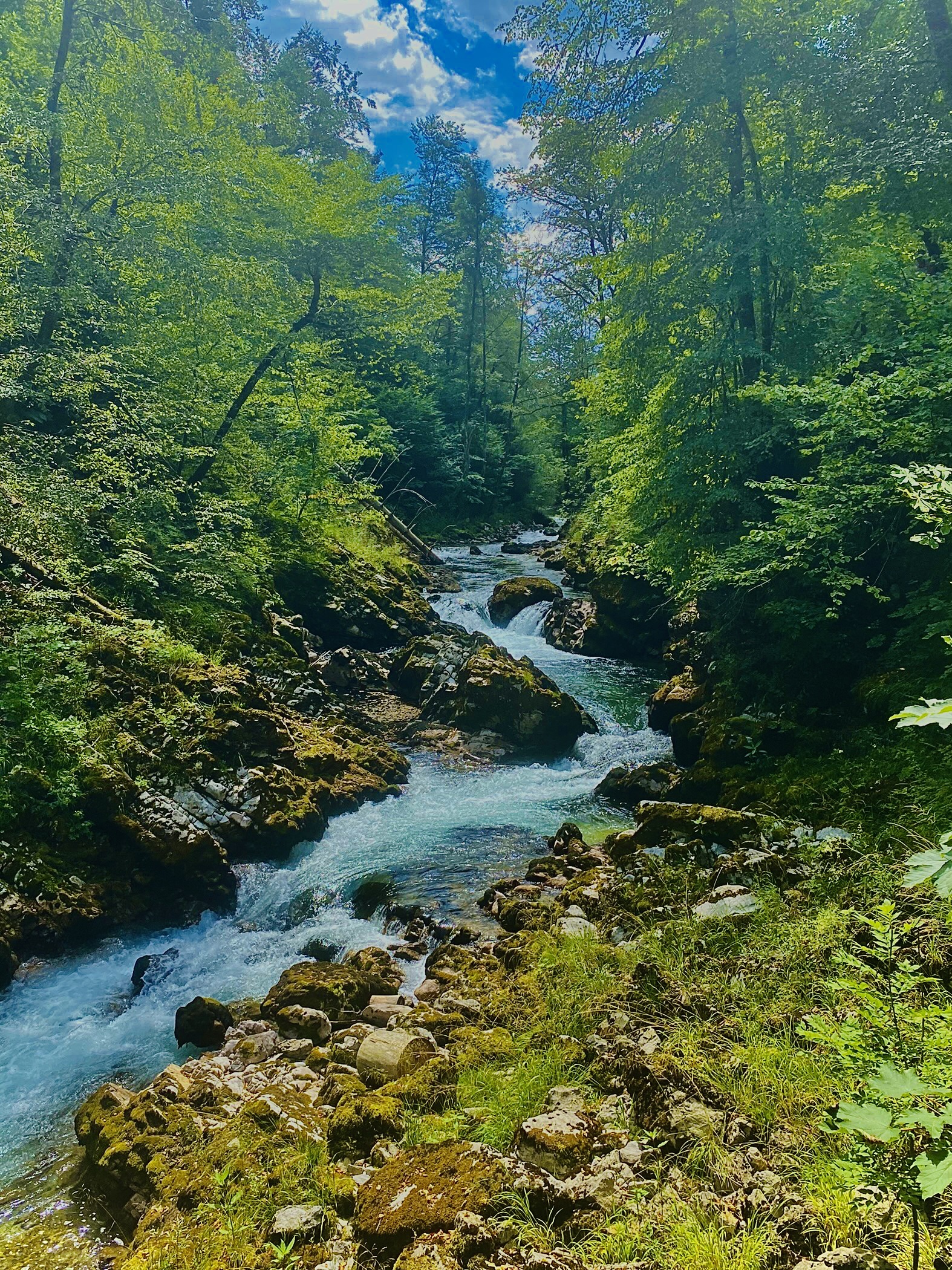
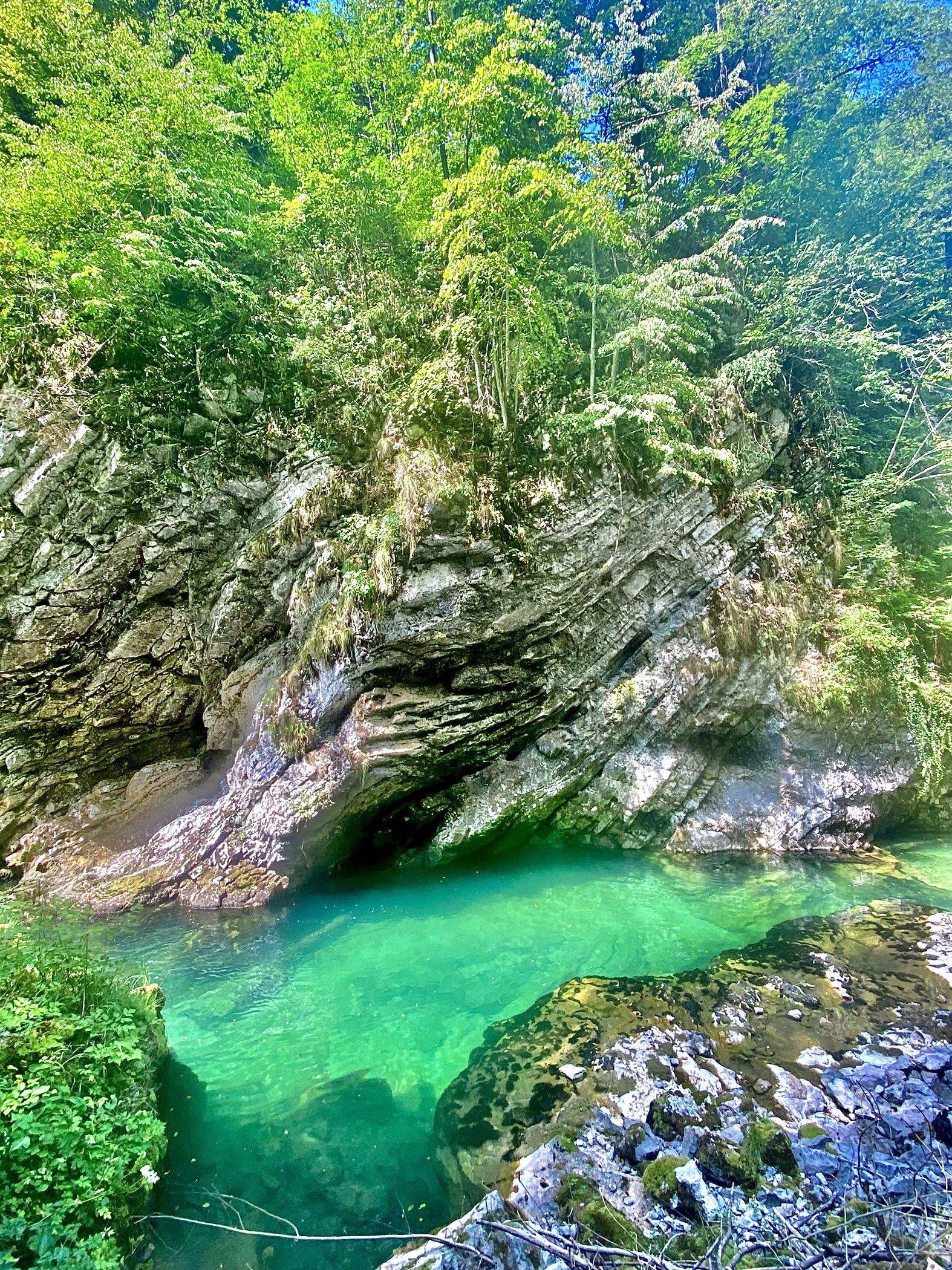
The flowing river traverses rock formations and there are areas of stillness as the water slows and then moments as it bubbles and plunges down several waterfalls.
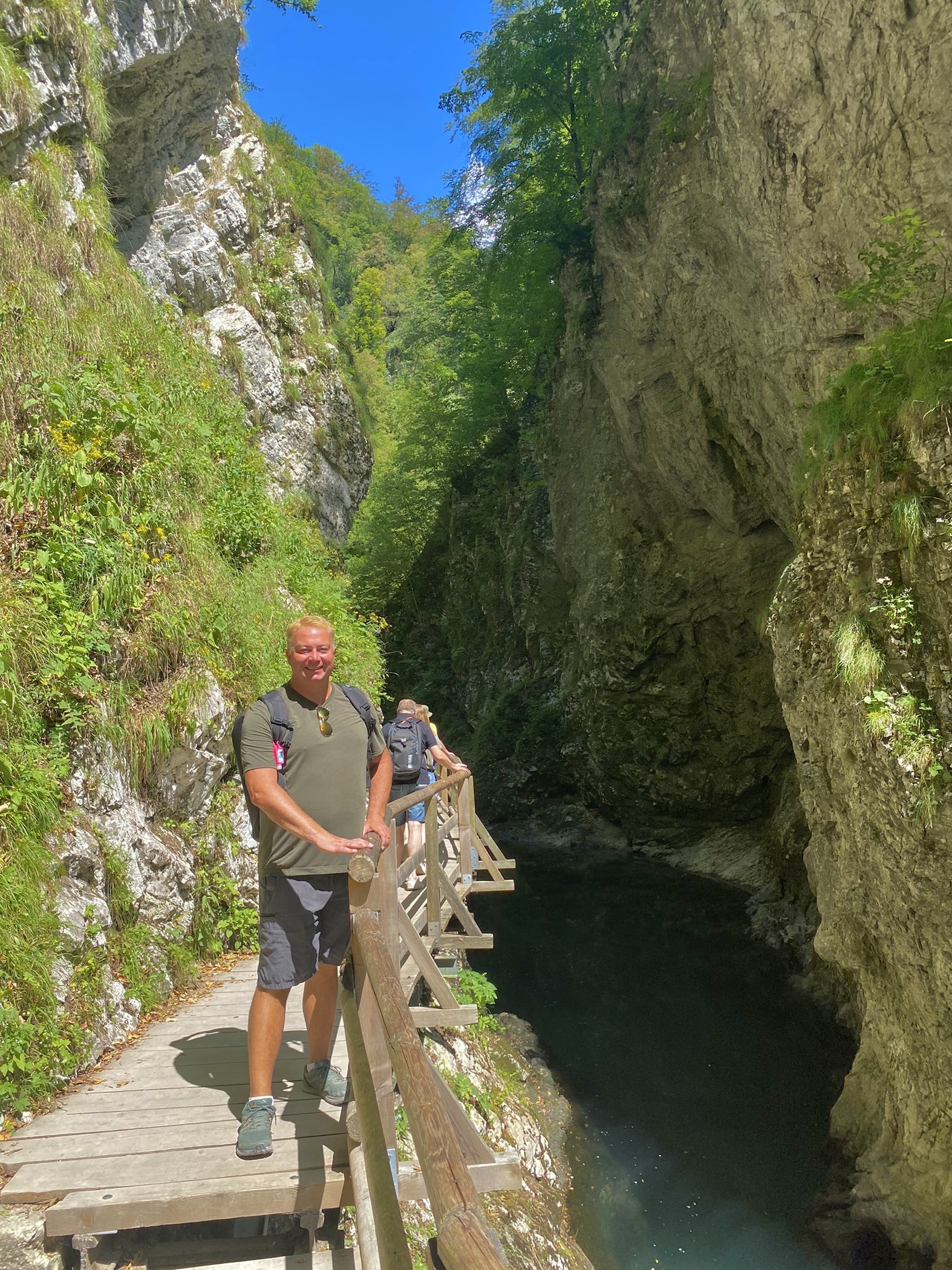
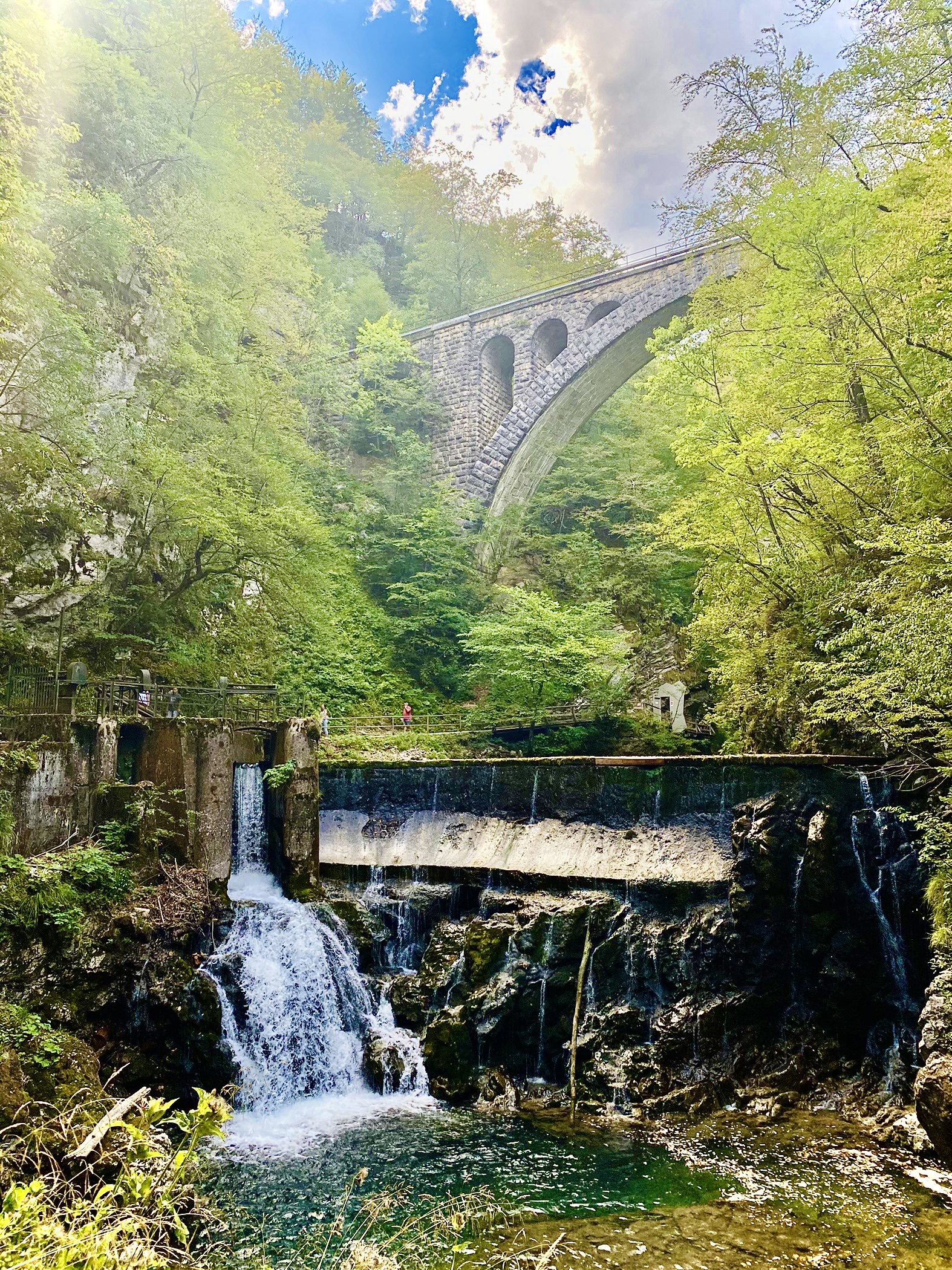
The trail along the gorge leads to a beautiful waterfall “at the end” and a decision on three paths out of the gorge. More on that below.
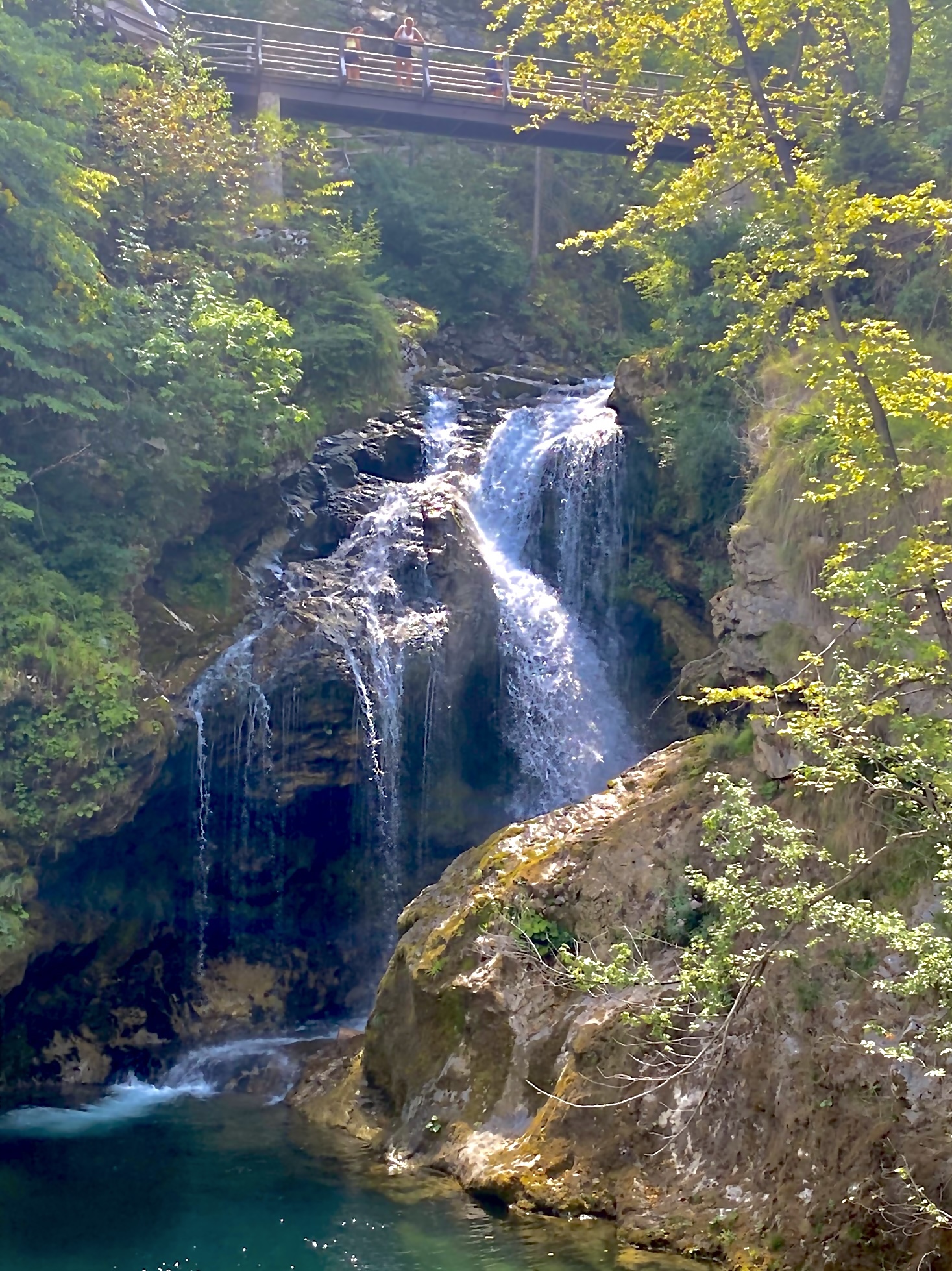
While the path itself was simple and one-way, coming and going is a bit more of an adventure. The Gorge is a couple miles north of Lake Bled itself. We took a free tourist bus from the Lake but then had a walk through a small village to find the entry location. Then the trail ends in a different spot, which put us about a mile from the nearest train station. These were not difficult walks, but expect to spend more energy getting to the Gorge than walking through the Gorge itself!
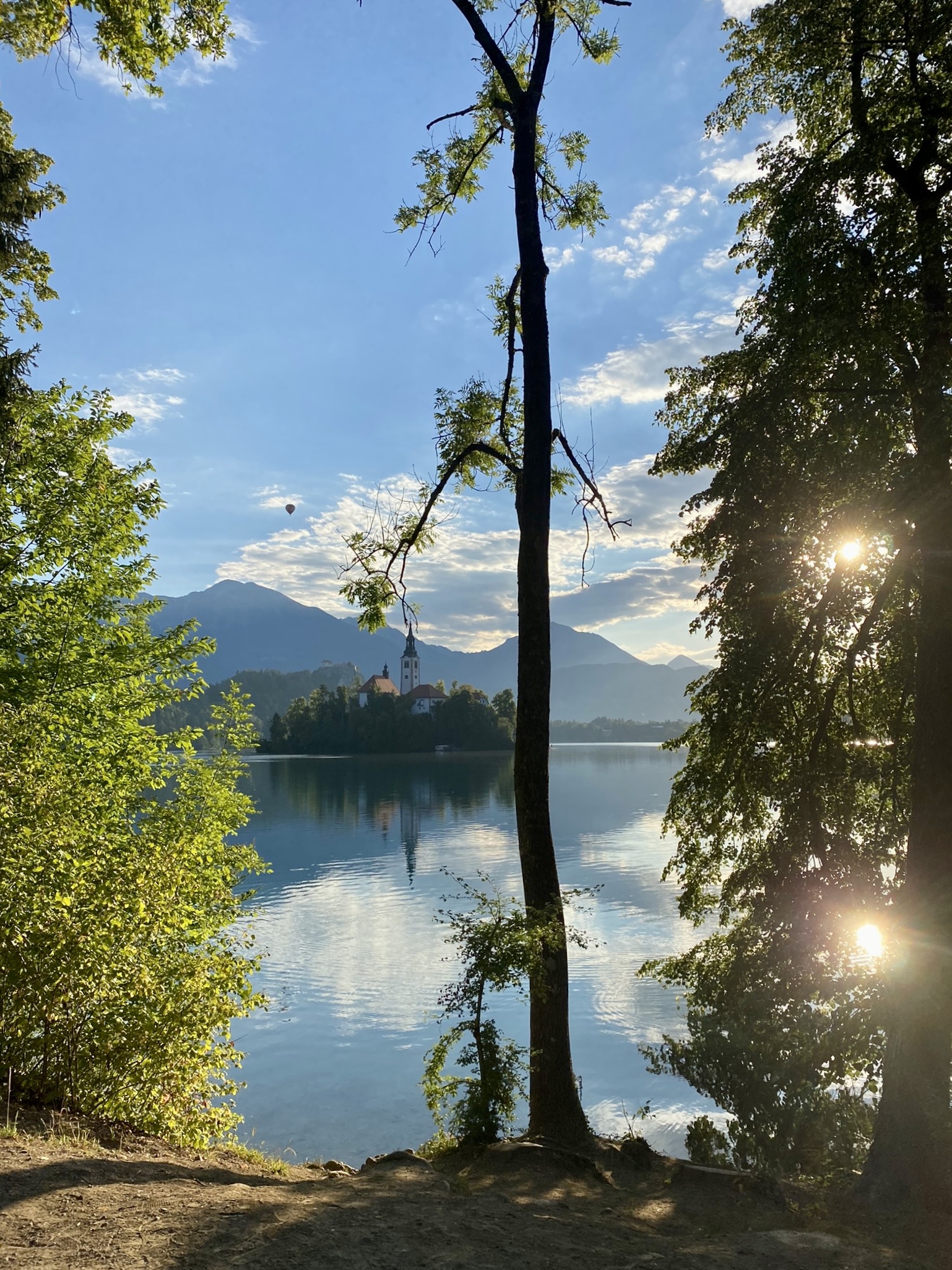
We did not make it there, but numerous locals and guidebooks stated that Lake Bohinj is similar to Lake Bled, only less developed and with more natural beauty. Something for our next trip!
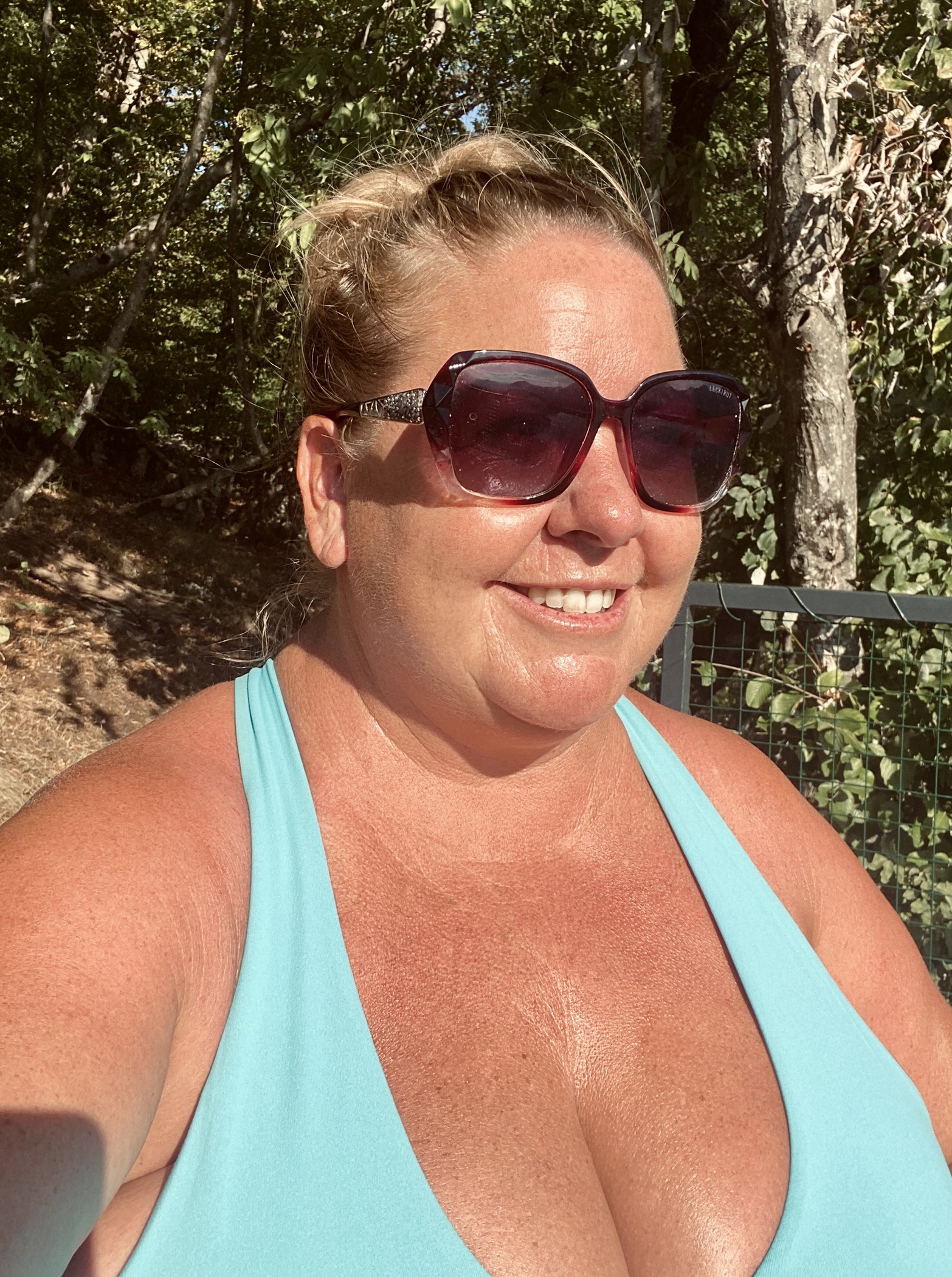
Maribor, Slovenia
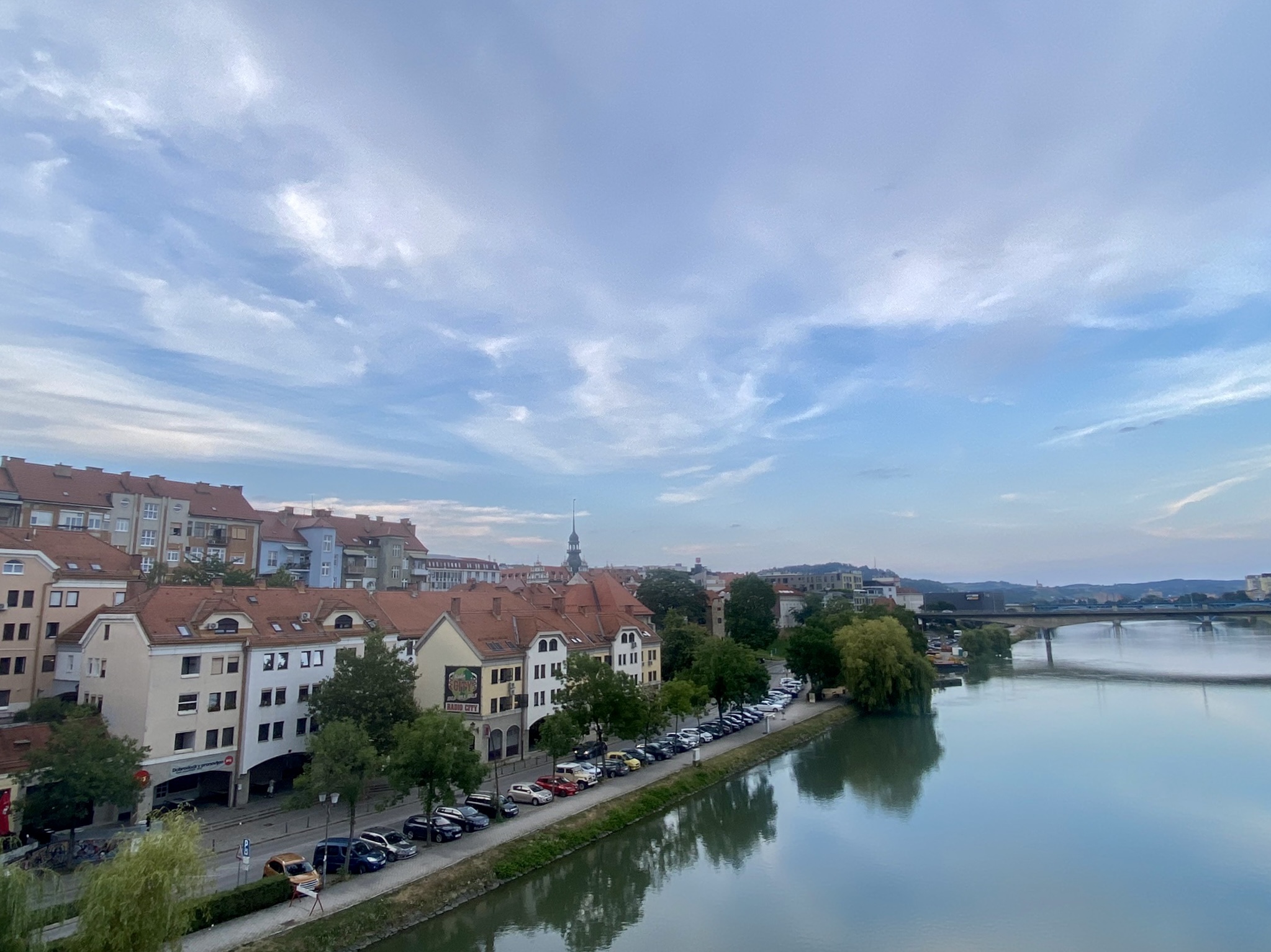
Maribor is the second-largest city in Slovenia, located in the northeast, near the Austrian border. It was very easy to get to by train or bus. The train worked better for our schedule.
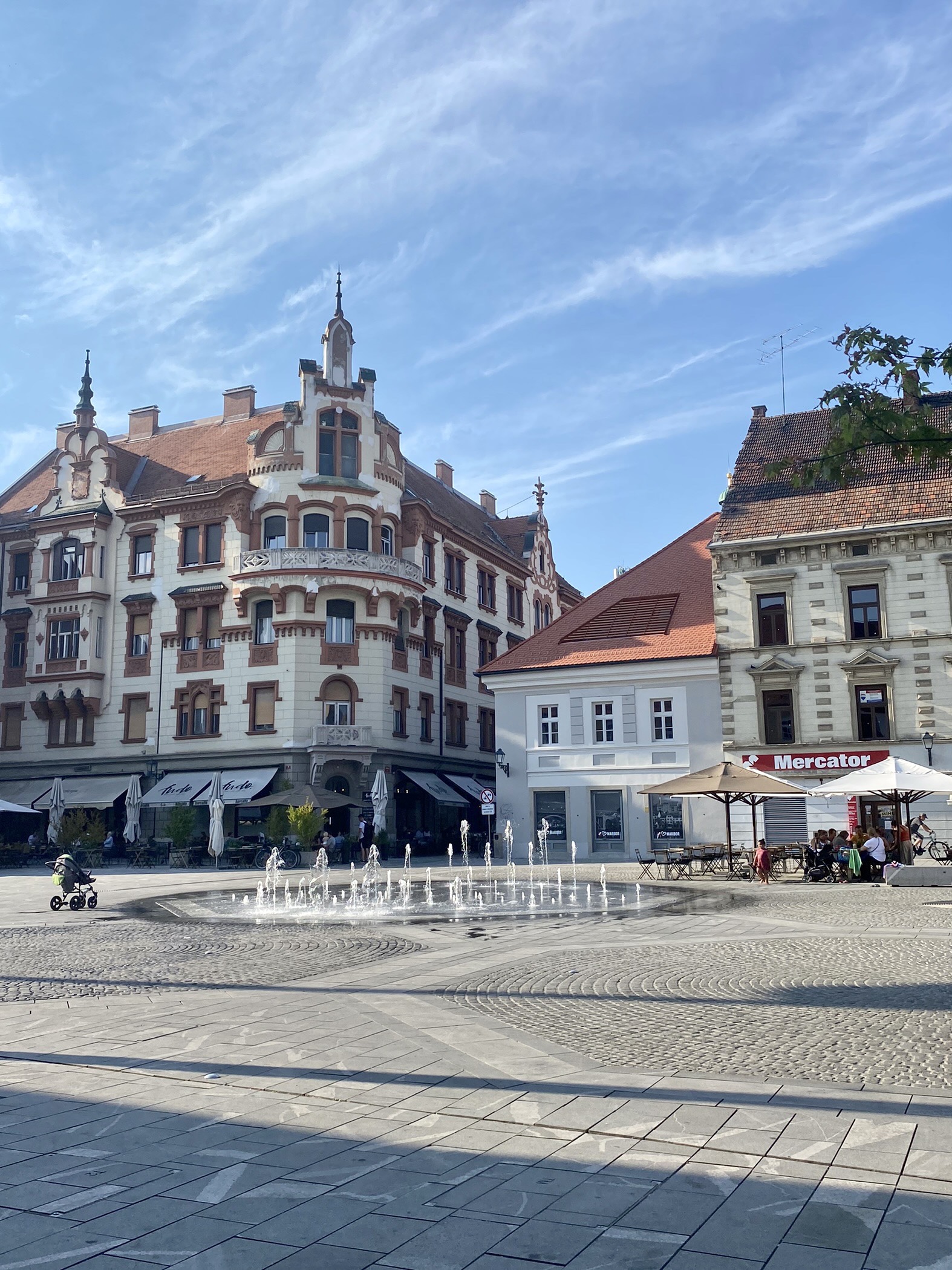
It is a fairly typical town, with small cobblestone streets, scenic squares with churches and historic buildings, and cozy outdoor cafe terraces. For a midweek city adventure it seemed a little sleepy but Tammy enjoyed being out of the hustle and bustle for the day.
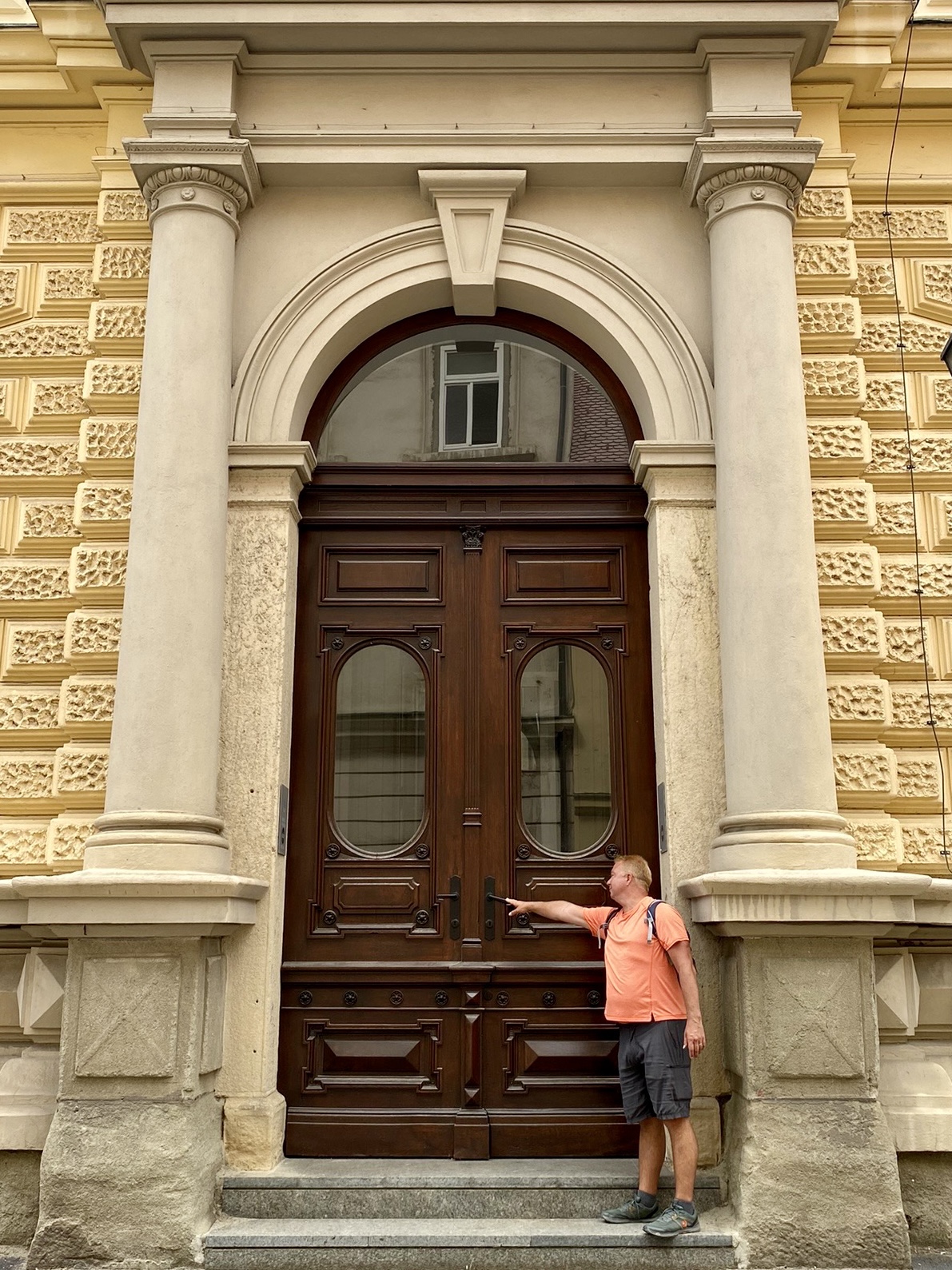

The town is known for having the oldest wine grapevine in the world, which was planted more than 400 years ago. Wine produced from this plant is reserved for dignitaries and special occasions. But inside the building is a museum that offers many other choices.
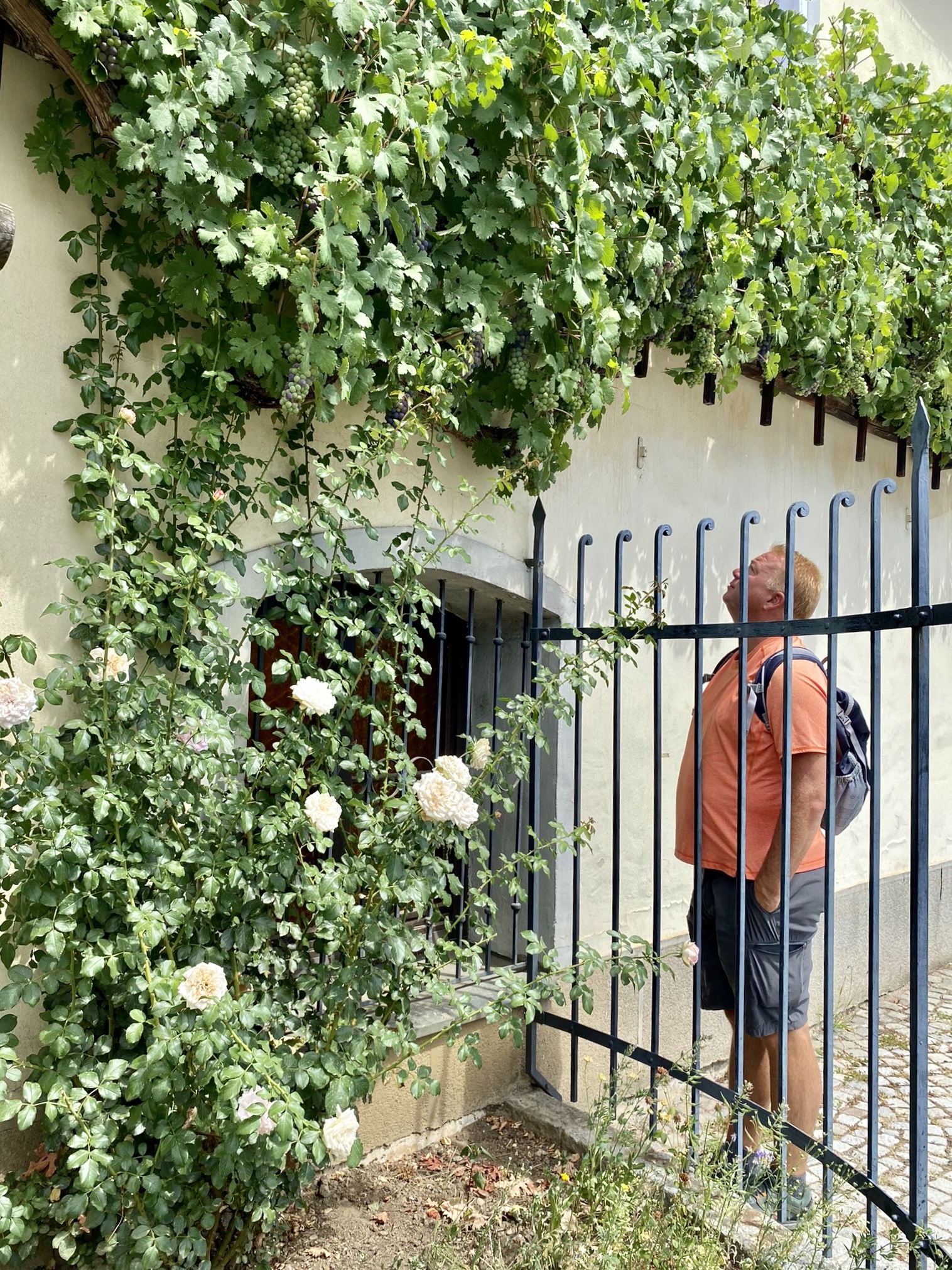
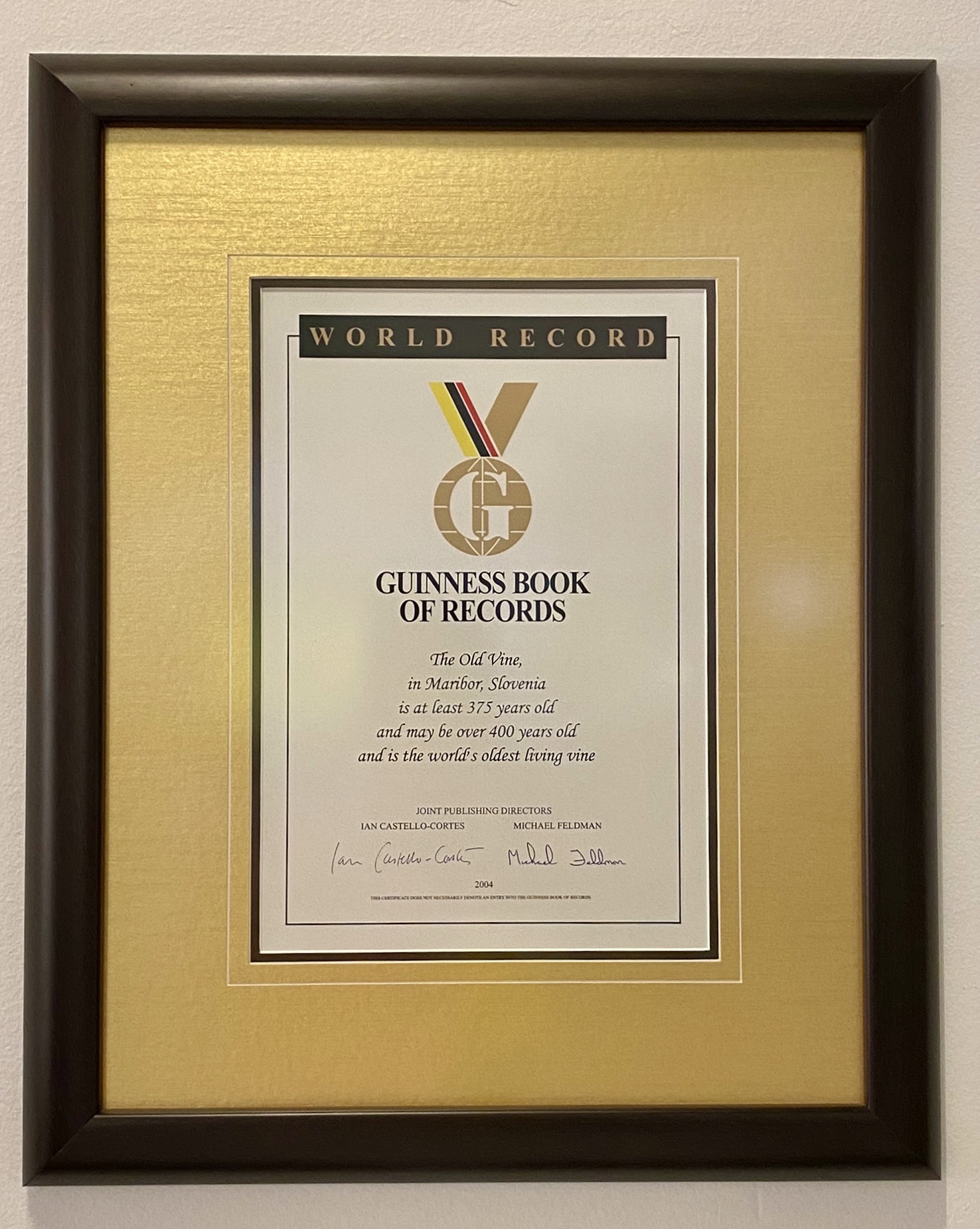
You start with a small exhibition on the vine itself (with photos of earlier dilapidation of both the vine and the building), and then have the opportunity to taste an outstanding collection of wines from Northeast Slovenia.
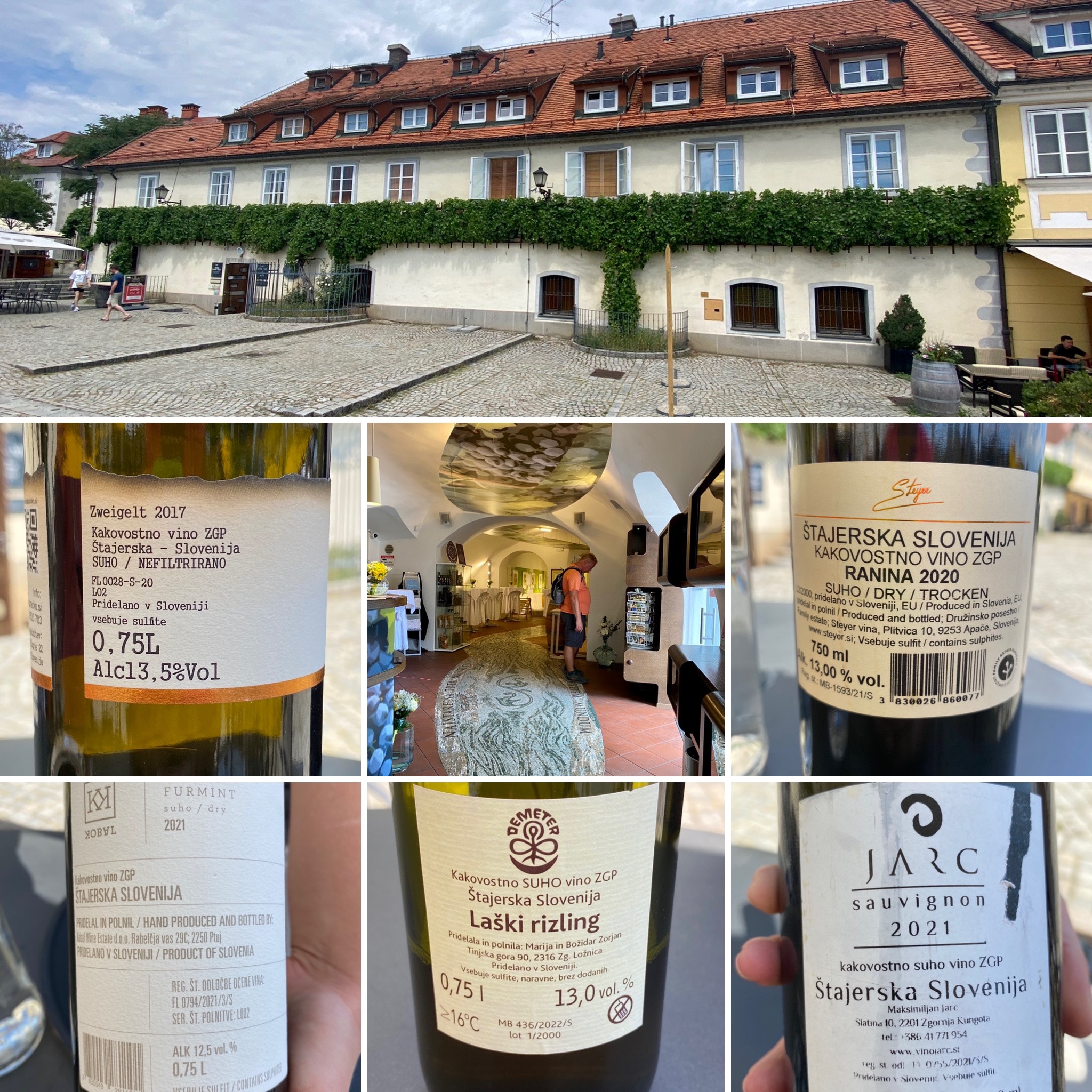
The staff was quite knowledgeable about grape varieties and eager to show off their local producers. Our favorite was a Zweigelt, which we have enjoyed from Austria and Oregon. Inside the store we saw the Kobal Penina Rose Brut, which is one of the wines that Kelsey tasted, and is a rare sparkling wine made from blaufrankisch. It surprised the staff that we had the opportunity to taste Slovenian wine in America!
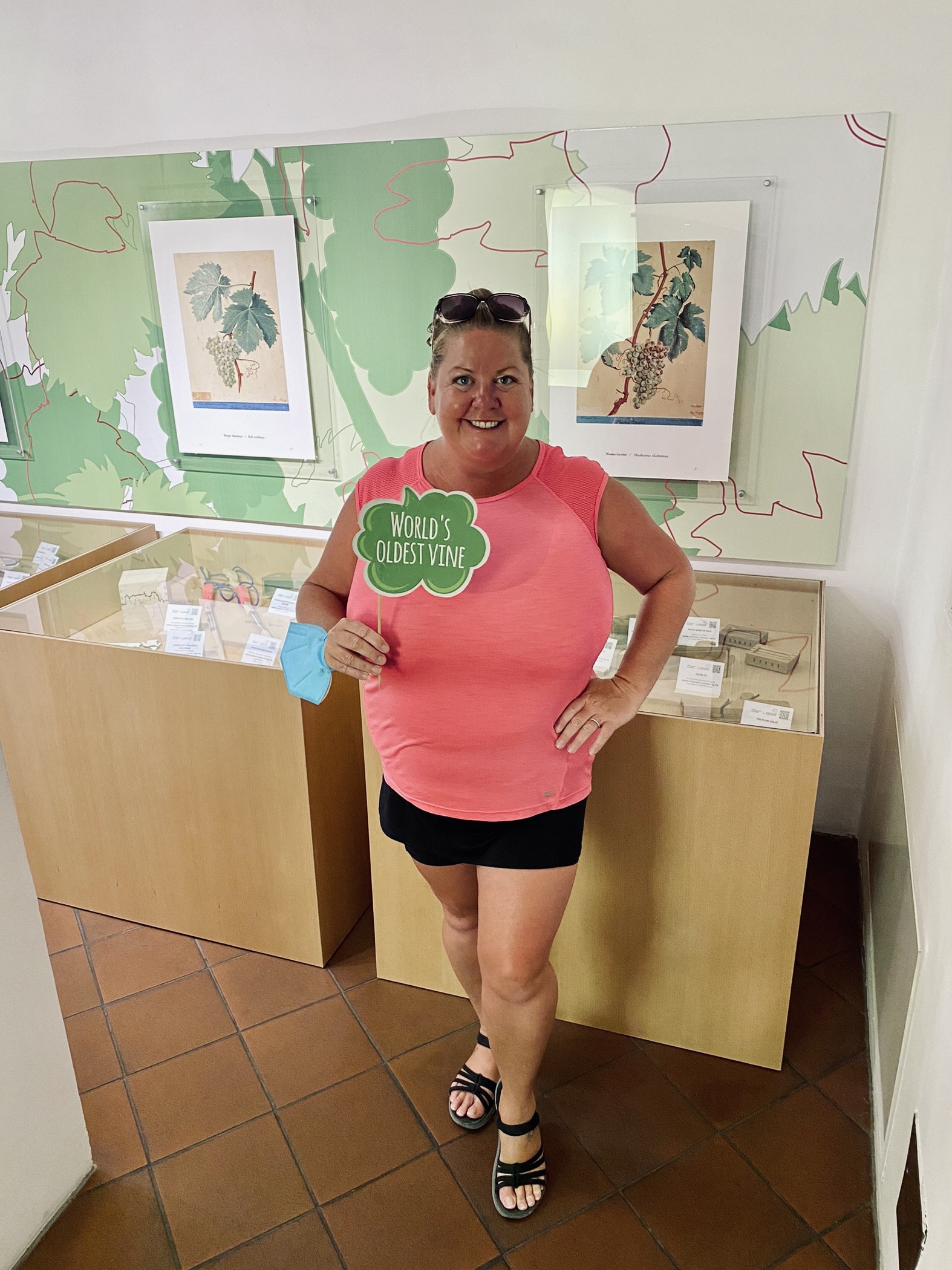
We had a large lunch and then spent the afternoon at the National Liberation Museum of Maribor. The permanent collection (indoors and in the yard) mostly displays the Slovenian struggle against the Nazis and Fascists in World War II.
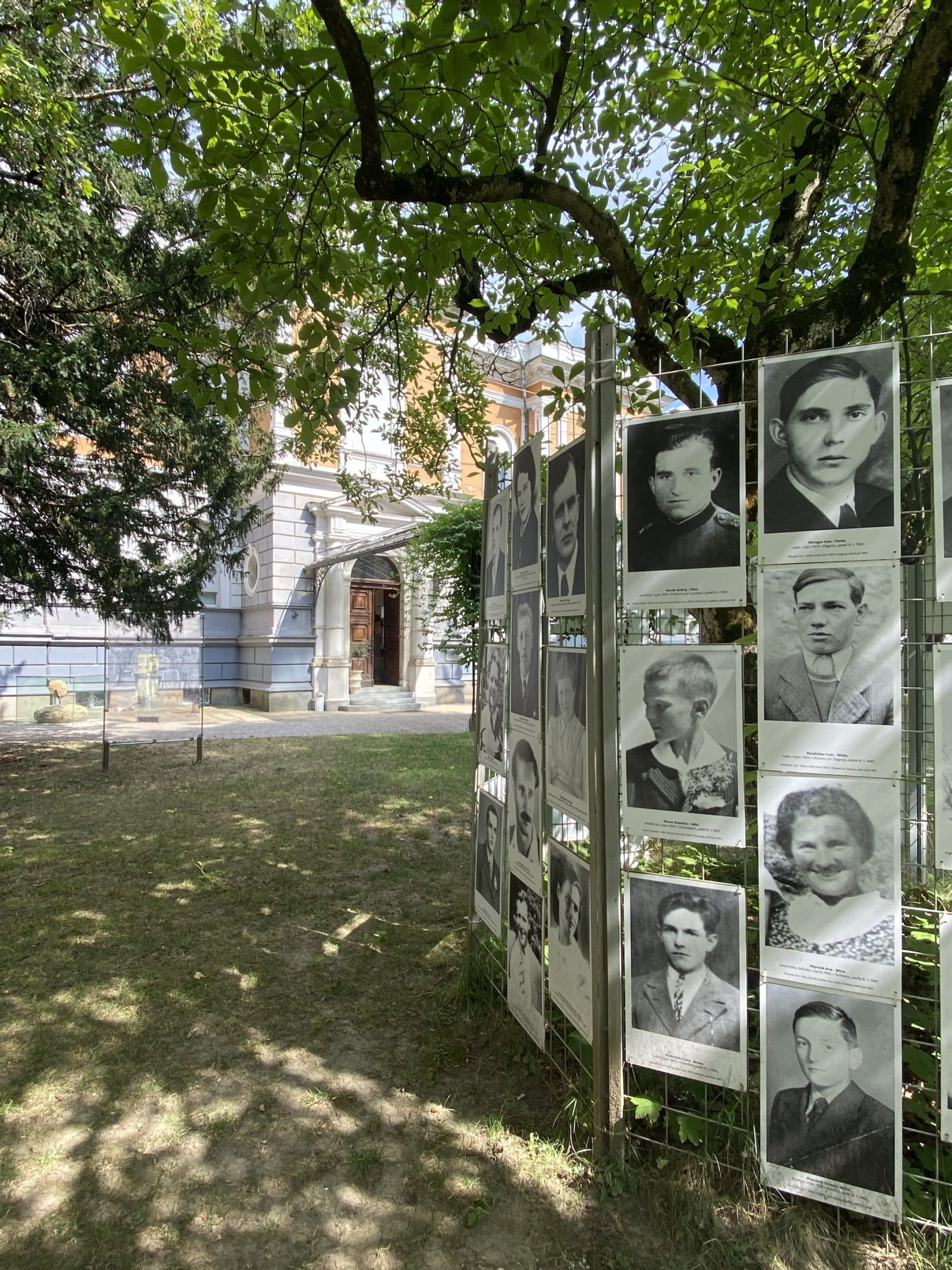
A temporary exhibit added to this by showing the effects of Slovenian deportation by the Nazis, who intended to push the Slavs south and Germanize the area. We only had an hour or two to look it over before closing, and we found ourselves needing to rush through the vast amount of material. But we were able to see one of the other exhibits on liberation: the skateboard scene in Maribor and how skating affected the youth in 1980’s Communist Yugoslavia.
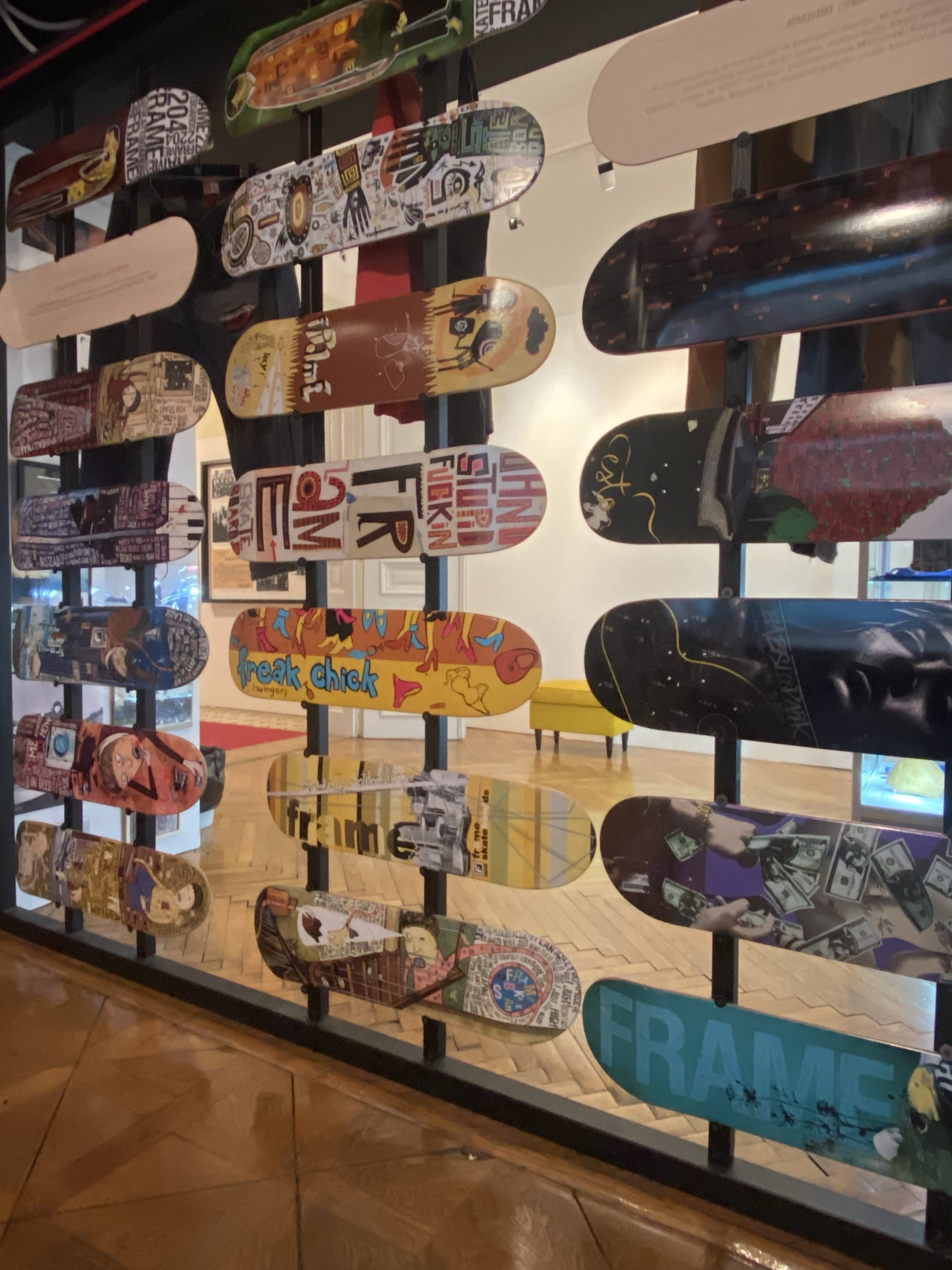
Like Ljubljana, there is plenty to do: we saw posters for festivals, night-time concerts, and house music spinning at an indoor/outdoor dance club in the courtyard of what appeared to be an office building. We were just passing by and one of the DJs invited us in to the courtyard to have a beer and chat because he “wanted to talk to Americans”. He was a nice kid and it was fun to hang out with some locals before heading back to the train station.
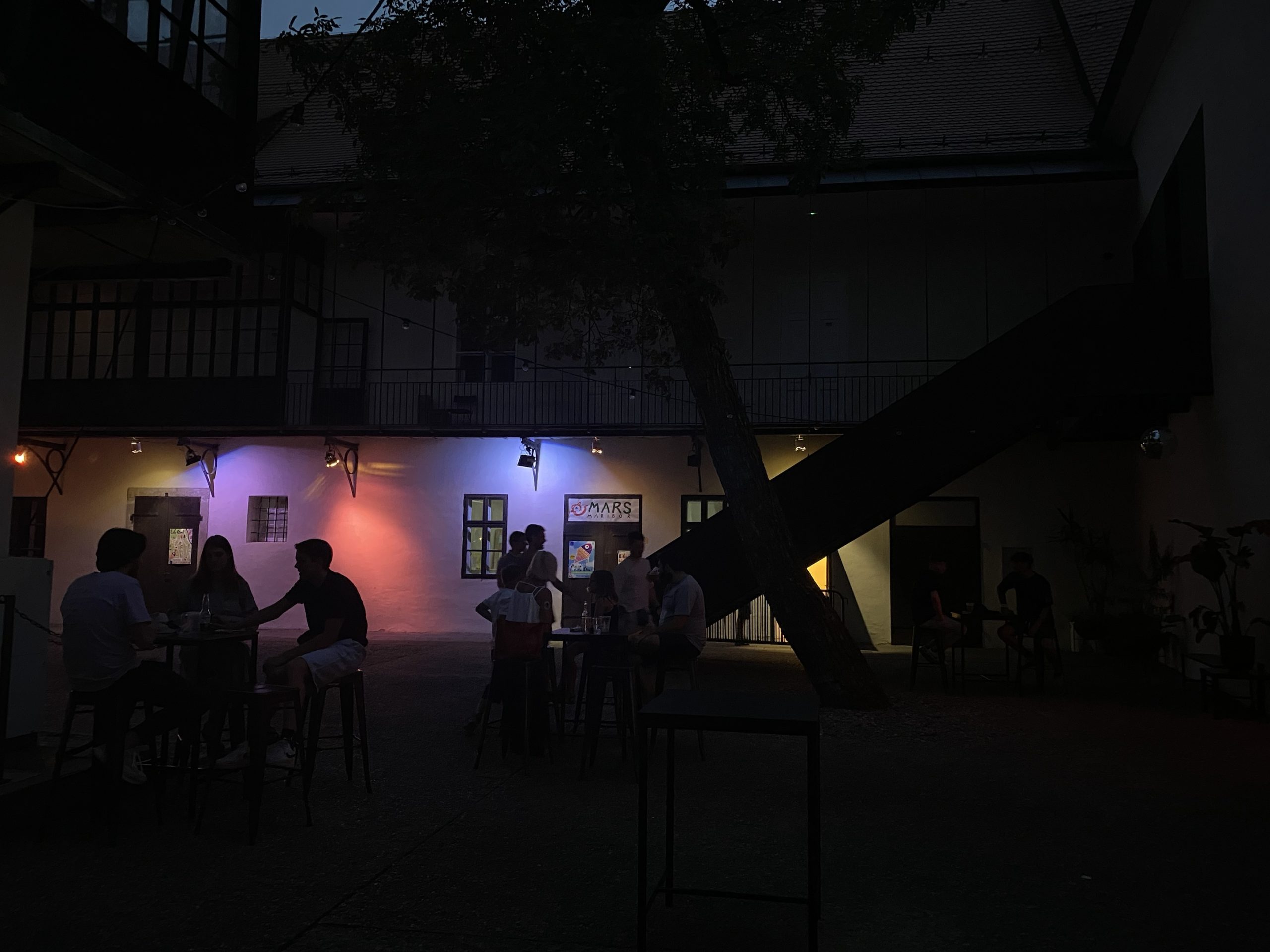
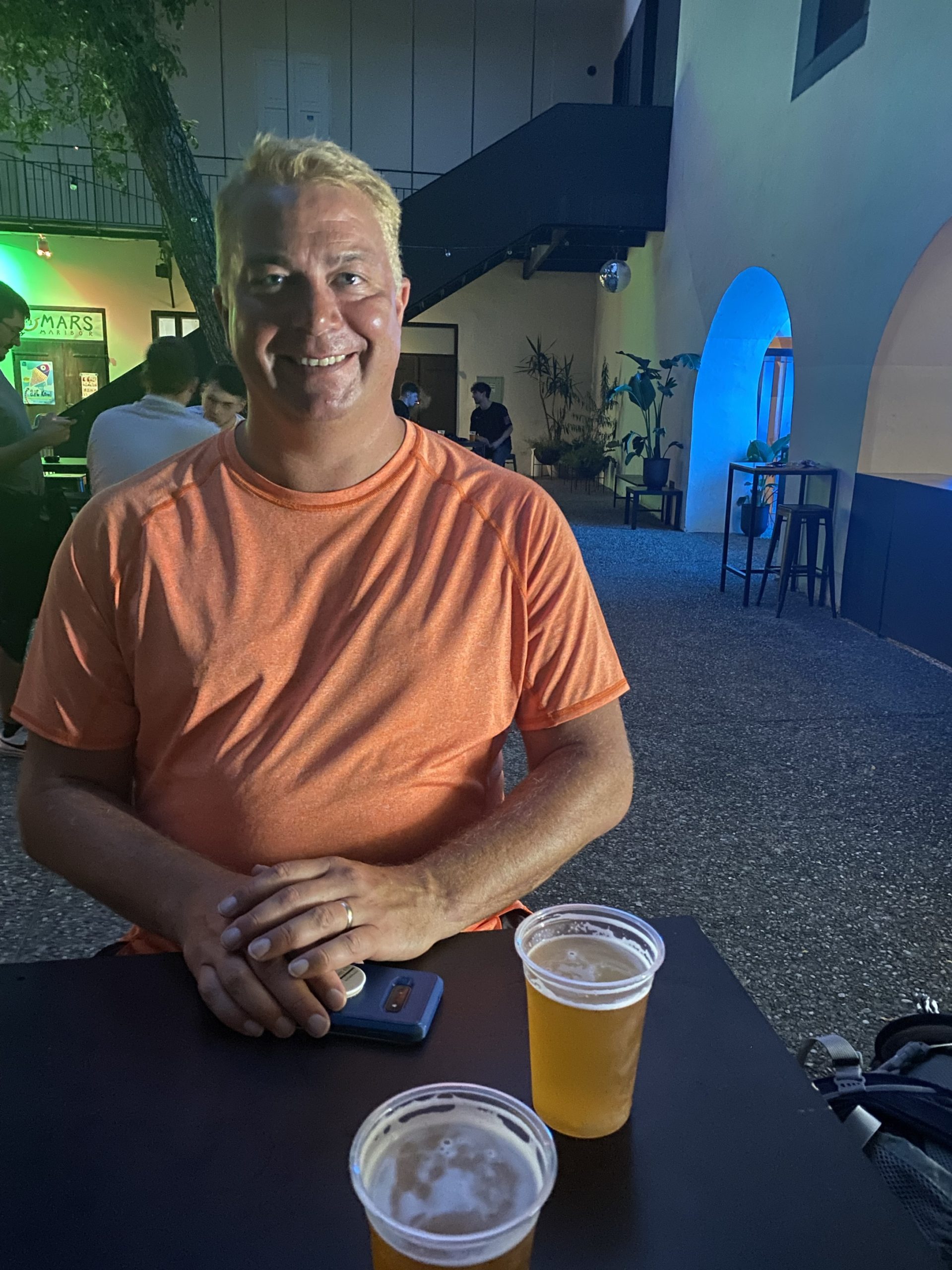
In sum:
Slovenia is a small country by area, and it is very easy to use the train system to get around. Use their website, as we found that Trainline and other aggregators did not show the schedules accurately, nor did Google Maps. We would return again to Slovenia, allowing for more time to explore the outer neighborhoods of Ljubljana, some of the wine country, and spend some time on the coast. Maybe we will see you there!
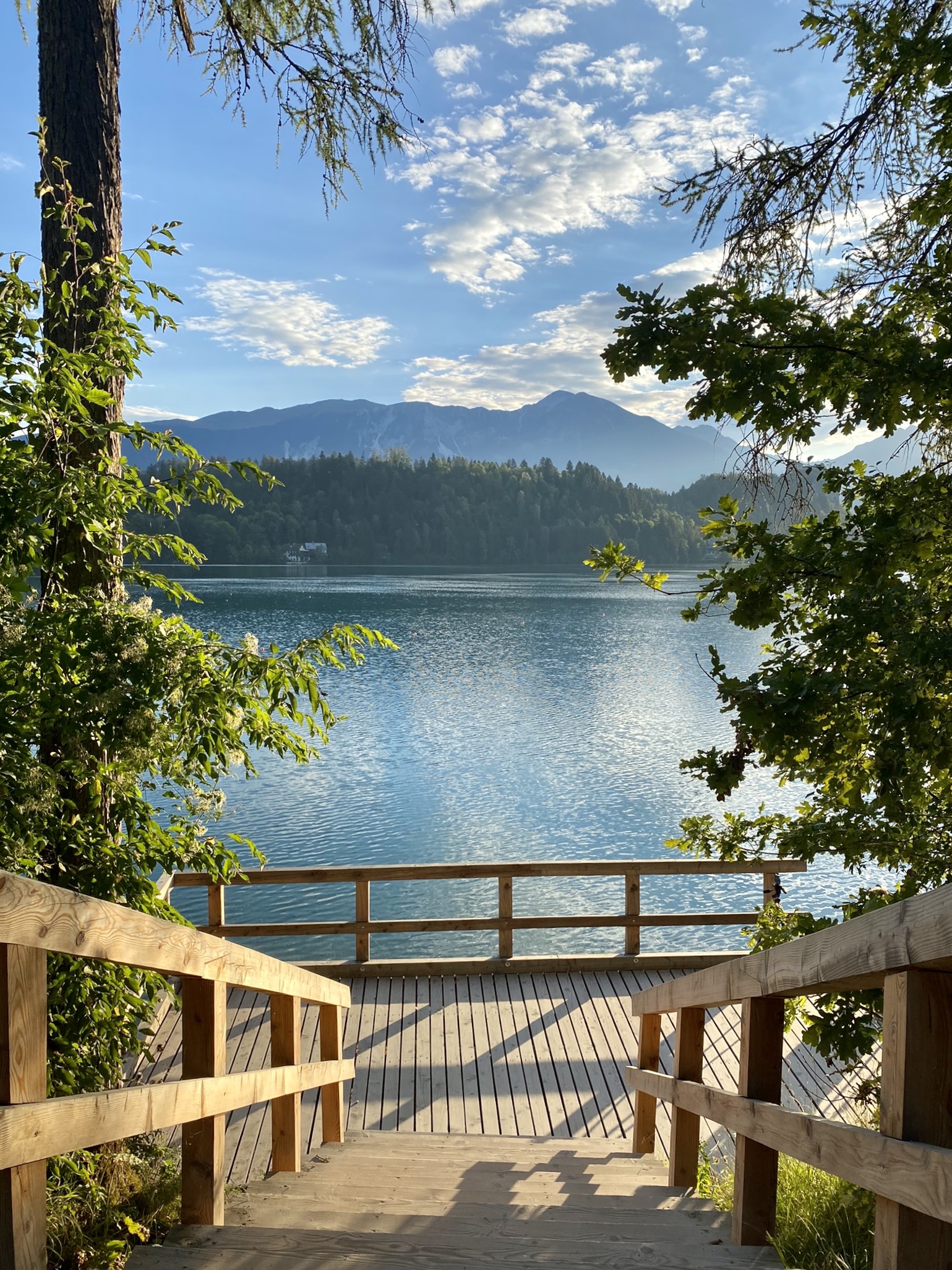
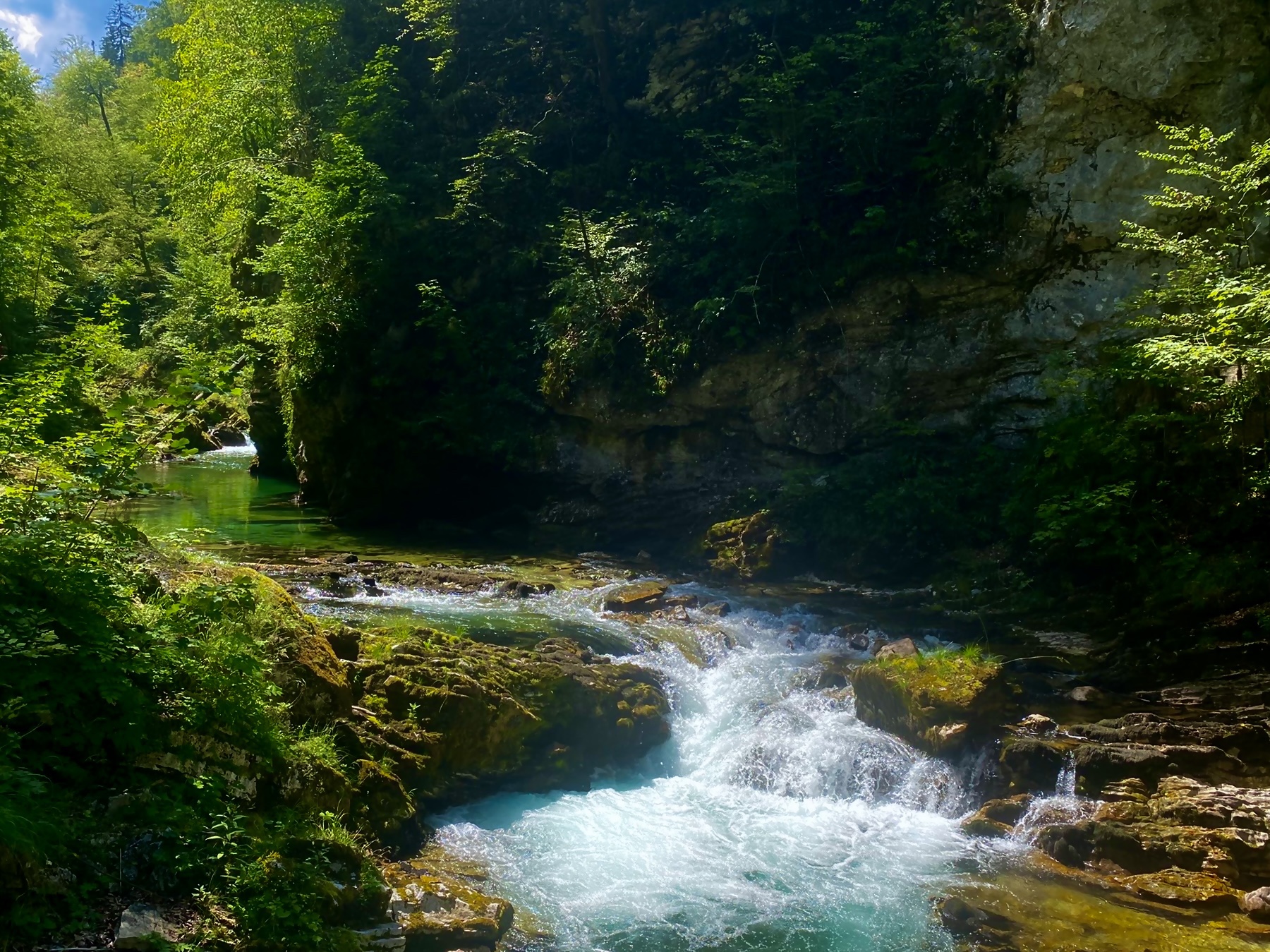
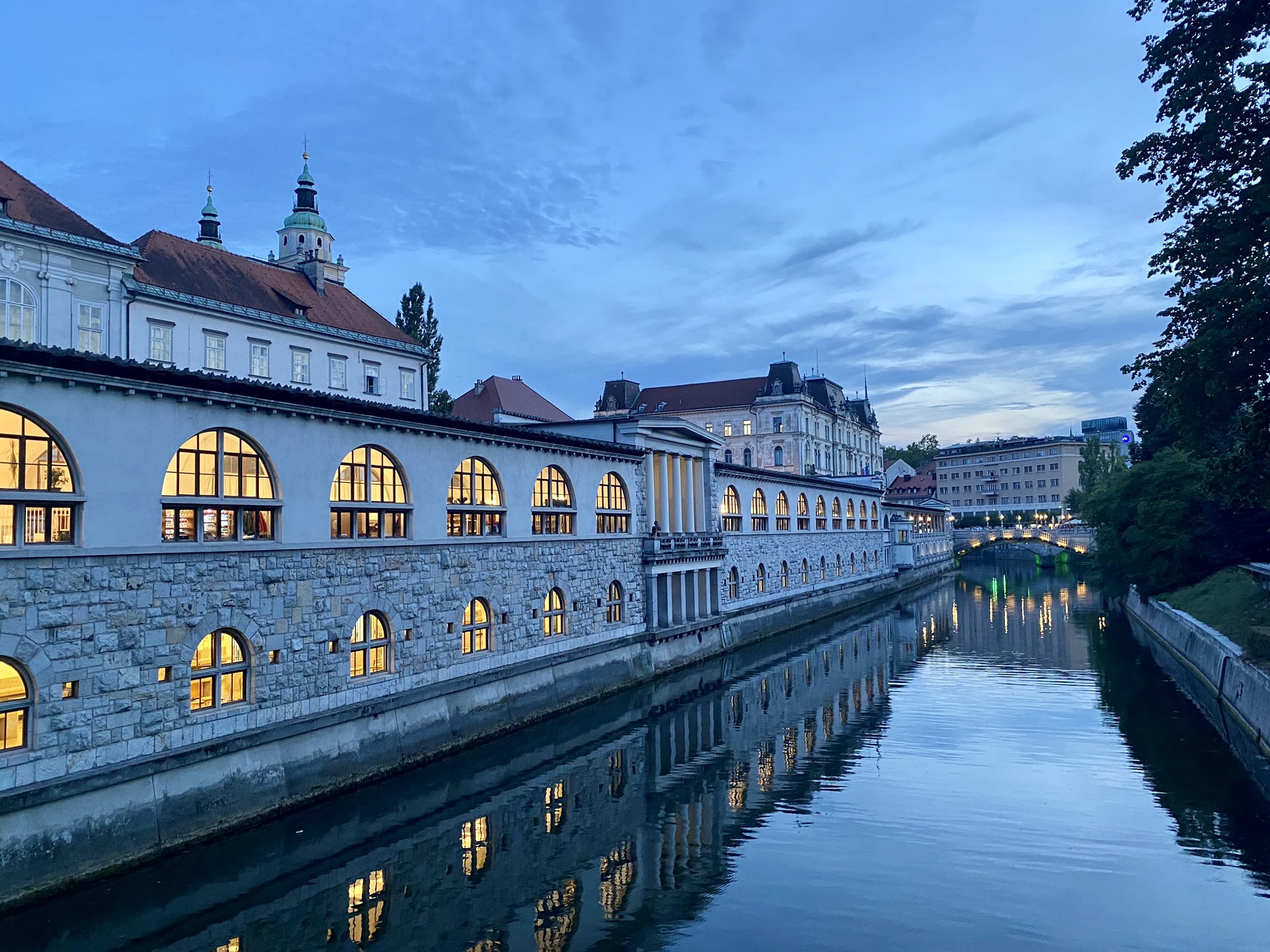
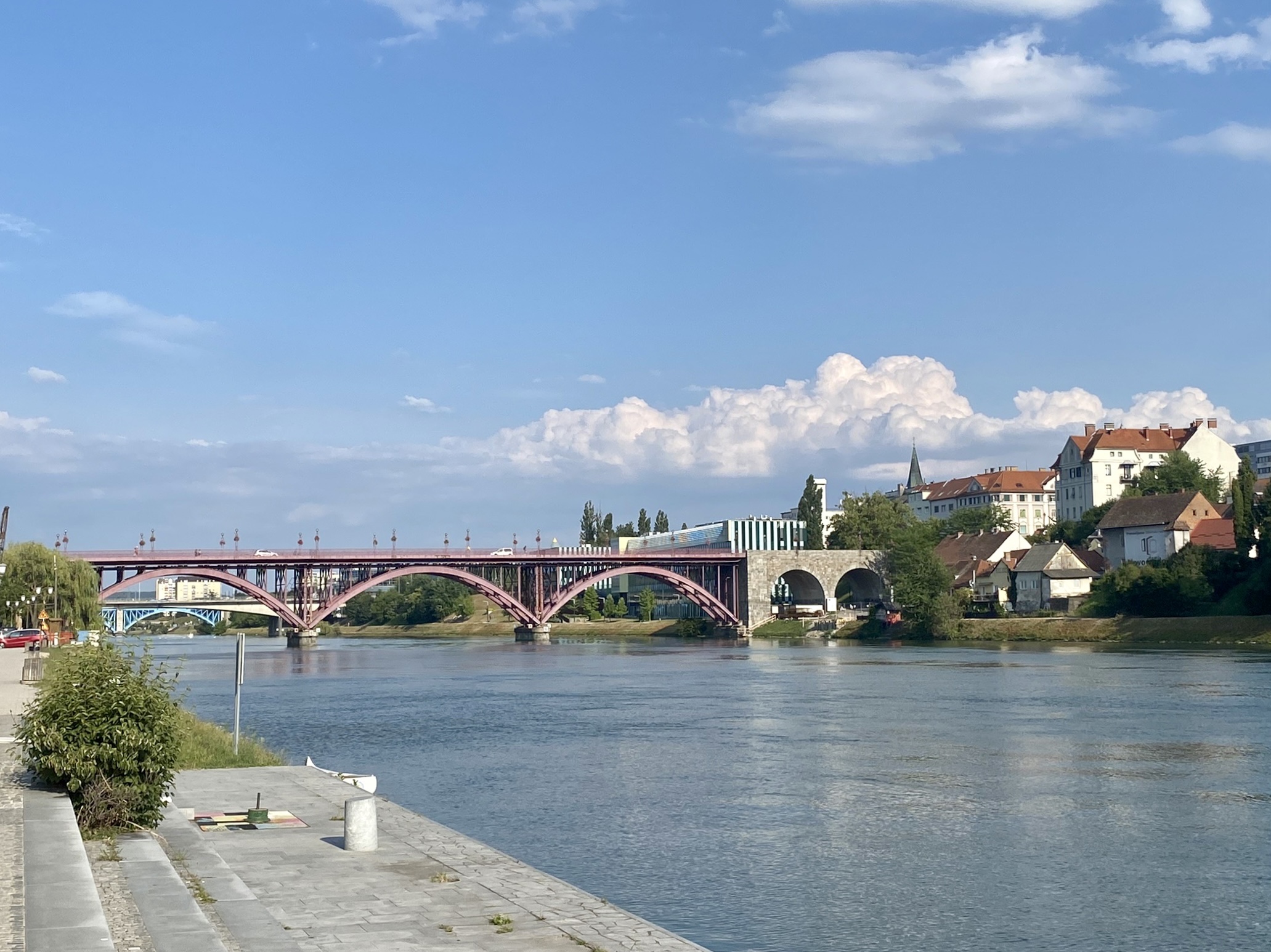
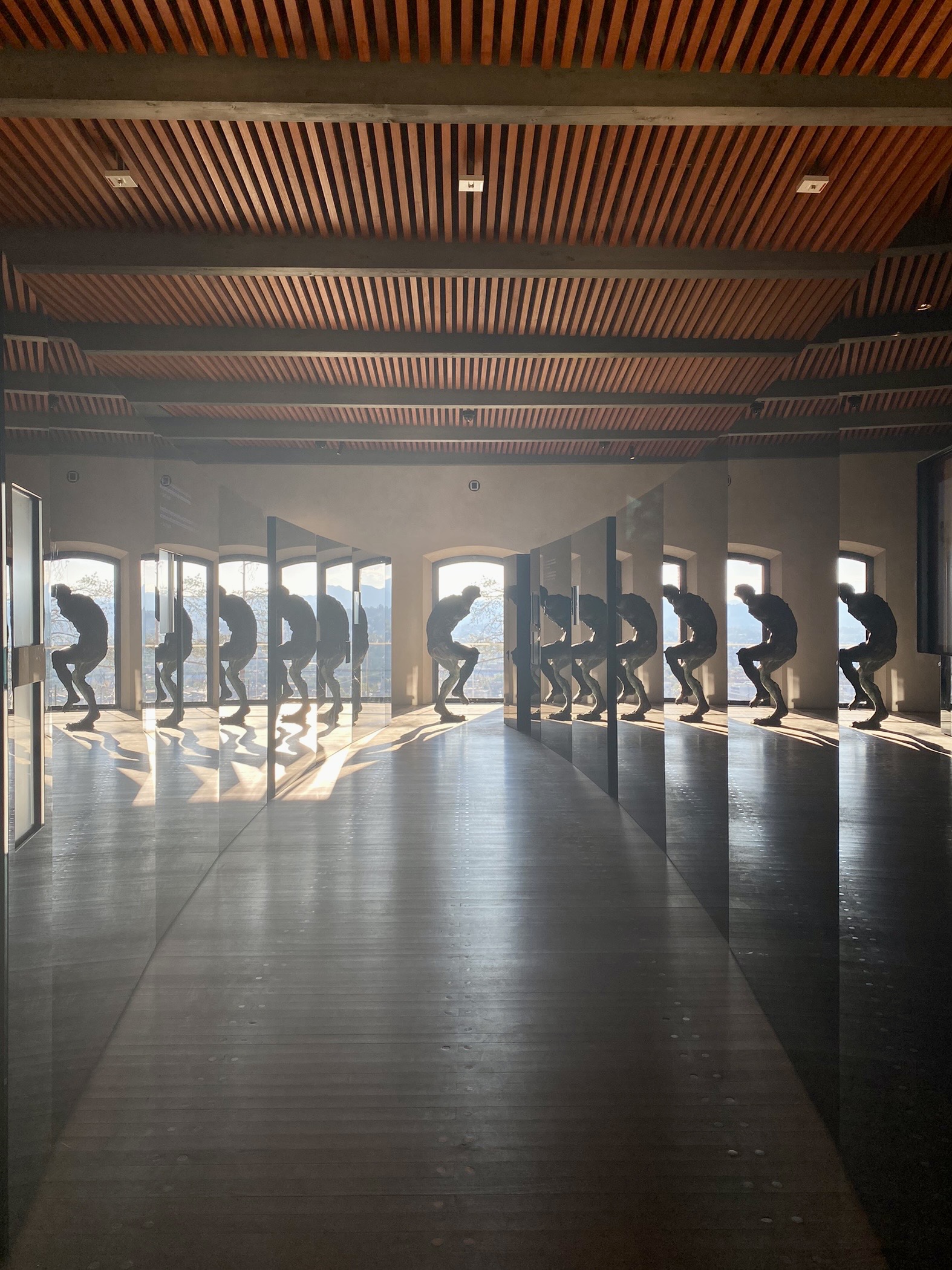
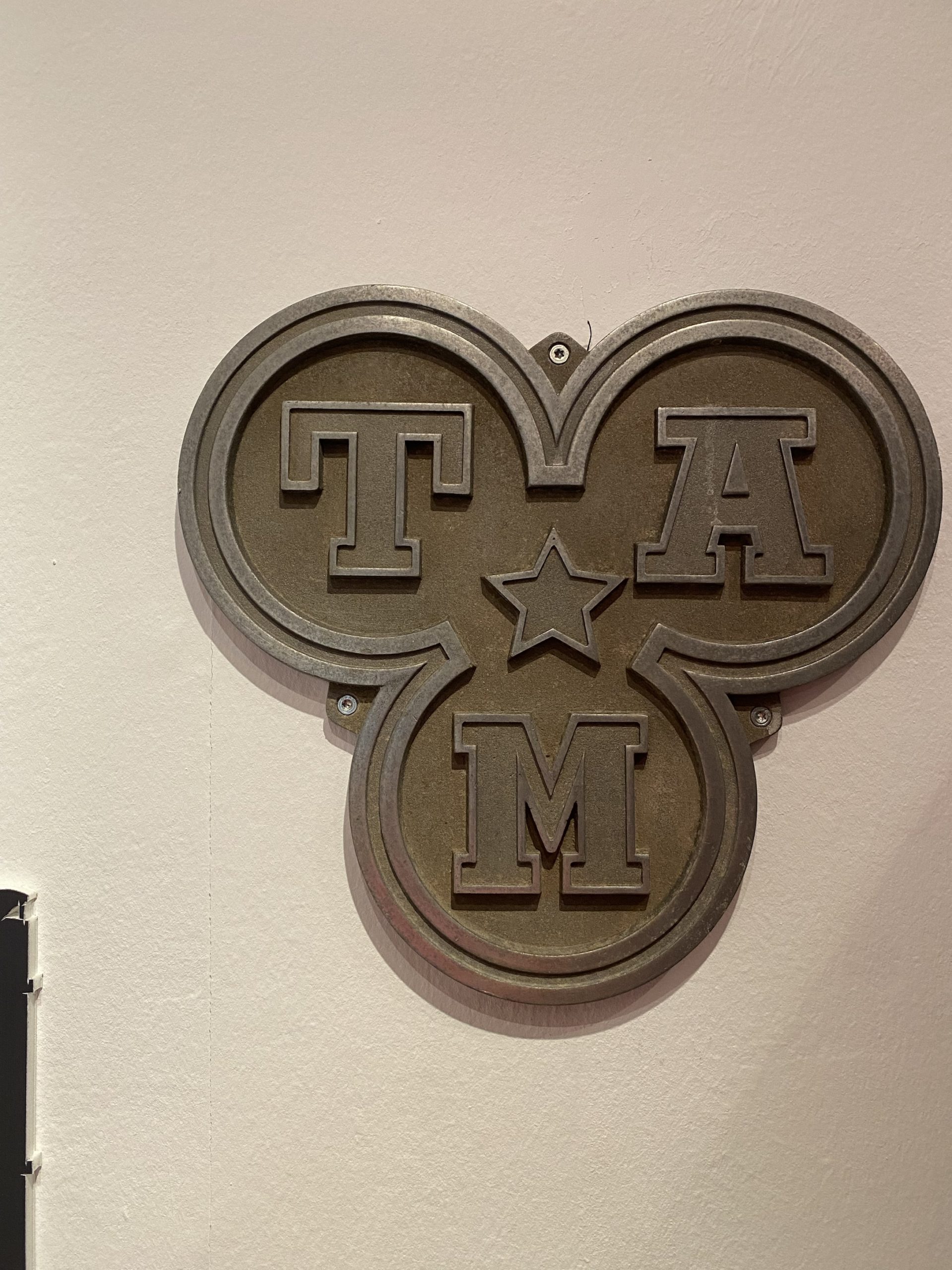
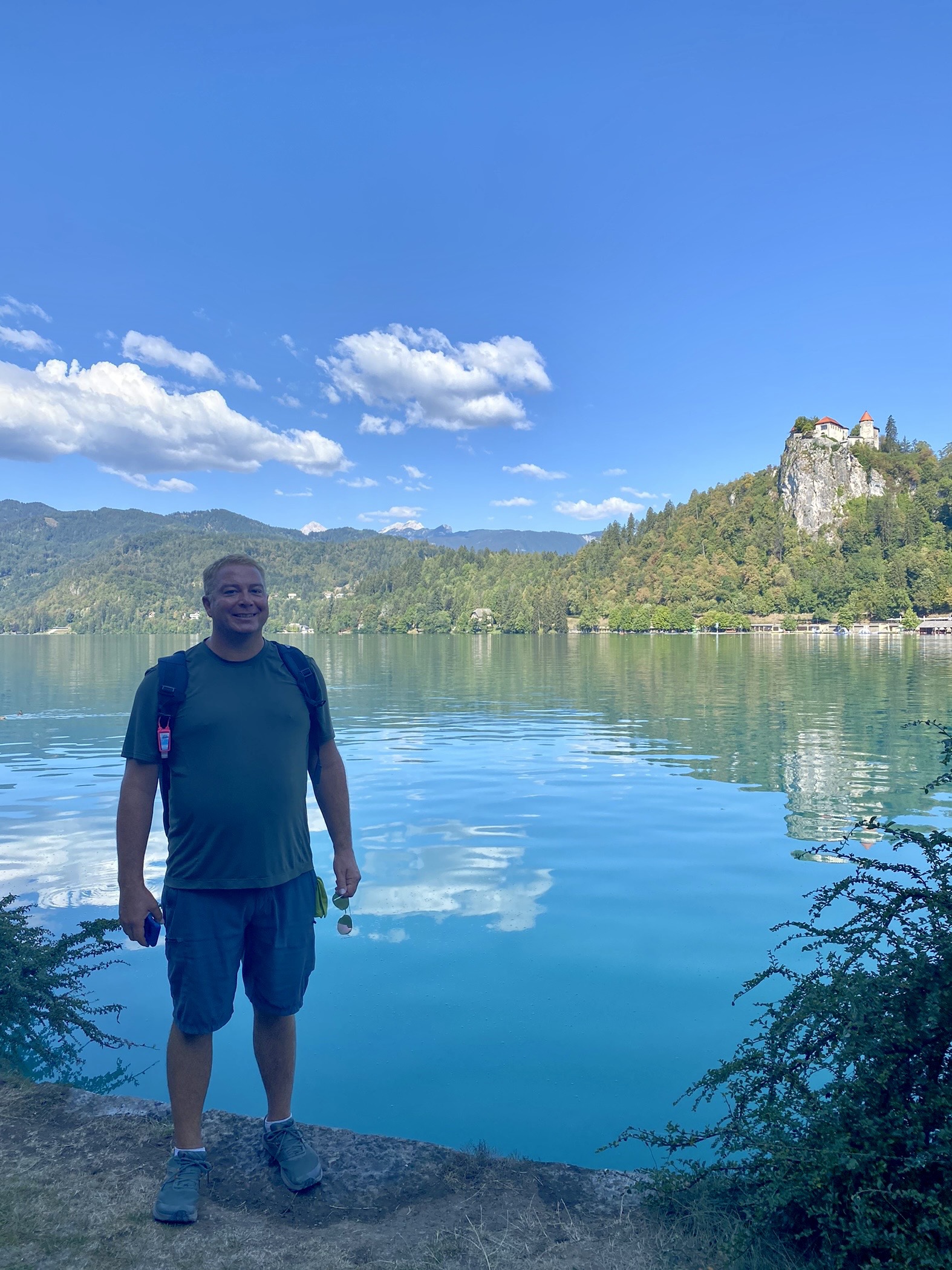
What a beautiful place guys. When the locals speak solid English it does add a different dimension to the experience. When they are friendly too, it makes a huge difference. Wasp and No-See-Ums can be a bit pesky but any natural beauty seems to come hand in hand with these guys. Excellent post!
Ryan
Thanks! Wasps and no-see-ums are annoying but does seem like a good trade off for the scenery!